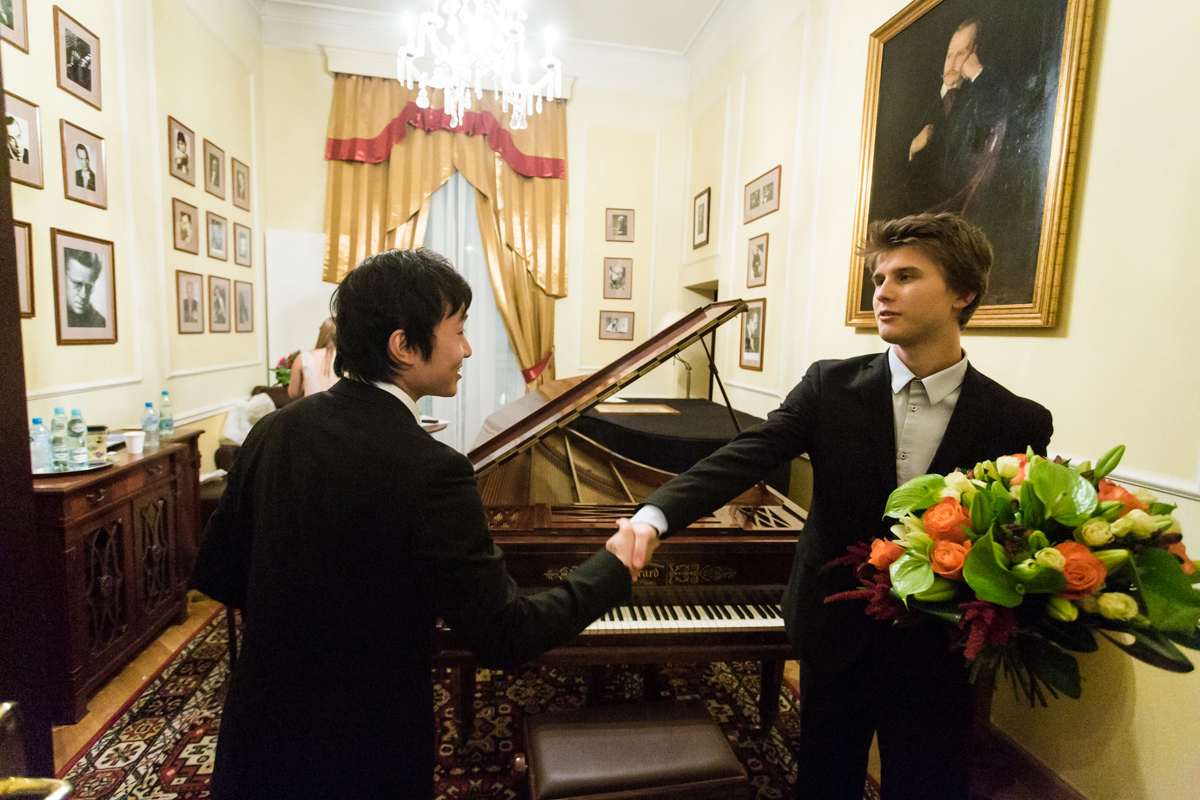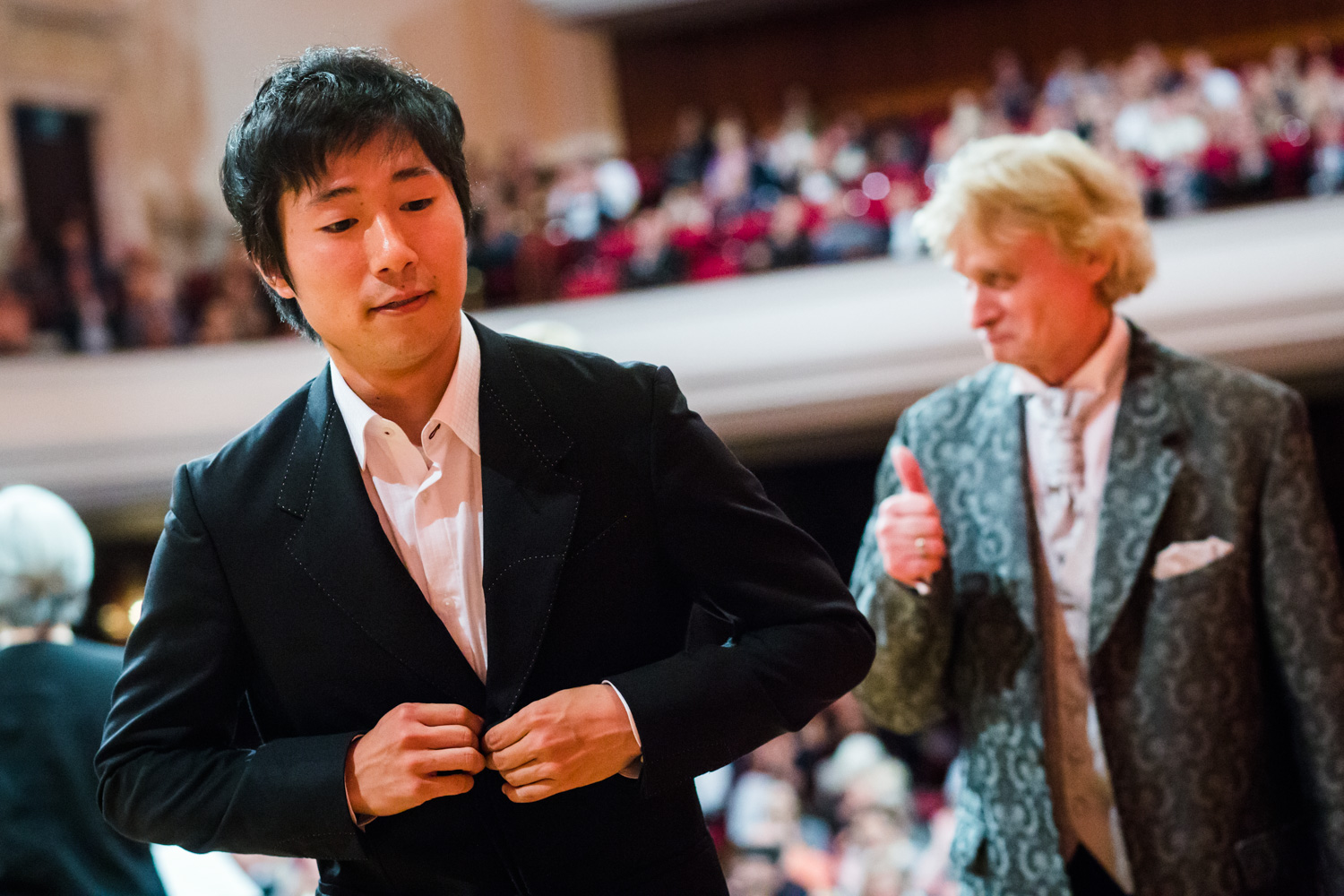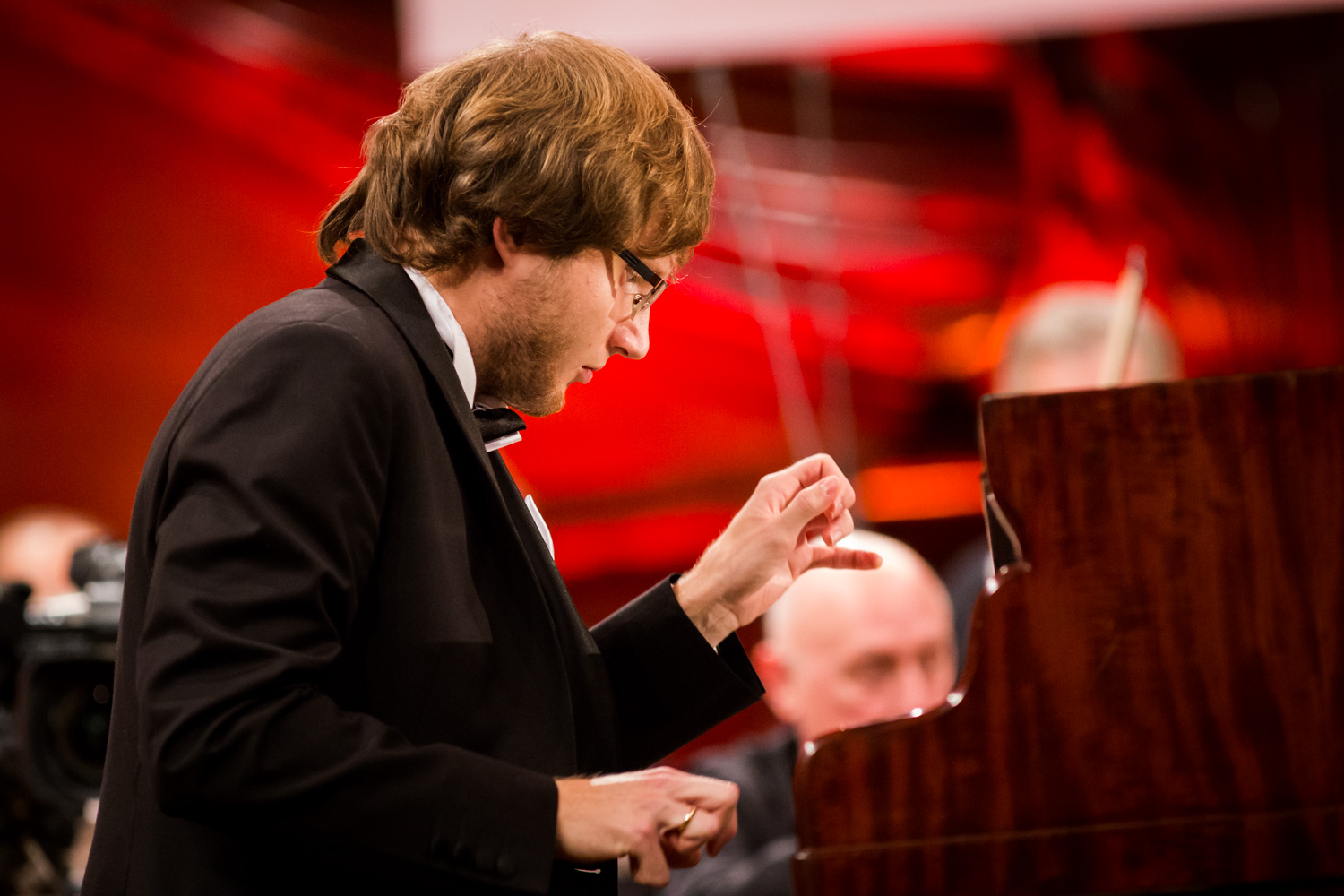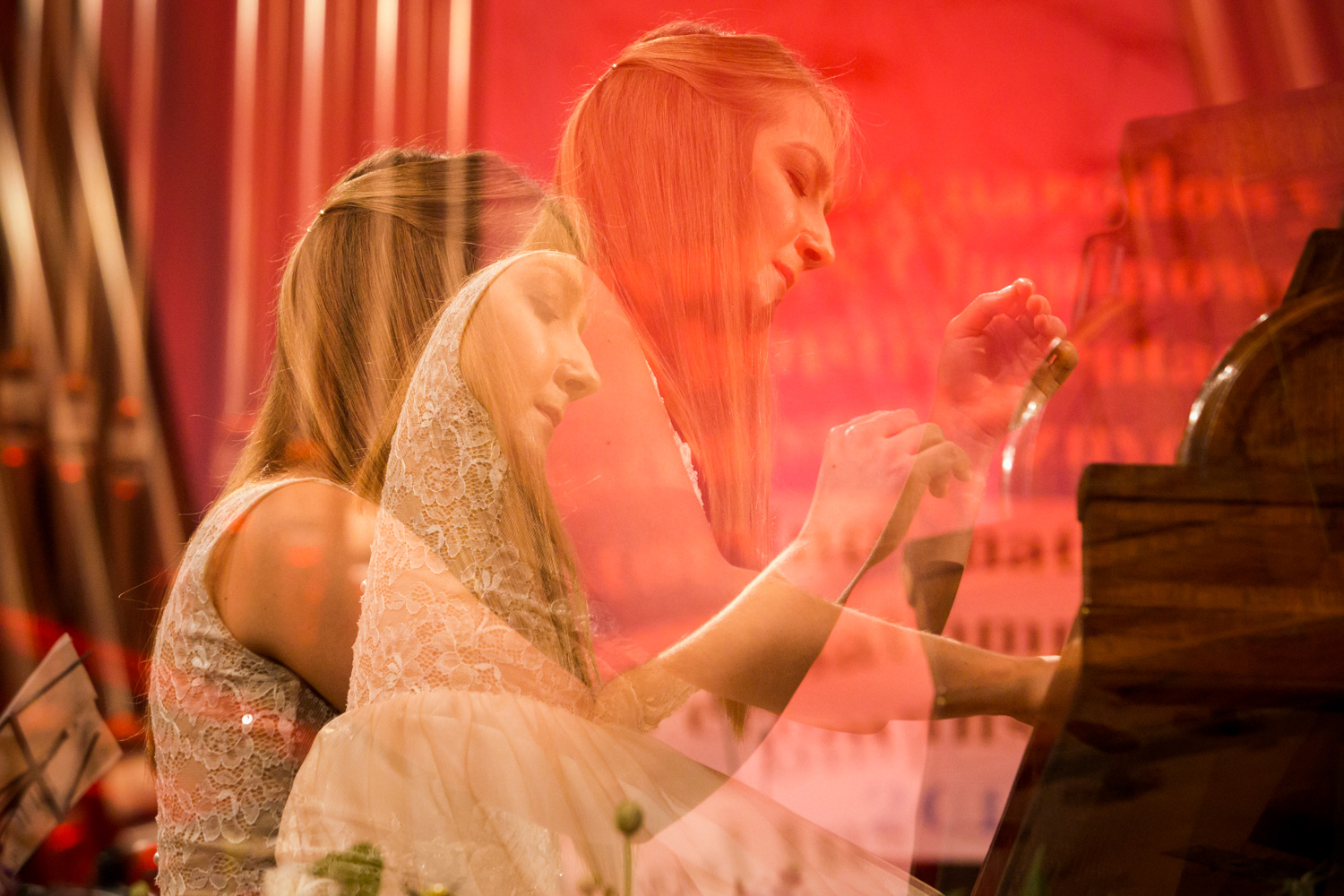The 2nd. International Chopin Competition on Period Instruments
The Competition will be held for the second time from 5 to 15 October 2023, again at the Warsaw Philharmonic
https://iccpi.pl/en
A Different Virtuosity
From the Reviewer’s Notepad
To view the profile of Michael Moran, the author of ‘From Reviewer’s Notepad’ click his name on the left
Incidentally at home in Warsaw he has an 1844 Pleyel pianino No: 11151 (the type Chopin composed on in Valldemossa) restored by David Winston of the Period Piano Company in Kent and a David Rubio copy (Duns Tew) of the 1745 Johannes Daniel Dulcken harpsichord in the Smithsonian Collection
He has a passionate interest in period instruments and the performance practices associated with them. He seriously studied both piano and harpsichord in London
For my Final Report, Highlights and Conclusions on this Competition
http://www.michael-moran.com/2018/09/final-report-and-highlights-of-1st.html
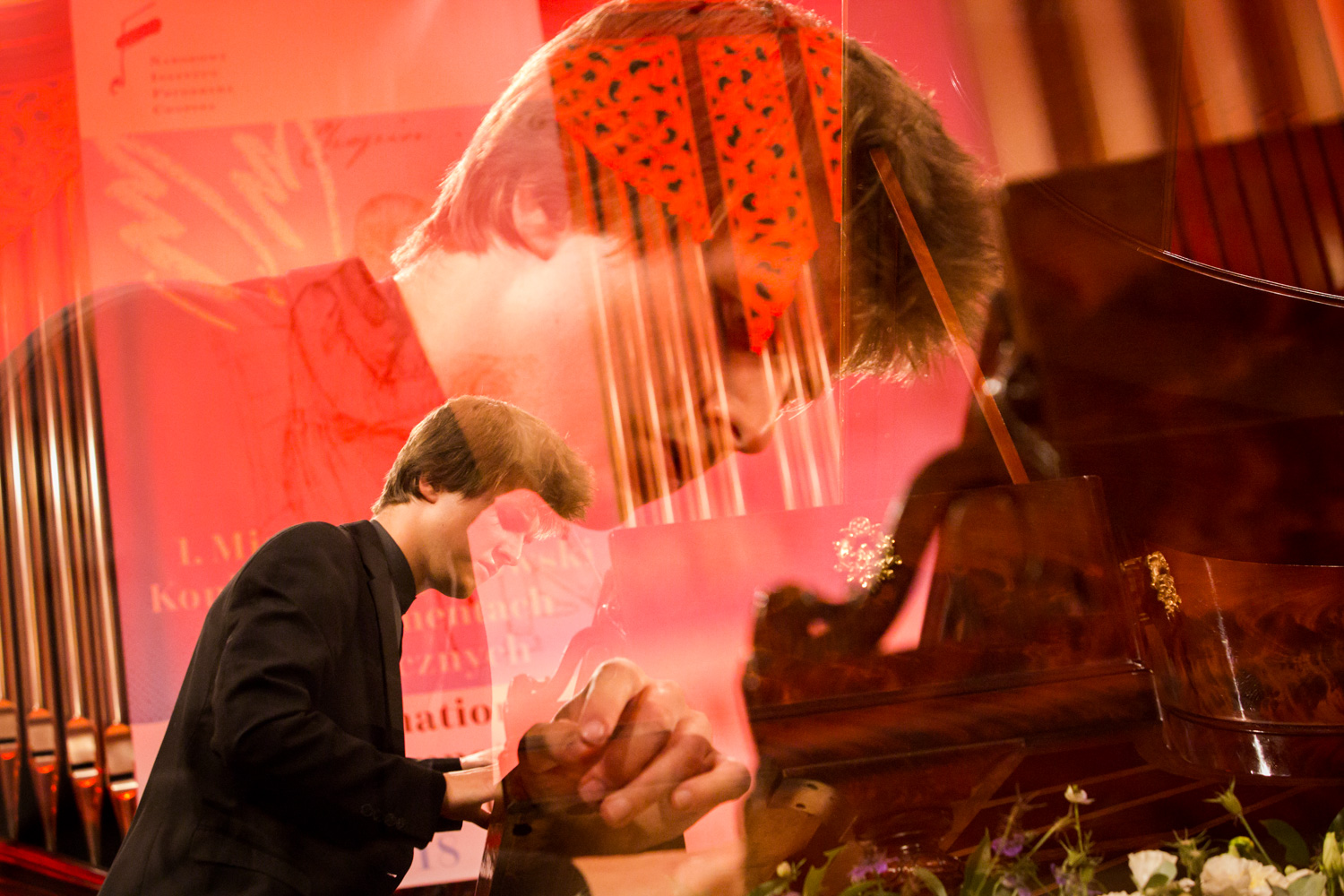
Tomasz Ritter
has won the First International Chopin Competition on Period Instruments.
Main Prizes:
1st prize (15 000 €) – Tomasz Ritter (Poland)
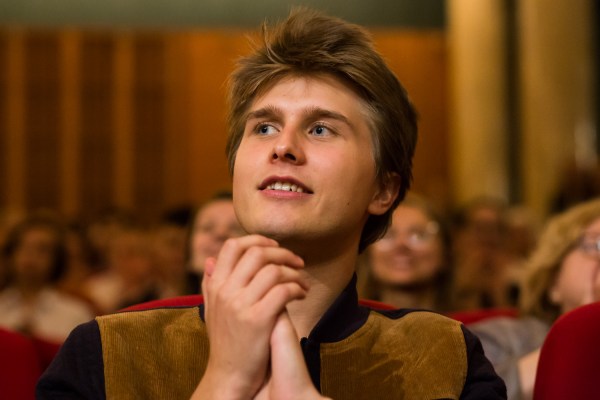
2nd prize ex aequo (10.000 €) – Naruhiko Kawaguchi (Japan), Aleksandra Świgut (Poland)

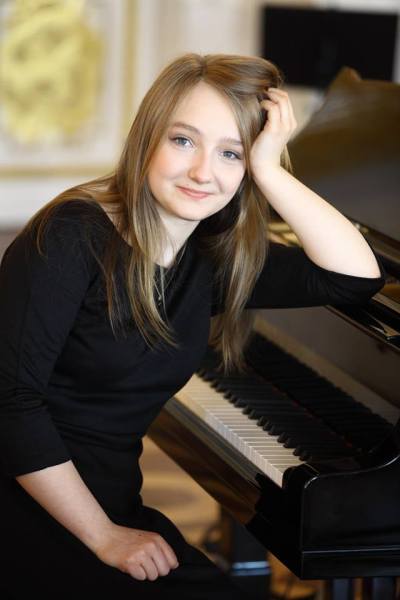
3rd prize (5 000 €) – Krzysztof Książek (Poland)
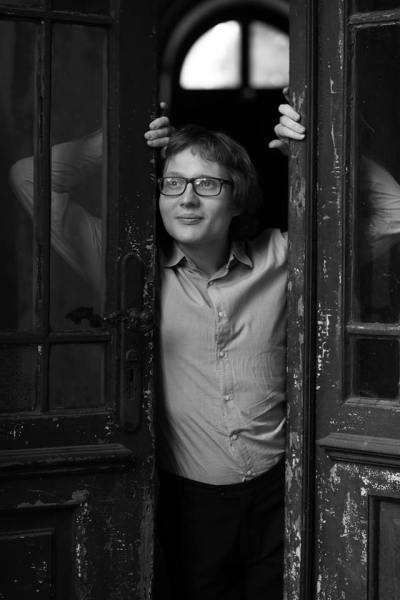
Honorable mentions: Dmitry Ablogin (Russia), Antoine de Grolée (France)
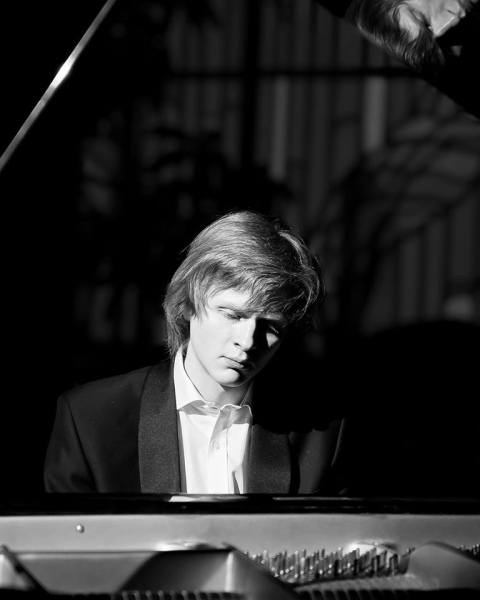

Special prizes:
Special Prize for the best performance of Mazurkas, founded by the Polish Radio (3000 €) – Krzysztof Książek (Poland)
Extra-statutory prizes:
Prize for the First Prize Winner; founded by: “Siemaszko” company, based in Szczecin (10 000 PLN ) – Tomasz Ritter (Poland)
PKN Orlen prize for the pianist representing Poland most highly rated by Competition Jury (€5000) – Tomasz Ritter (Poland)
An exciting award ceremony full of youthful joy!
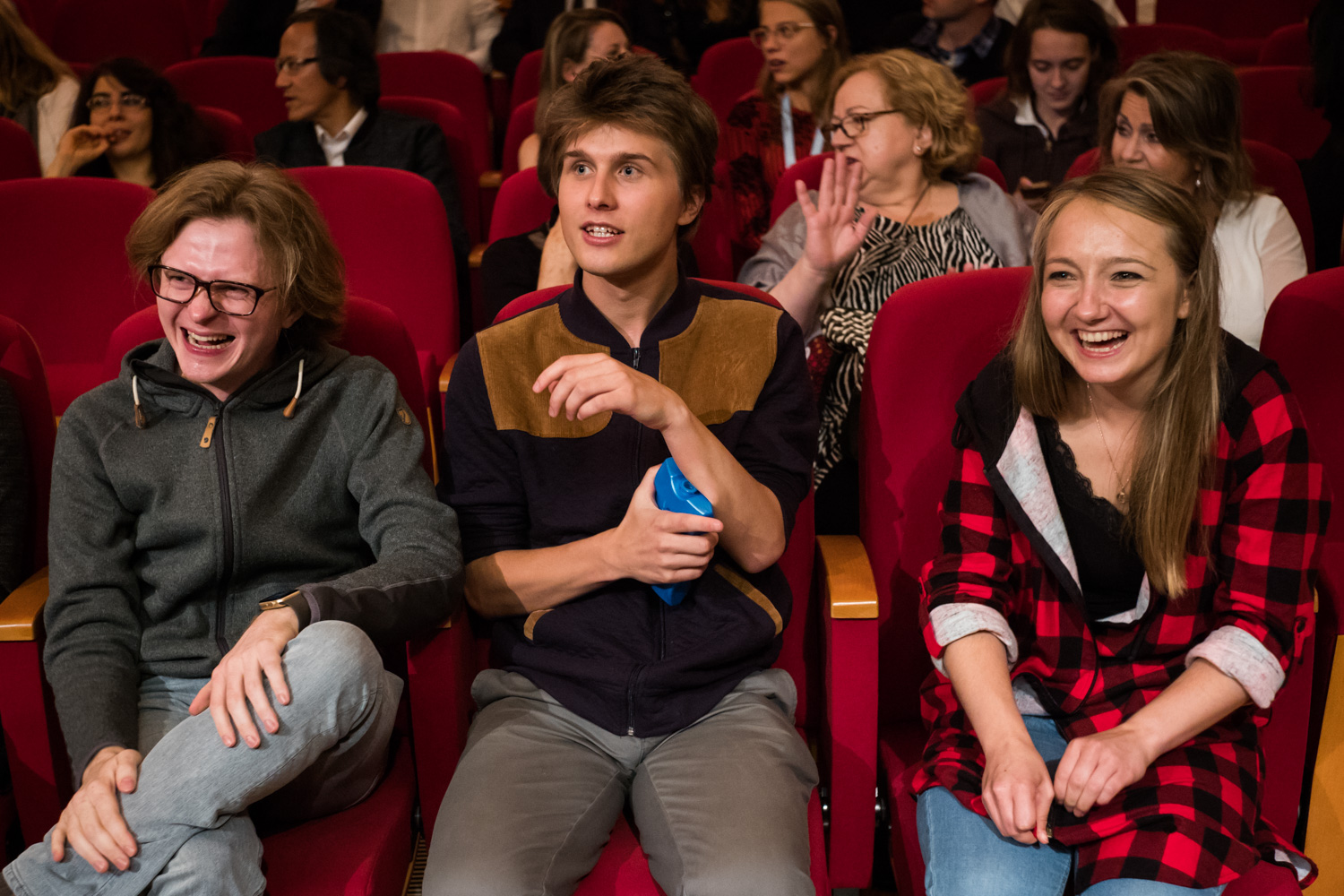
Those of you generous enough to read my commentary will be aware of my feelings concerning Tomasz Ritter and his fine musicianship from my hearing of his very first notes at the outset of his remarkable Stage I recital
The other places were fairly predictable except Dimitry Ablogin whom I feel is a significant artist with a remarkable ability to re-imagine and recreate familiar works by Chopin and deserved a higher award
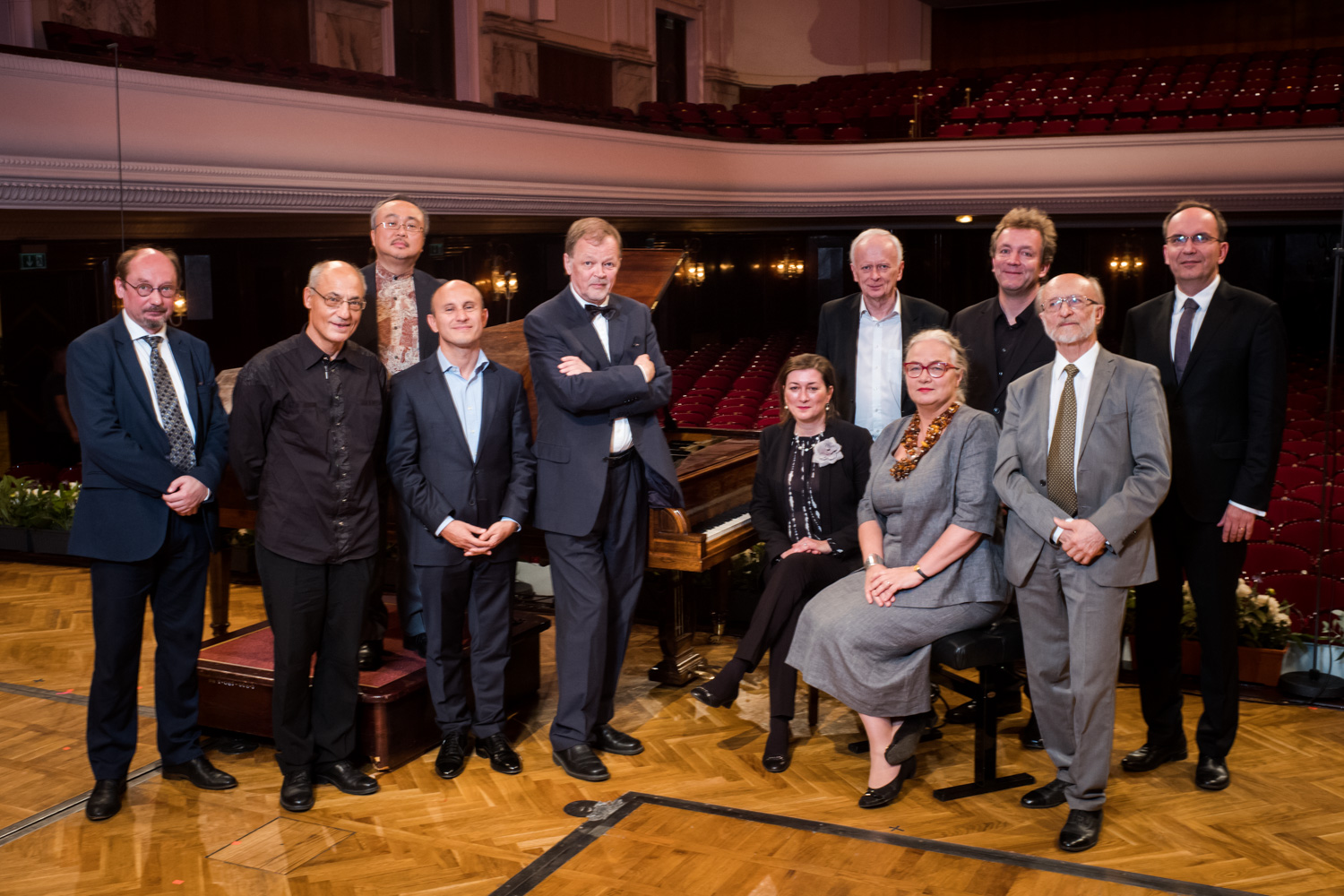
Concerning the ‘Time Machines’ I must acknowledge the generosity and dedication of the Edwin Beunk (owner, restorer and competition tuner of the 1837 Erard and the 1842 Pleyel) and Paul McNulty builder of the extraordinary Buchholtz copy, a piano so beloved of Chopin in his youth
For Stanisław Leszczyńsky, the Artistic Director of the National Fryderyk Chopin Institute and the Director Artur Sklener, staging the Competition was the realization of a long held ambition
Congratulations to all those young people who have won prizes and also to those who fell by the wayside on this artistic journey forward
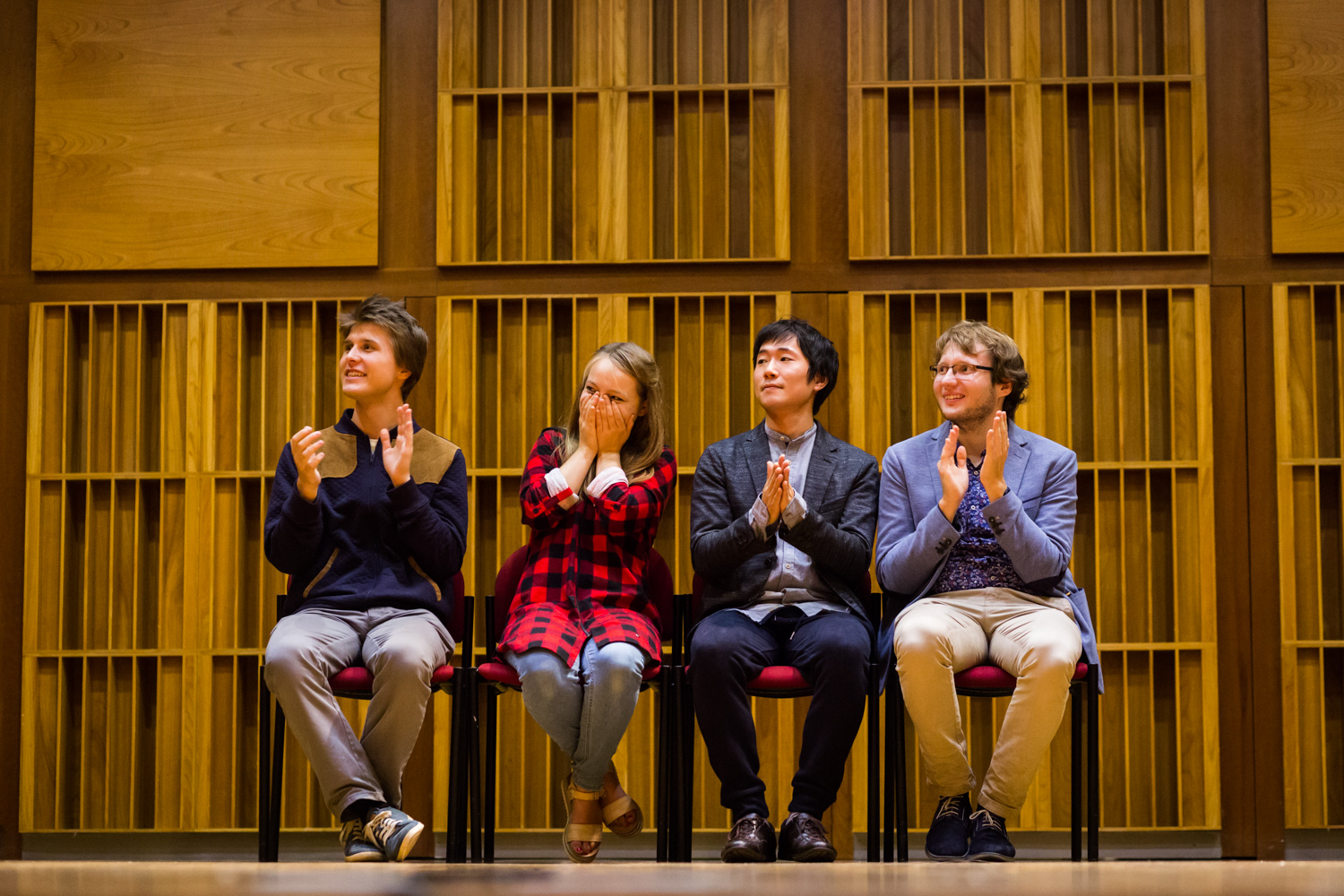
Photographs by Wojciech Grzedzinski/NIFC or Darek Golik/NIFC
The Period Instruments used in the Competition
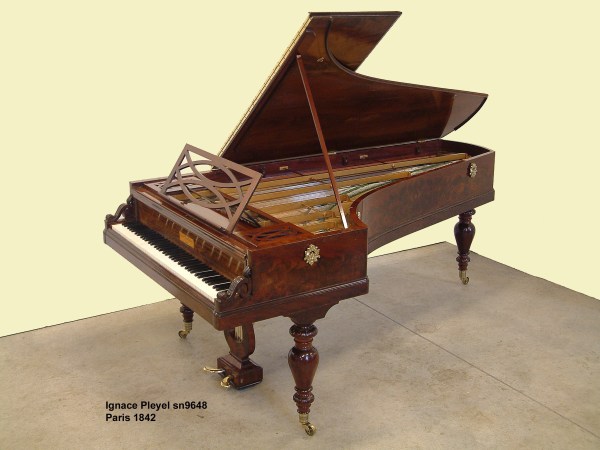

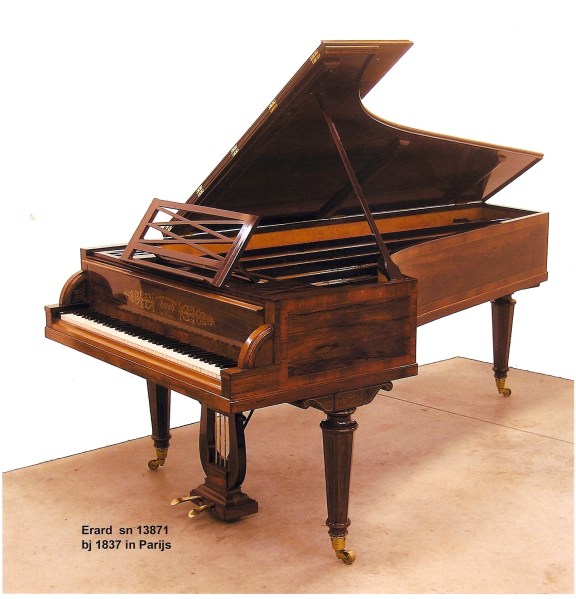



Photographs by Wojciech Grzedzinski/NIFC or Darek Golik/NIFC
Laureates Concert September 14
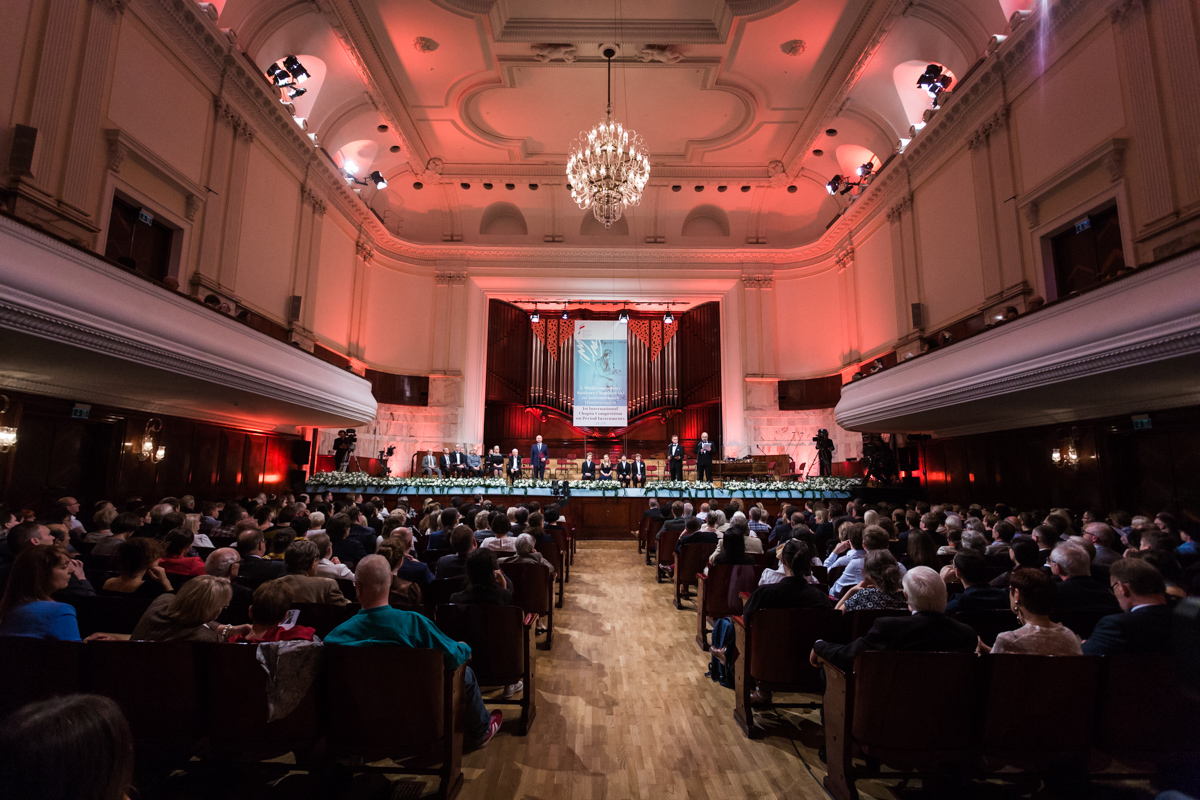
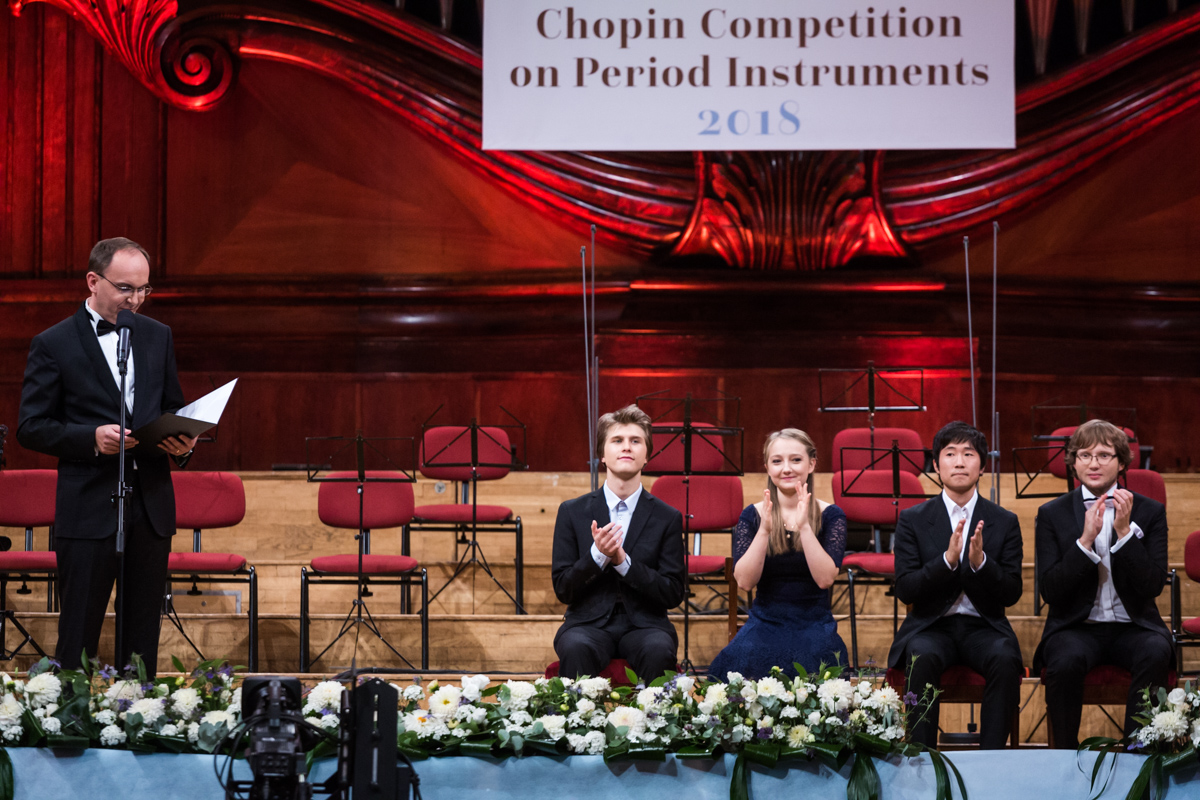
Finals Day 1 September 12
6:00 PM Dmitry Ablogin (Russia)
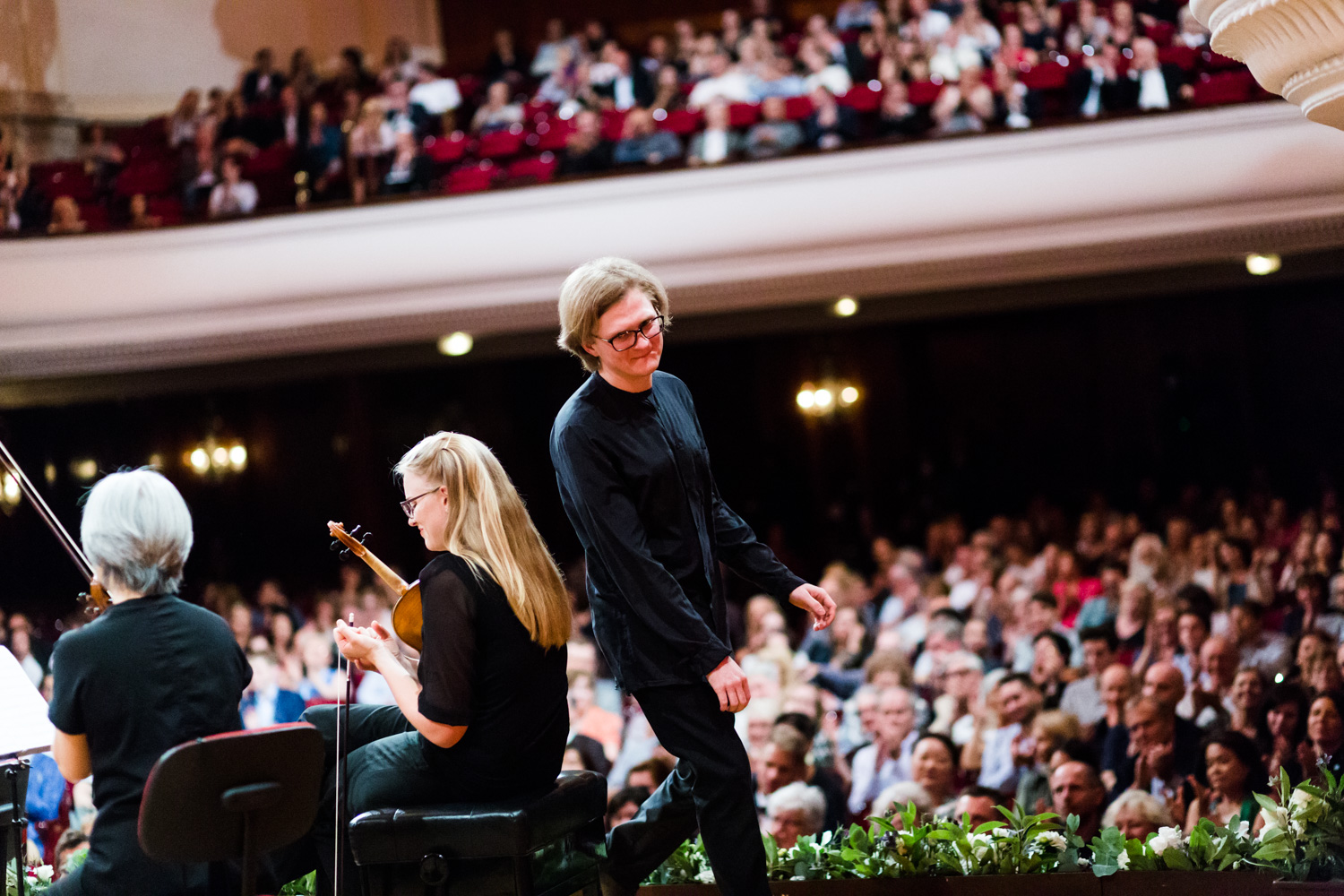
I have always considered the Orchestra of the Eighteenth Century the perfect ensemble for the Chopin piano concertos. I remember with great fondness the performances in the Chopin i jego Europa Festival under their sadly departed conductor Frans Brüggen (1934-2014). With this orchestra Chopin’s much maligned ‘limited orchestration’ disappears completely as a judgment and in fact it emerges as the superb complement to the soloist.
He began the Maestoso well but it soon became apparent that he had perhaps somewhat underestimated the dynamic range of the Pleyel for this large hall. The sound was not carrying sufficiently and became rather overwhelmed by even this rather small period instrument orchestra. Oddly and tellingly this was a similar observation made on Chopin’s own playing and the instrument he used (a Buchholtz) at the orchestral performance in Warsaw in March 1830. I feel that Ablogin was possibly the only competitor who genuinely attempted to play in the manner described by Chopin’s pupils in the ‘bible’ of Chopin performance: Chopin Pianist and Teacher as seen by his Pupils by Jean-Jacques Eigeldinger (Cambridge 1986). Hector Berlioz described Chopin’s playing as soft as ‘the playing of elves’, even requiring one to place one’s ear against the instrument to hear him!
The conductor Grzegorz Nowak seems not particularly sensitive to the volume of the orchestra in relation to the soloist. I felt he could have achieved a far better dynamic balance between the period piano and the orchestra’s rich period sound which would definitely have assisted Ablogin. Audiences still seem to prefer the ‘thunderers’ even today, but not this listener.
The Larghetto, on the other hand being rather more exposed for the soloist, revealed his superb, refined tone and touch on this Pleyel. The movement was expressively ardent, refined and romantic in character particularly the phrasing. He produced a moving, beautiful cantabile and the eloquent bassoon counterpoint only added to the heartfelt yearning of this movement. Beautiful and finest I would hear.
I found the Allegro vivace similarly refined with a graceful even radiant jeu perlé with most expressive dynamic variations and nuanced presentation. His style brillant had very affecting clarity of articulation. Here we had colour, charm and elegance. His ornamentation of the final phrases was appealing and the fioraturas had the texture of Venetian lace. His introduction of what one might call ‘echo effects’ into the Rondo was also delightful and relieved what can all too easily become (and does) a monochromatic virtuoso exercise.
It is a great shame the dynamic of this performance was rather subdued. I was seated quite close to the instrument so could actually hear what he was achieving although I suspect many could not.
Piano concerto in F minor, Op. 21
7:00 PM Antoine de Grolée (France)
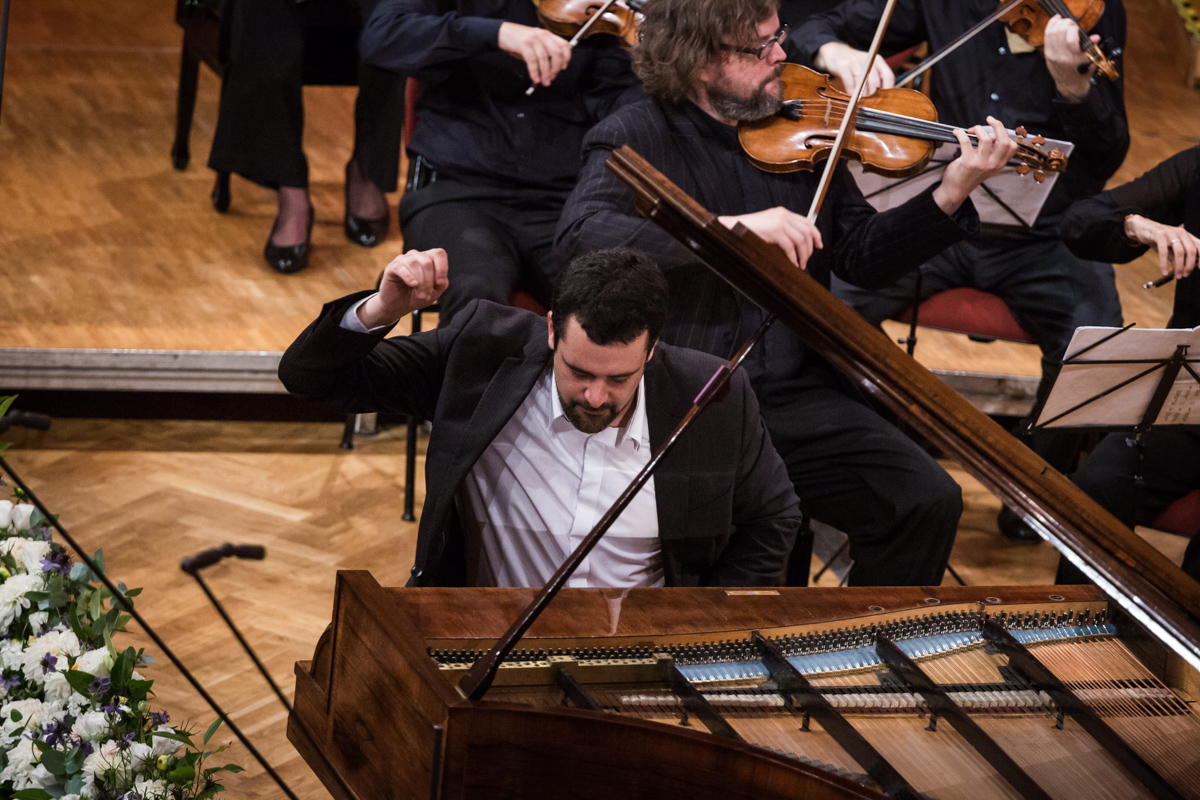
He chose to play on the 1837 Erard which possibly gave him an advantage over the Pleyel dynamically and may have suited his keyboard style in a superior way. However I felt the Pleyel a finer instrument expressively for this early concerto.
The Maestoso was quite straightforward without a great deal of personal vision of the work. Certainly he performed it in a virtuoso style. The Larghetto was occasionally persuasive but not often enough for this romantic reviewer who considers it one of the greatest of love melodies. I thought he could have brought more panache and variety of dynamic, nuance and articulation to the Allegro vivace rondo. An admirable but not outstanding performance.
I have often felt at this concerto stage of the competition that young competitors would greatly benefit from a course at the Paderewski Piano Academy in Bydgoszcz where the skill of playing with orchestra is explored, studied and practiced by these young tyros of the instrument and possible Final Stage prizewinners.
Piano concerto in F minor, Op. 21
8:00 PM Naruhiko Kawaguchi (Japan)
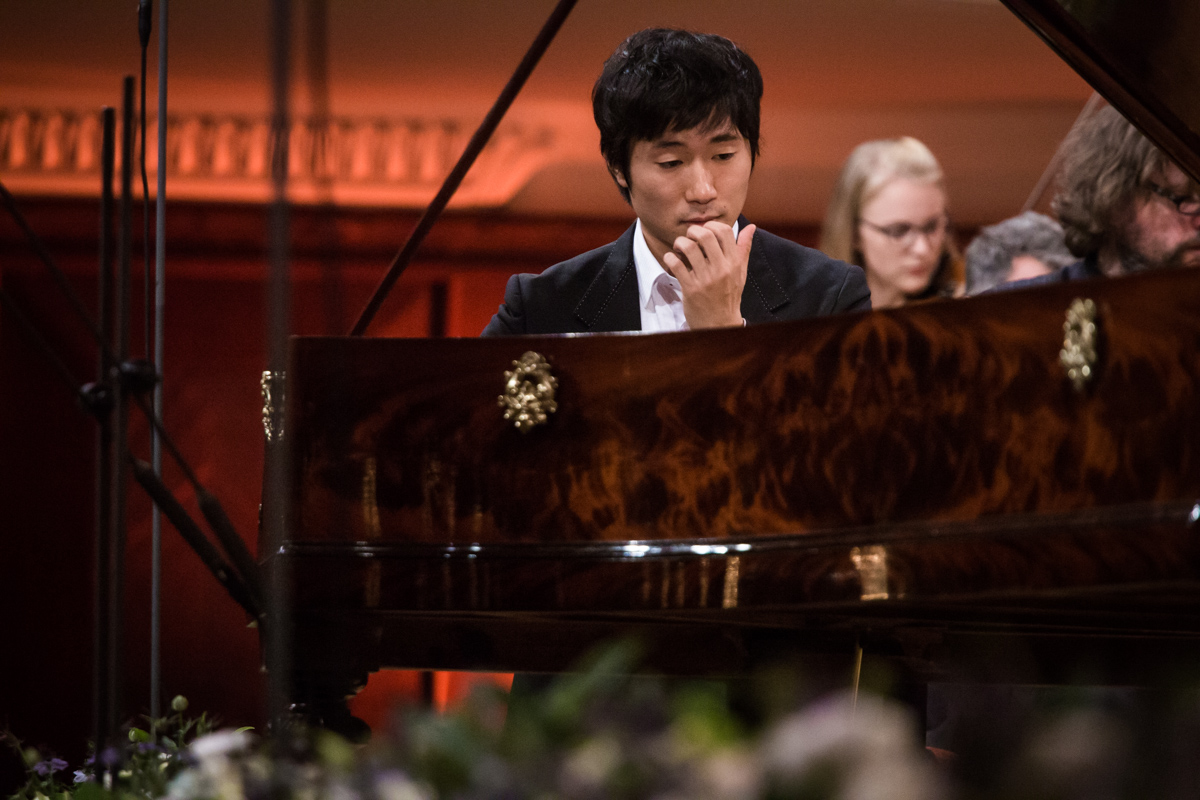
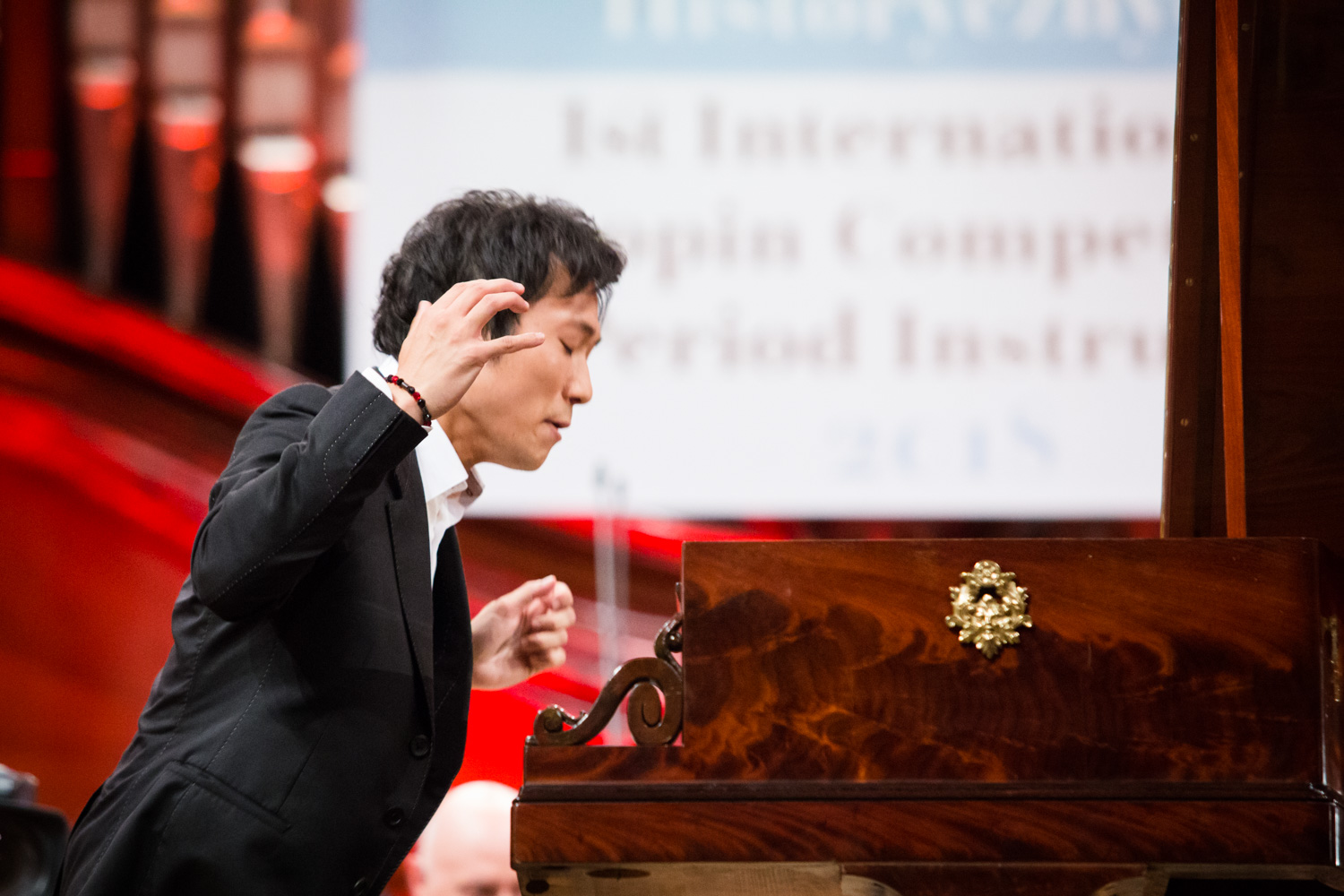
Kawaguchi decided very much at the last moment not to perform this concerto on the McNulty Buchholtz but on the 1842 Pleyel. The first noticeable professional gesture was to shake hands with the conductor and the leader of the orchestra in order to set up an immediate rapport. This close connection continued throughout the performance.
In the Maestoso opening, the inspiring energy of youth was ever-present. The pianist also seemed emotionally committed to the performance. This movement was clearly well-planned, well molded and dynamically varied in an imaginative way anticipating what was to come. Very satisfying.
The Larghetto was on the other hand not a sufficiently smooth arc of unrequited romantic yearning. I was not moved sufficiently by his phrasing nor achieved a feeling of yearning for an inaccessible and distant love. I felt the intensity was rather too extreme for adolescent disillusioned love which is rather a slightly melancholic dream for the inaccessible – if I remember accurately!
The Allegro vivace showed great rhythmic invention and I felt came close to the original spirit of the style brillant. There was excellent forward impulsion and impetus here. Varied dynamics were always present and the final stages achieved a marvelous kujawiak dance. The first type is marked by Chopin semplice ma graziosamente. Later there is also a highly energetic and rustic tavern quality to the writing which Kawaguchi captured well. The con legno pizzicato on the strings of this fine orchestra added greatly to this rustic flavour.
A most enjoyable performance.
Fryderyk Chopin
Piano concerto in F minor, Op. 21
Finals Day 2 September 13
6:00 PM Krzysztof Książek (Poland)
Krzysztof Książek from the outset pursued a particularly close relationship with the conductor Grzegorz Nowak and the members of the Orchestra of the Eighteenth Century. This was reflected in his excellent entry with the orchestra on one of the Chopin Institute’s Erard pianos. The military role of the timpani in this E minor concerto always diverts me. One must remember that a military, uniformed presence was visible everywhere in Warsaw during the Russian hegemony. Unfortunately the loudness permitted by Mr. Nowak again became rather unfortunate.
Książek’s phrasing in the Allegro maestoso was particularly convincing with a great deal of emotional expression. I however felt some absence of finesse and elegance in his articulation despite the obvious virtuosity of his playing, particularly in repeated phrases which were rather similar. His use of rubato was rather sparing in this movement. The Romance. Larghetto possessed a particularly alluring cantabile and remained a beautifully poised movement. However I was still hoping of more intensity in the yearning for unrequited love but that may just be my own romantic temperament. Perhaps I was hoping for a more personal expressiveness. In the Rondo. Vivace Książek captured the required style brillante extremely well with a lovely counterpoint in the left hand. The orchestral ensemble in this movement was outstanding.
An excellent performance of the concerto and hopefully Książek will be able to invest it with more personal expression as he achieves more freedom outside the competition environment.
Fryderyk Chopin
Piano concerto in E minor, Op. 11
7:00 PM Tomasz Ritter (Poland)
As you know I have greatly impressed by this pianist so far in this competition. I looked forward very much to his performance with orchestra. It certainly did not disappoint.
In the Maestoso first movement his expression swayed correctly between Classical detachment and Romantic enthusiasm. The main theme of the exposition in the rhythm of a mazur was well preserved and the development was a flurry of activity. The style brilliant came off spectacularly well on the 1842 Pleyel with Ritter. Hints of the Larghetto were subtly expressed in a touching cantabile.
The Larghetto itself avoided any sort of cloying sentimentality. Strength was supplanted or even augmented by poetry. So many levels of expression were present here, some bordering on the divine. His fiorituras were of breathtaking delicacy like cobwebs dew dusted. He performed pianissimos that are only really achievable on a Pleyel or just possibly another period instrument of quality. The explosions of emotion in the Chopin directions con forza and appassionato were utterly appropriate to the expressive doubts and slightly angry emotions of adolescent or young love so full of hopes and illusions. I was deeply moved by the sheer glowing sound he achieved on this glorious piano. The controlled pianissimo final note as the apotheosis of the structure and love song was possibly the most intense and moving musical moment of the entire competition.
The Allegro vivace revealed the orchestra in its true period splendor. Ritter made an expressive sound painting of this movement with perfectly graded crescendos and decrescendos mixed with the youthful joy of exercising virtuosity to its utmost. The exuberant dance of the kujawiak provenance was wonderful in its physical energy, exhilaration and high spirits. He gave us such a marvelous outpouring of the optimistic young Chopin – the dancer, pianist, actor, mimic, writer, practical joker and humorist – as well as composer of genius. The movement danced all the way to the final overflowing joyful chords of this, the expression of Chopin’s first love.
Fryderyk Chopin
Piano concerto in F minor, Op. 21
8:00 PM Aleksandra Świgut (Poland)
One reason I admire the playing of Aleksandra Świgut is its spontaneity. She often surprises me and makes unpredictable but creative interpretative gestures in her rather theatrical approach to the music. This concerto was no exception.
The Maestoso opening was distinguished for the woodwind section of this outstanding orchestra. She had chosen the 1837 Erard. She made sensitive use of the expressive potential of the movement which is considerable as it moves seamlessly between the Classical and the Romantic. When the mood of the music changes mercurially so does her own mood, sometimes rather dramatically and often theatrically. An almost Latin temperament seems to lie in waiting. On occasion she verges on somewhat sentimental phrasing and dynamic contrasts but this is often the dilemma Chopin offers us. Taste is often such a personal decision can you legislate concerning it? Up to a point of course you can but where is the line to be drawn in 2018, so far in time from the source of the music?
The love song of the Larghetto was sensitively approached with a lyric gift for the cantabile and clearly appreciating the seductive harmonies and dreamy Romantic nature of the movement. She has cultivated an attractive tone and touch on the earlier instrument. The emotional agitation that is embedded within the movement she approached with a strong response perhaps expressing Chopin’s frustration with the unrequited nature of his silent admiration of the soprano Konstancja Gładkowska.
The Allegro vivace has its first theme marked semplice ma graziosamente which she observed and then a sudden rush of temperament and slight accelerando which gave an urgency to the music. Some bucolic merry-making of the jolly tavern type but never crude, coupled with that lovely and inspirational col legno pizzicato-like sound on the strings. We danced along delightfully towards the notorious natural horn call (perfect on every occasion in the final) and the scintillating coda closing the work with a smile of pleasure.
Fryderyk Chopin
Piano concerto in F minor, Op. 21
Stage II Day 3 September 10
6:10 PM Aleksandra Świgut (Poland)
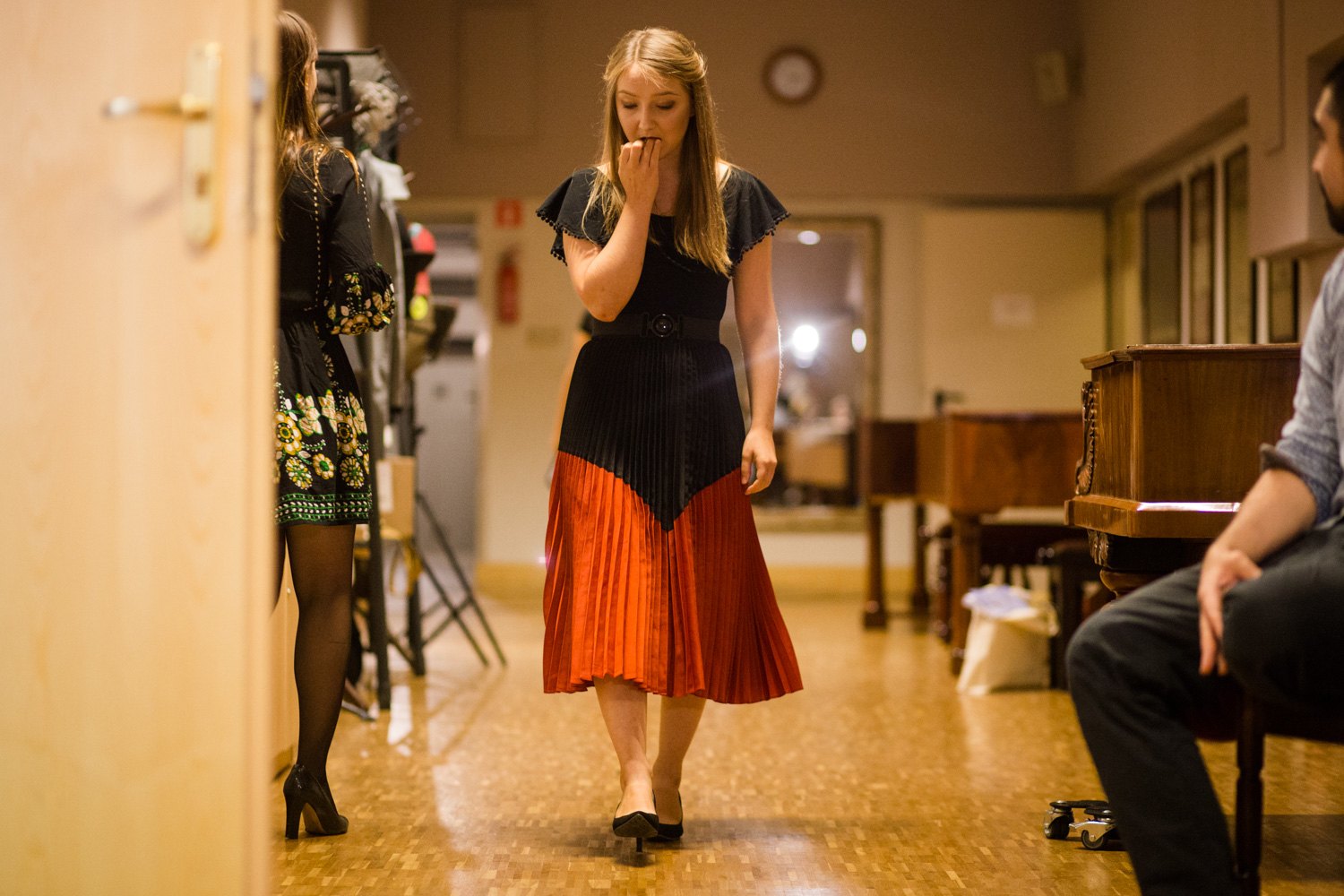
Third day of the 2nd stage auditions of the International Chopin Competition on Period Instruments. 10th September 2018, Warsaw, Poland on picture: Aleksandra Swigut photo by Wojciech Grzedzinski/NIFC
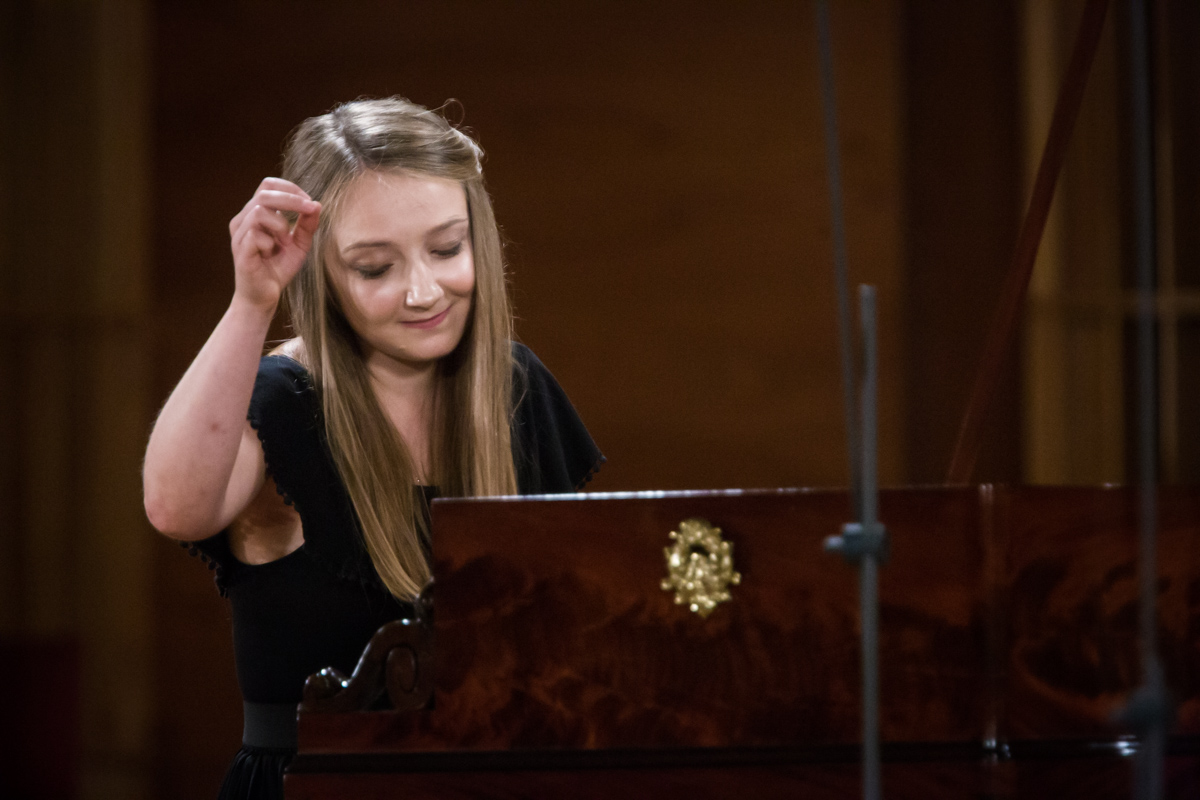
Do bear with me if I quote what I wrote in Stage I of this interesting and communicative pianist. I have followed her career for many years after I first heard her at the Duszniki Zdrój International Chopin Piano Festival in recital and at Master Classes there. I was interested in how she would approach these historical instruments. I wrote of her temperament in 2011 and it seems little has changed:
She was always a distinct personality that stood out and her choice of programme indicates she has very clear ideas of what she loves to play.The absolute joy and delight in playing that suffuses her features is quite affecting – the profound pain, sweat and suffering that produces the usual fraught countenance and distorts the face of a young pianist is usually absent. This ‘suffering’ sort of thing is hard to empathize with as a member of the audience when you are not actually playing the work yourself. So we all felt happy for once.
She opened her Stage II recital on the 1842 Pleyel with the four mazurkas Op. 33. I found the G-sharp minor affectingly reflective; The C-major pleasant and diverting; Adored the lively, energetic sprung rhythms of the D-major mazurka; the B-minor had a marvellous variety of dynamic expression as if improvised on the spot. This was coupled with a seductive tone and touch at the instrument. Particularly fine and outstanding mazurkas.
On the Erard she then embarked on the Andante spianato and Grande Polonaise Brillante. The Andante was as smooth as Thai silk with just enough texture to lift it off the dull plains to the sunny uplands. The Grande Polonaise was replete with theatrical style, élan and panache. There were tremendous contrast here of tone and attack which I enjoyed immensely. Some episodes were style brillante as I understand it and some were almost shocking in too rough a dynamic contrast – a fascinating piece of theater which is perhaps as this work should be considered in many respects. It is not deeply philosophical but an utterly enjoyable brilliant confection written by a high-spirited young Pole named Fryderyk Chopin, a lover of dancing and acting. Świgut also seemed to be enjoying herself immensely.
Her mood changed to something rather more serious when she approached the late Chopin Sonata in B-minor Op. 58. The opening Allegro maestoso combined nobility and strength in the initial statement and later even if dynamically overloading the Erard. The trio was lyrical with a superb cantabile that made the piano really sing with elation. Moods shifted dramatically from turbulence to the quietude of a nocturne. The Scherzo was possessed of a Mendelssohnian atmosphere of fairy realms and dreams as it was articulated demi-staccato which gave it the required light and air. The trio again displayed her gift for outstandingly lyrical Chopin cantabile. Few pianists achieved this quality during the competition.
She adopted a moderate dynamic and tempo for the transition to the Largo. We began an exquisite extended nocturne-like musical voyage taken through a night of meditation and introspective thought. This great musical narrative was presented as a poem of the reflective heart and spirit. With Świgut the moods rose and fell like the tides of the ocean. At the conclusion of this poetic masterpiece, she allowed the meditative flow to almost cease pianissimo. A very beautiful, moving and deeply felt presentation to this fortunate audience. In the Finale. Presto ma non tanto she adopted a rhapsodic approach to this ‘ballade’.
Tomaszewski again who cannot be bettered:
Thereafter, in a constant Presto (ma non troppo) tempo and with the expression of emotional perturbation (agitato), this frenzied, electrifying music, inspired (perhaps) by the finale of Beethoven’s Seventh Symphony…’
Certainly Świgut transported us into a world of delirium at the close. A very satisfying competition recital.
Fryderyk Chopin
Mazurka in G sharp minor, Op. 33 No. 1
Fryderyk Chopin
Mazurka in C major, Op. 33 No. 2
Fryderyk Chopin
Mazurka in D major, Op. 33 No. 3
Fryderyk Chopin
Mazurka in B minor, Op. 33 No. 4
Fryderyk Chopin
Andante spianato and Grande Polonaise Brillante in E flat major, Op. 22
Fryderyk Chopin
Piano Sonata No. 3 in B minor, Op. 58
5:00 PM Łukasz Byrdy (Poland)
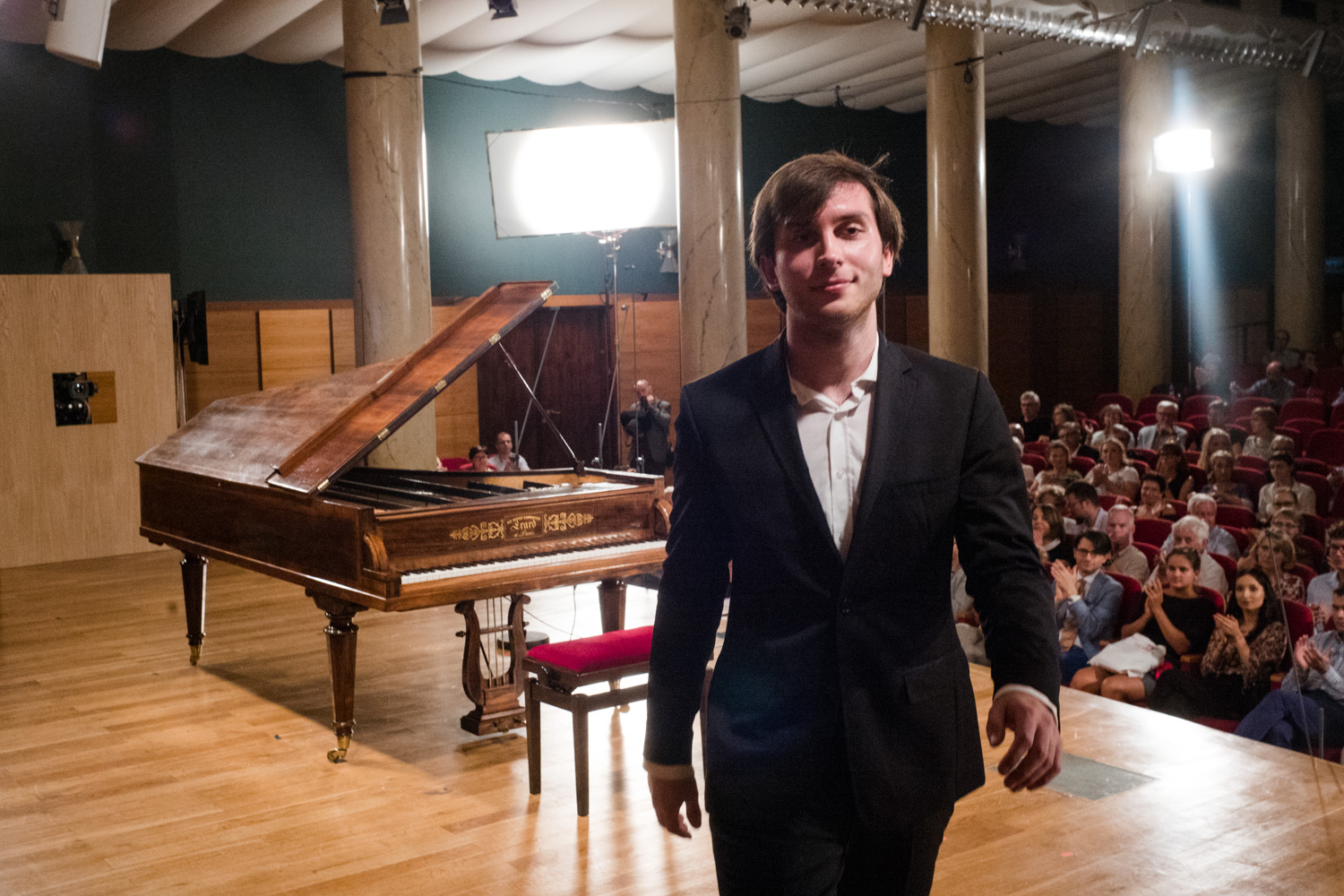
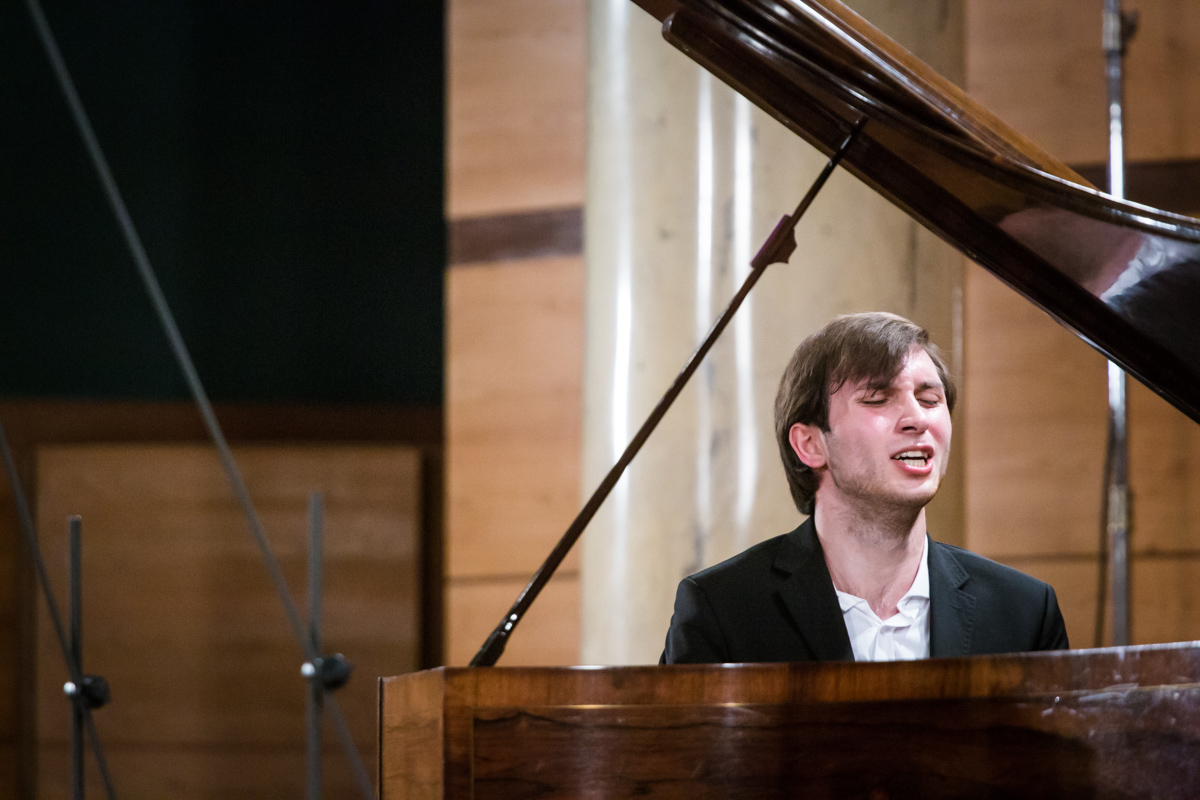
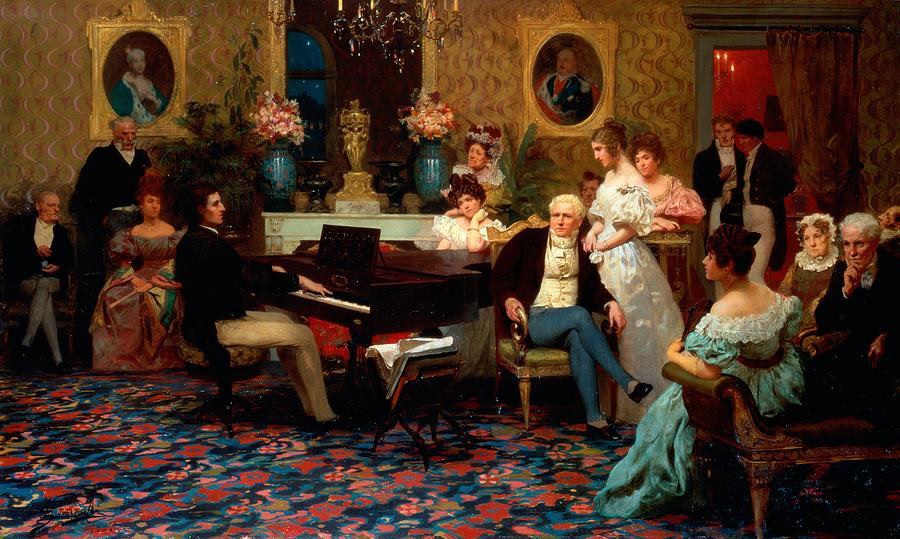
Liszt wrote in his Life of Chopin :
‘…the most eminent minds in Paris frequently met in Chopin’s saloon. Not in reunions of fantastic periodicity, such as the dull imaginations of ceremonious and tiresome circles have arranged, and which they have never succeeded in realizing in accordance with their wishes, for enjoyment, ease, enthusiasm, animation, never come at an hour fixed upon before hand.’
I liked his Mazurkas Op. 30. the C-minor was a pleasant diversion; the B-minor uncomplicated; the D-flat major rather optimistic in mood and the C-sharp minor emotionally interesting.
Then to the final work in his programme, the Sonata in B-flat minor Op. 35. In the opening Allegro maestoso he gave a high degree of emotional commitment to this remarkable movement. There was weight, strength and menace present here, even perhaps sinister intentions. We were thrust forward certainly in the nature of a galloping horse.
One should reflect after this comment that movement during Chopin’s time was restricted either to walking, horse or carriage. So when a composer wished to impart movement to a piece of music he could not envisage all of the extraordinary modes of travel we have at hand. Of the Scherzo the great Polish musicologist Tomaszewski comments: ‘…one might say that it combines Beethovenian vigour with the wildness of Goya’s Caprichos.’ I felt it could have been more energetic.
The beautiful trio could have taken us singing into the further dimension of ardent dreams which makes the Marche funèbre such a shocking jolt from the force of destiny. The reflective trio of the Marche is a contrast of innocence, love and purity blighted by the reality of death (Chopin was terrified of being buried alive – often horrifyingly possible in those primitive medical times). Tomaszewski continues perceptively: ‘The Sonata was written in the atmosphere of a passion newly manifest, but frozen by the threat of death.’ A deep existential dilemma for Chopin speaks from these pages written in Nohant in 1839. The pianist, like all of us, must go one dimension deeper to plumb the terrifying abyss this sonata opens at our feet. Of the Presto which concludes the work, Chopin wrote characteristically with intentional irony of the ‘chattering after the march’ leaving Schumann to write in philosophical and literary frustration: ‘The Sonata ends as it began, with a riddle, like a Sphinx – with a mocking smile on its lips’. I felt Byrdy could have achieved more here to transport us.
Andante spianato and Grande Polonaise Brillante in E flat major, Op. 22
Fryderyk Chopin
Mazurka in C minor, Op. 30 No. 1
Fryderyk Chopin
Mazurka in B minor, Op. 30 No. 2
Fryderyk Chopin
Mazurka in D flat major, Op. 30 No. 3
Fryderyk Chopin
Mazurka in C sharp minor, Op. 30 No. 4
Fryderyk Chopin
Sonata in B flat minor, Op. 35
12:20 PM Joanna Różewska (Poland)
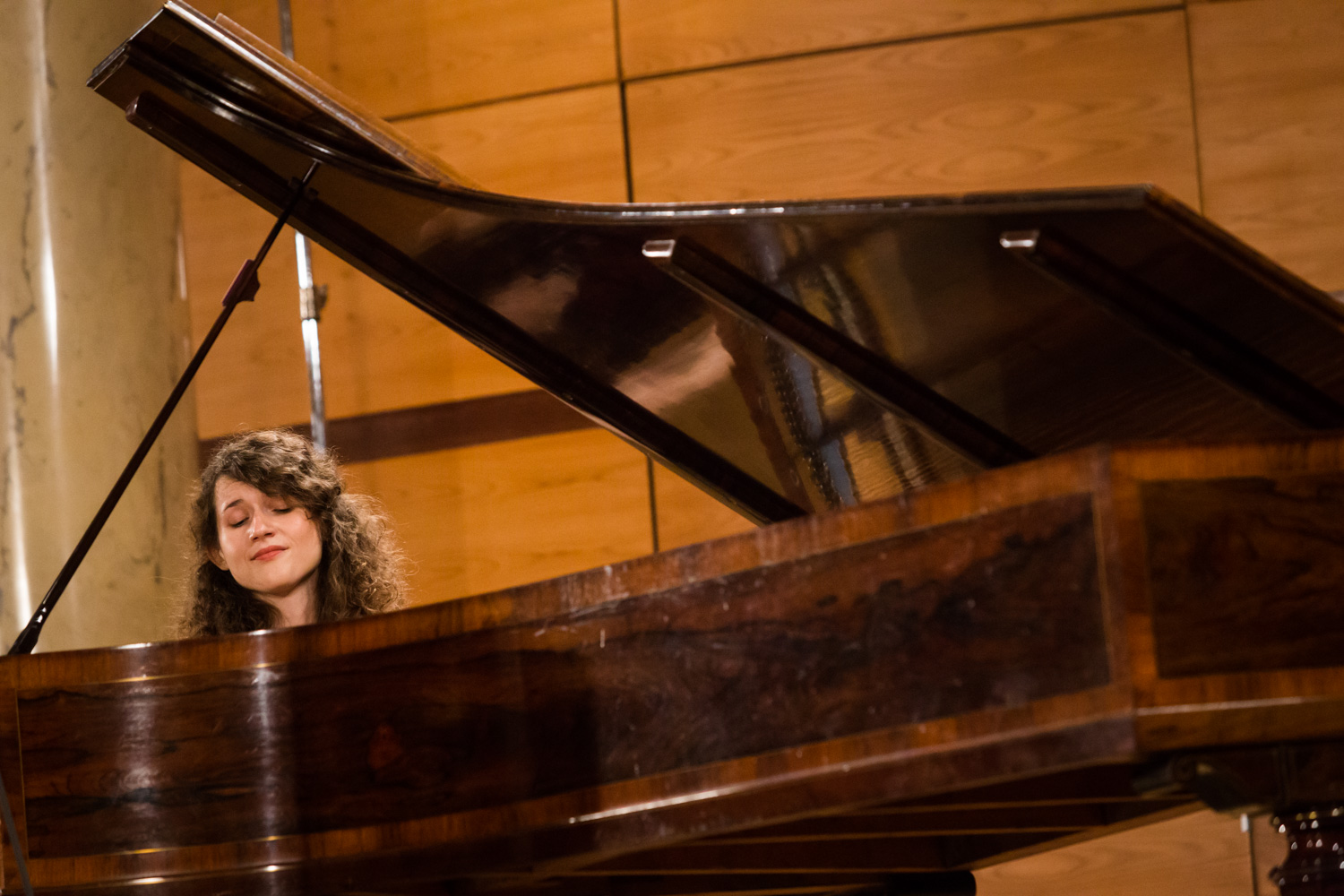
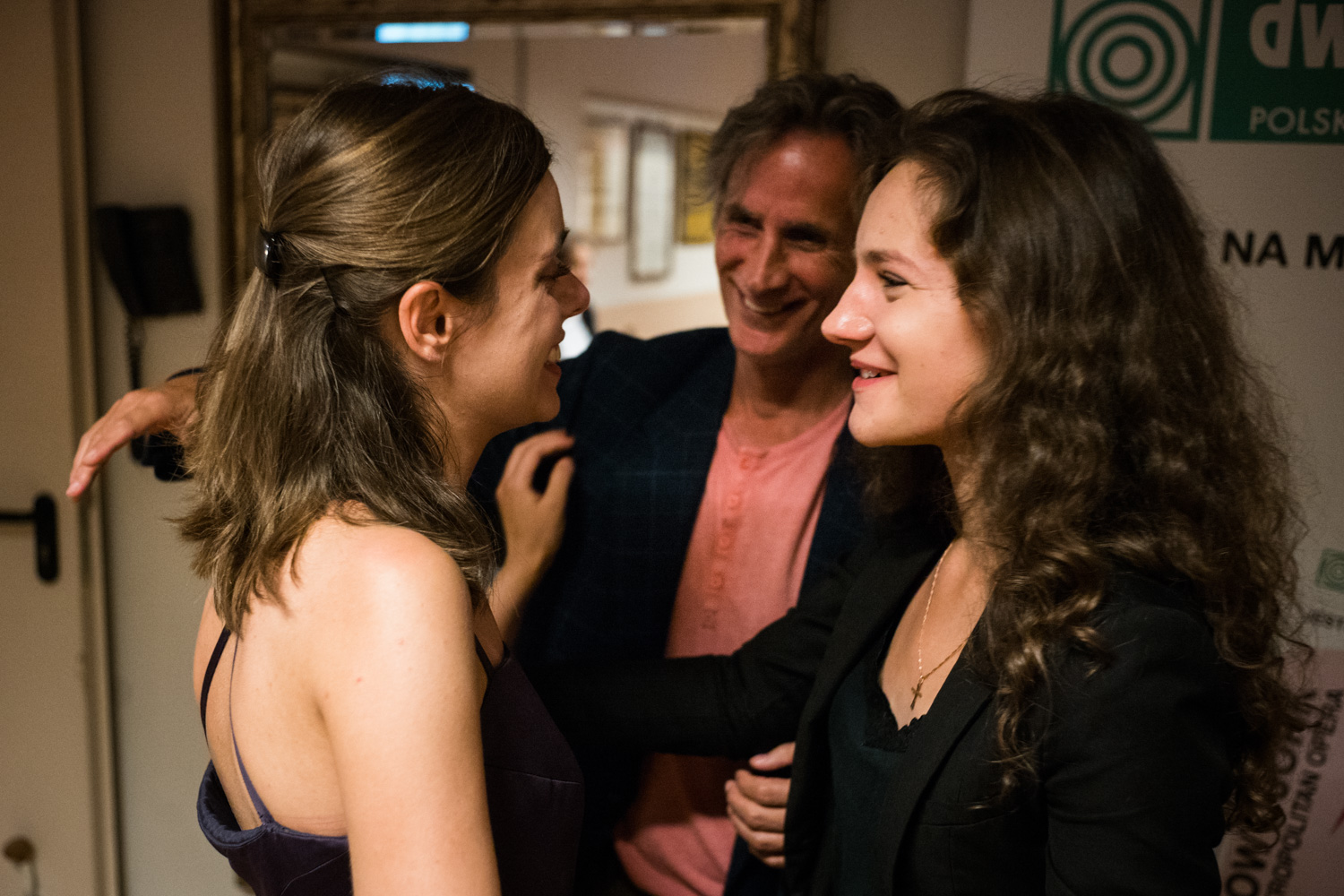
Ever since the first stage this pianist has lured me with her charm, elegance and refinement especially in early Chopin and music from less philosophically demanding composers of the period. And there is a very special achievement in that talent for historical and stylistic context let me assure you in 2018!
The set of three mazurkas Op. 50 were idiomatically Polish I felt in rhythm and phrasing and so beguiling. But as a foreigner can I accurately judge their quality?
The B-flat minor Sonata Op.35 opening Grave. Doppio movemento possessed a degree of tragedy and menace but not quite enough for me. I felt it not sufficiently impassioned. The Scherzo began forcefully and the trio had alluring, seductive cantabile tone and touch. The Marche funèbre was begun at an impressive tempo that grew out of the pessimistic conclusion to the Scherzo. The innocence of the trio was as ever with such movements again beautifully expressed with a fine tone and so light a touch, the fragility of life was feelingly expressed. The return of the gloomy theme was unsettling until the Presto erupted in a virtuoso style, the counterpoint and harmonic complexities clearly indicated. There was a huge momentary crescendo at one point which was a shock but strangely relevant to grief and its wildly fluctuating moods.
In a fine Andante spianato and Grande Polonaise Brillante her beautiful cantabile tone was again on display. The polonaise was extremely charming, expressive and elegant in a style that may only have been possible before the Great War. Its profound human disillusionments erased much civilization from which we have never recovered and will never recover.
The internal polyphony she found within was rather a revelation to me, extremely beautiful and in the character of an ardent dream. She came close to the ideal of the style brilliant as described below in the review of Kamil Pacholec. There was great clarity and colour in her playing and the glittering tone and light touch she produced for this work and genre was ideal. For the sake of clarity she is sparing with the pedal. There is also an indispensable element of superficial personal affectation she can manage tastefully which is artful and correct for this genre of music.
A recital of charm and elegance rather than exploring the dark night of the soul.
Fryderyk Chopin
Mazurka in G major, Op. 50 No. 1
Fryderyk Chopin
Mazurka in A flat major, Op. 50 No. 2
Fryderyk Chopin
Mazurka in C sharp minor, Op. 50 No. 3
Fryderyk Chopin
Sonata in B flat minor, Op. 35
Fryderyk Chopin
Andante spianato and Grande Polonaise Brillante in E flat major, Op. 22
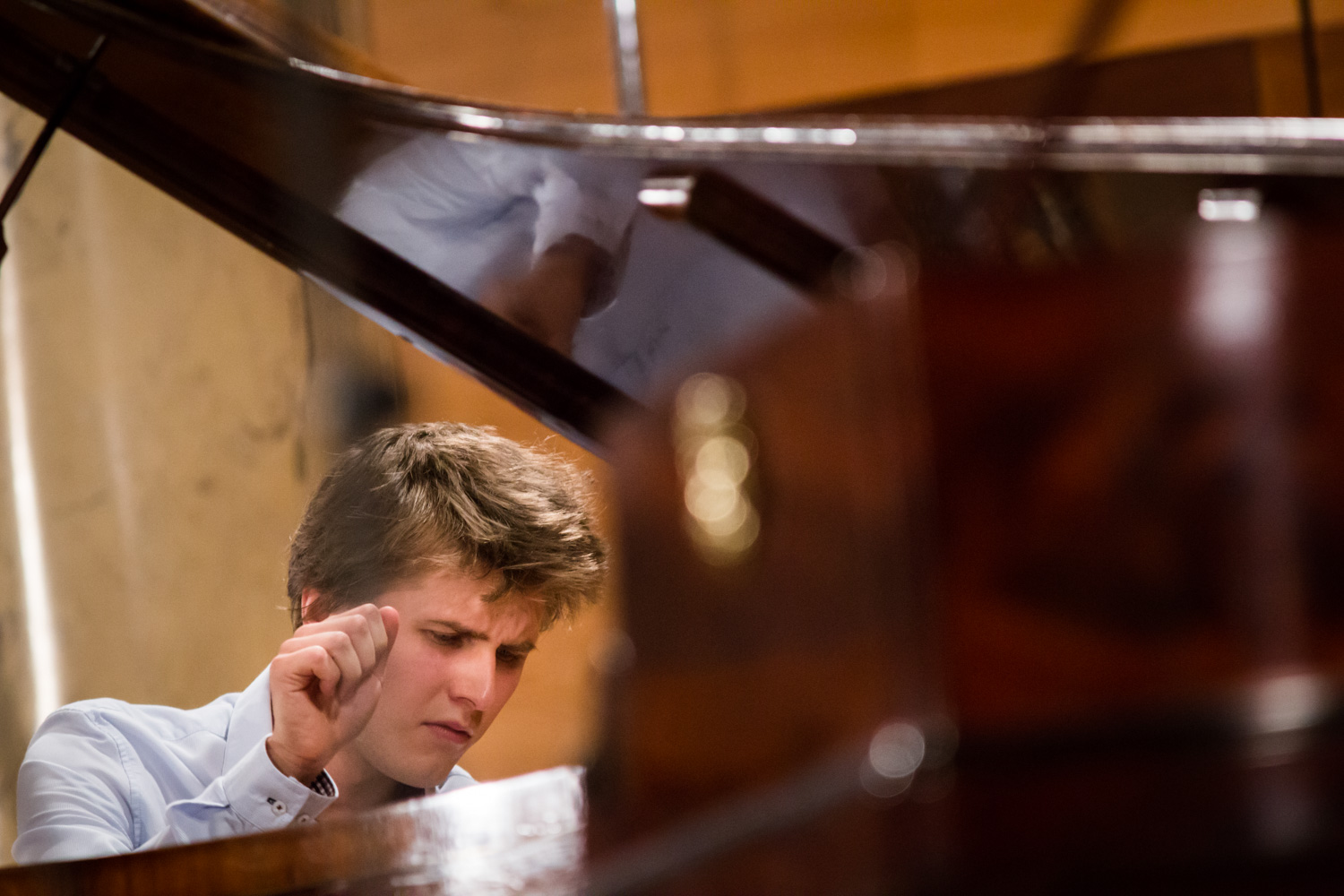
His C sharp minor Polonaise revealed the wonderfully balance sound of this Pleyel in all its registers. Any repeated phrase was played again with different sound, dynamics and articulation. An expressive performance. I found his rubato and phrasing highly musical. The Pleyel allows a particularly cantabile left hand below the right when required. Inner detail and voices were clearly revealed. The bass cantilenas revealed a pianist who understands the sound palette of the Pleyel.
The E-flat minor Polonaise had that profoundly ominous beginning that was deeply expressive. The mood swings throughout the work required a variety of colour (he used the pedals for this) and articulation. Strength emerged from depression and despair in this darkest of all Chopin polonaises. He utilized the power of silence in dramatic pauses and hesitations. However I am not Polish and always feel my Western cultural background insufficient in plumbing the true nature of Polish suffering. It is hard to comment seriously on the existential and historical significance of the Chopin polonaise as a distillation of Polish nineteenth century anguish. I can but try….
Staying with the Pleyel he embarked on the four Op.33 Mazurkas. From the exploratory C-sharp minor he modulated directly into the C-major. The D major was so energetic and rustic in character I was a reminded of a tavern in the countryside. He utilized such natural, musical phrasing with a perfect conclusion it seemed to me. The B-minor possessed two moods of reminiscence – joyful and melancholic. His pauses were eloquent and emotionally charged. There were heartbreaking moments at the conclusion to this mazurka. But then again as a foreigner can I really understand the significance of a mazurka to a Pole and accurately judge any performance?
He chose the 1837 Erard for the Op. 58 Chopin Sonata. Such a noble beginning of the Allegro maestoso was unpedaled. Ritter seems to have an inborn musicality and his phrasing speaks volumes of highly charged emotion. He did so much creatively with the embedded polyphony. The Scherzo was wonderfully light like A Midsummer Night’s Dream, the trio full of ardent emotion.
The transition to the Largo was not as forceful as others in the competition. The tempo seemed absolutely appropriate to me. Ritter has a fine tone and cultivated touch. The movement opened out like a great narrative poem of meditation. The voices he revealed possessed a singular life of their own. So many musical ‘destinies’ were played out and the expressive harmonies and transitions were carefully managed.
I could not avoid thinking of the opening lines from the Duino Elegies of Rainer Maria Rilke:
‘Who, if I cried, would hear me among the angelic orders?
And even if one of them suddenly pressed me against his heart,
I should fade in the strength of his stronger existence.’
(trans. J.B. Leishman)
The Finale. Presto non tanto tempo was deliberate with much nobility rather than hysteria. Although the movement did not really hold together as perhaps it should structurally, (there were a few solecisms too), it was a three dimensional picture with a variety of dynamics, phrasing and breathing. For the listener there was time to follow the resolution of the harmonies.
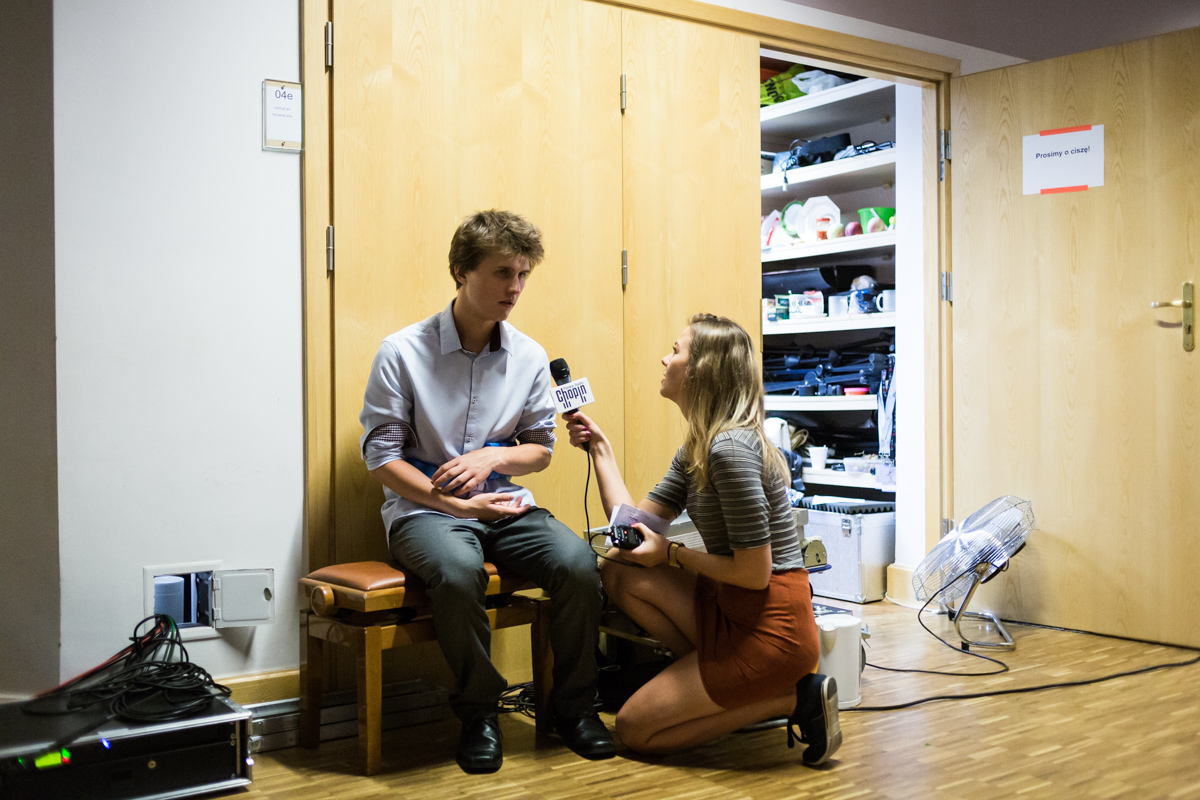
Polonaise in C sharp minor, Op. 26 No. 1
Fryderyk Chopin
Polonaise in E flat minor, Op. 26 No. 2
Fryderyk Chopin
Mazurka in G sharp minor, Op. 33 No. 1
Fryderyk Chopin
Mazurka in C major, Op. 33 No. 2
Fryderyk Chopin
Mazurka in D major, Op. 33 No. 3
Fryderyk Chopin
Mazurka in B minor, Op. 33 No. 4
Fryderyk Chopin
Piano Sonata No. 3 in B minor, Op. 58
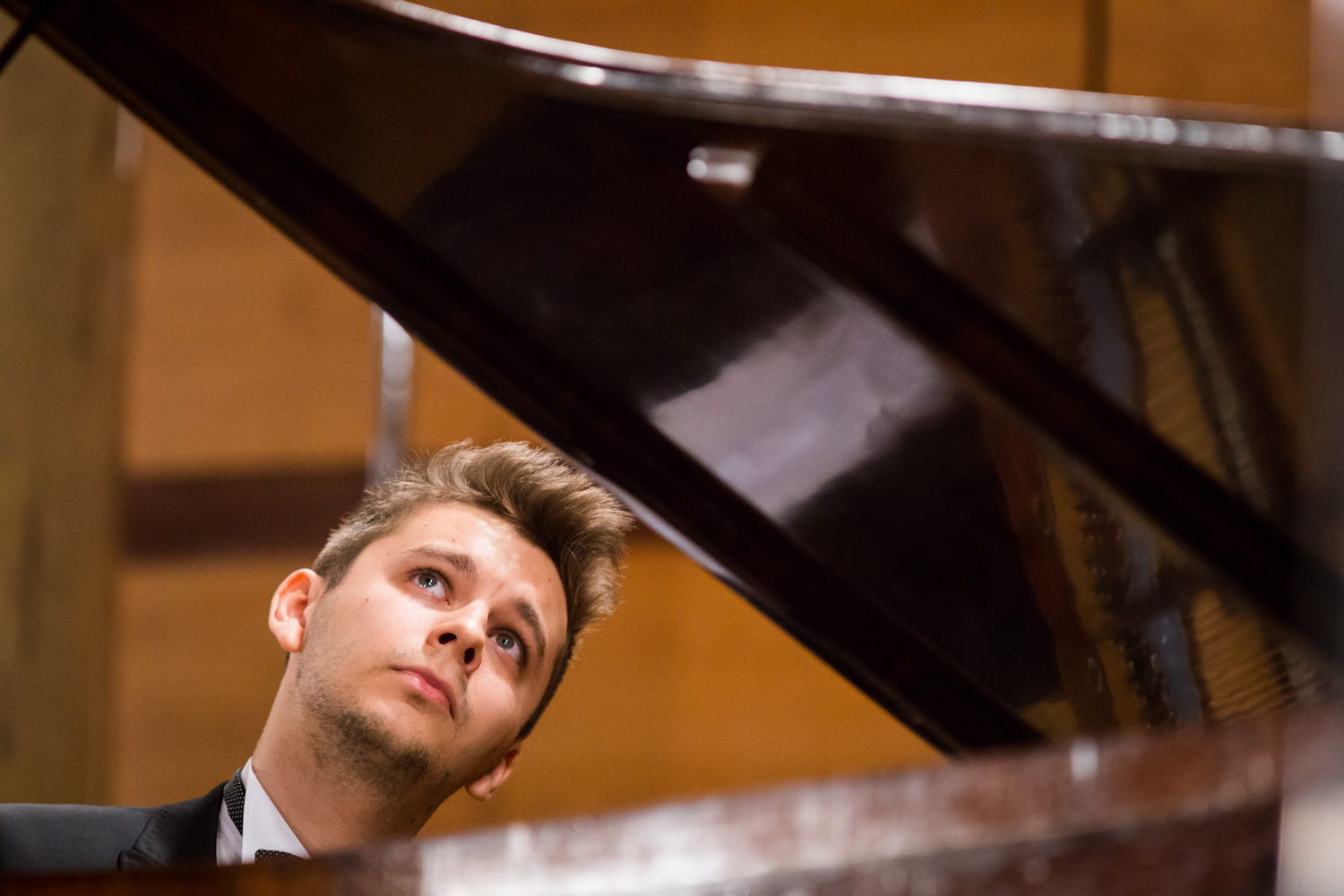
I have already written about how impressed I was with his master class at Duszniki Zdtoj last year and Stage I here so was greatly anticipating hearing him again in Stage II. He performed his entire programme on the 1837 Erard.
The four Mazurkas Op. 24 were very impressive. The G-minor possessed a lovely spontaneity of invention. The C-major and attractive bucolic spirit and much in the Polish idiom. In the A-flat major, the blithe nature of this mazurka was well captured. The B-flat minor had a very eloquent beginning and a most elegiac conclusion.
In the Andante spianato and Grande Polonaise Brillante he was certainly ‘flowing and smooth’ with a beautiful rounded tone in the Andante. Fine legato and cantabile. His present teacher Wojciech Switała made a memorable recording of this work for Polish Radio Katowice some years ago (1992?) which is the most magnificent example I have ever heard of the style brillante.
I quote myself on the nature this genre:
The essential nature of the style brilliant of which the Grand Polonaise Brillante Op.22 is an essential and outstanding representative of Chopin’s early Varsovian style, seems rather a mystery to modern pianists outside of those living in Poland. Perhaps I am hopelessly wrong. Jan Kleczyński writes of this work: ‘There is no composition stamped with greater elegance, freedom and freshness’. The style involves a bright light touch and glistening tone, varied shimmering colours, supreme clarity of articulation, in fact much like what was referred to in French as the renowned jeu perlé. There are also vital expressive elements of charm, grace, taste and elegance. One must not forget that Chopin astonished Vienna by his pianism but perhaps even more by the elegance of his princely appearance.
The Andante spianato (which Chopin often used to perform as an isolated piece he loved it so much) was pleasant, understood as a nocturne and a lovely introduction. The ‘call to the floor’ for the polonaise was strident and well handled (an instrumental custom well understood by Chopin who in his youth was mad about dancing, a fine dancer and also an excellent dance pianist into the small hours hence his need for rehab at Bad Reinherz – now Dusznki Zdroj).
However this was not entirely the style brillante as I understand it. The many fiorituras were not presented as Venetian lace, the hand and touch rather heavy, muscular and robust, at least on an Erard, an instrument capable of both refinement and volume not requiring weight. There was not sufficient early Chopinesque refinement or elegance here I thought.
Please, that is not to say it was not extremely well played, even brilliantly performed, just that it was somewhat stylistically inaccurate for me and especially I thought rather a waste of the marvellous potential of an Erard.
In the B-Minor Sonata Op. 58 the opening Allegro maestoso was begun with great nobility, power and resolve. The passionate, almost operatic balladic character of the development was ‘narrated’ well and movingly. The cantilena sang expressively without sentimentality. The Scherzo was agitated and correctly light in texture but I felt the phrases in the trio could have been moulded rather more expressively.
The commencement of the Largo was not as brutal as some. The moderate tempo he chose allowed an expressively meditative atmosphere to bloom. The whole extensive and challengingly long movement was very well sculptured as a whole. The Finale. Presto non tanto tempo indication was observed but the truly frenzied nature of this extraordinary movement was not quite achieved but almost – which is not a particularly helpful observation but there it is. The particular brilliance lay in his instantaneous and seamless correction of a couple of memory solecisms without disturbing the rhythmic flow one iota. An astonishing feat. He was occasionally rough at climactic moments on the Erard through inexperience. The light action tempted him into too fast a tempo on occasion. There was however without doubt an inexorable and emotionally moving rhapsodic forward momentum to the movement which carried all before it with enormous weighty impetus.
All in all a tremendously satisfying recital that showed enormous musical achievement, talent and further promise in one so young. One of the highlights of the competition.
Mazurka in G minor, Op. 24 No. 1
Fryderyk Chopin
Mazurka in C major, Op. 24 No. 2
Fryderyk Chopin
Mazurka in A flat major, Op. 24 No. 3
Fryderyk Chopin
Mazurka in B flat minor, Op. 24 No. 4
Fryderyk Chopin
Andante spianato and Grande Polonaise Brillante in E flat major, Op. 22
Fryderyk Chopin
Piano Sonata No. 3 in B minor, Op. 58
Stage II Day 2 September 9
6:10 PM Yui Nakamura (Japan)
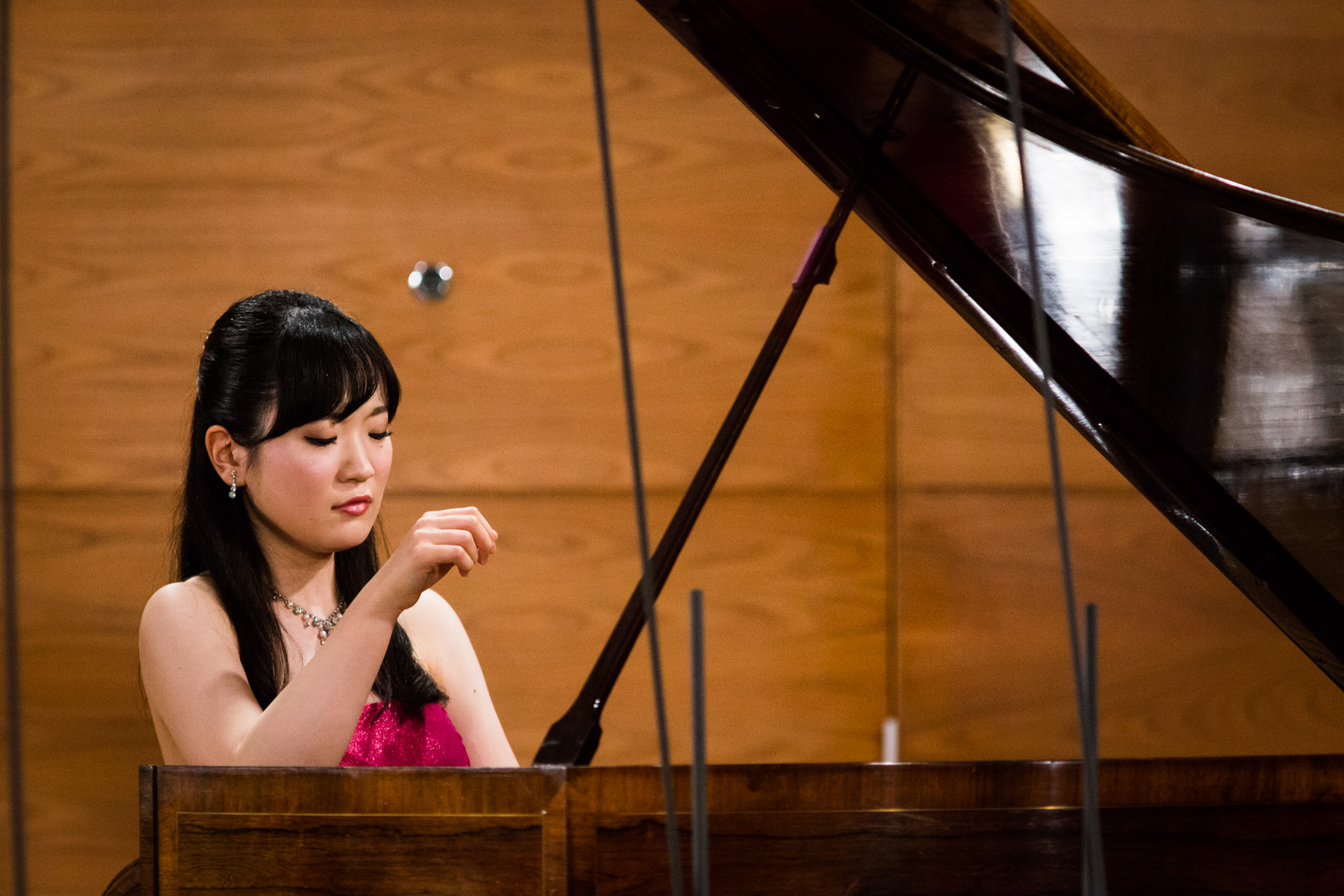
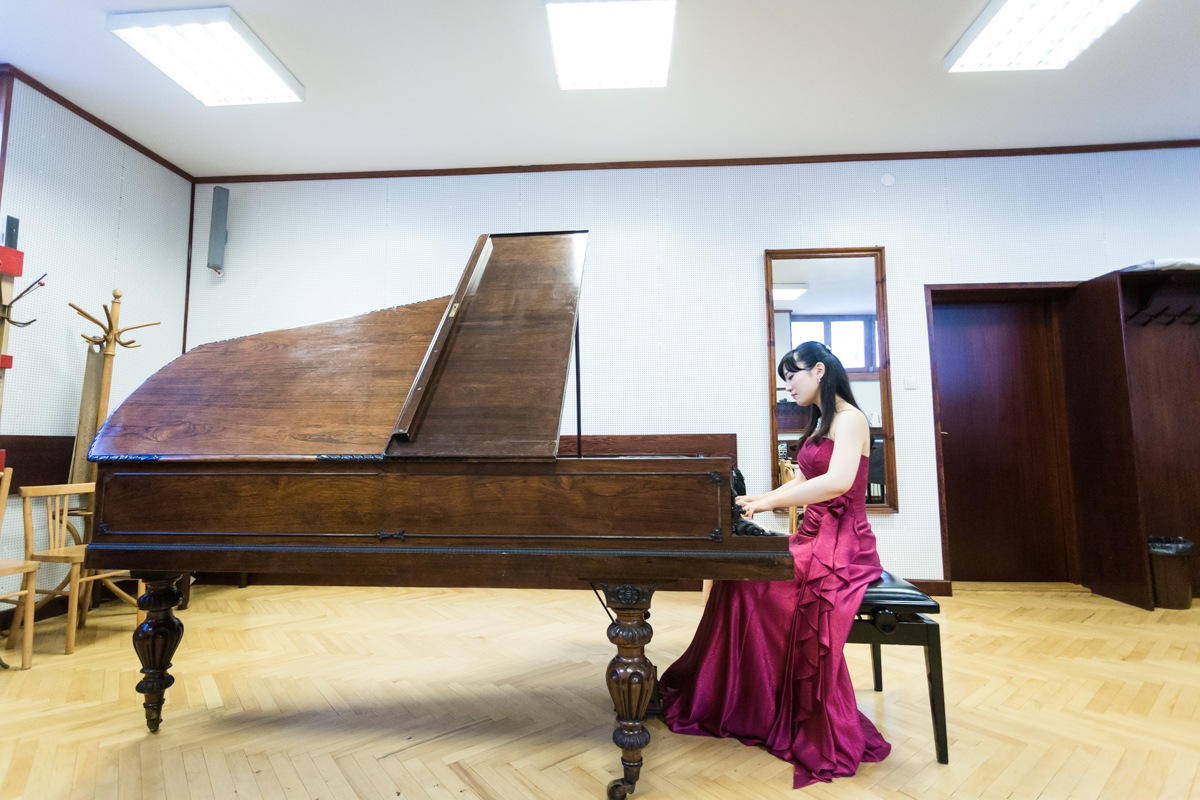
This stage was superior in some ways to her Stage I. She began with the C-minor polonaise on the 1837 Erard which I found was rather too amiable for this type of emotional work. The Trio was played with a tonally beautiful cantabile. The polonaise has been described as containing ‘melodies filled with longing, sorrow, suffering and unassuaged grief’. There is also present ‘pain bordering on despair’, ‘heavenly delight’ as well as the ‘barely stemmed tears’. The E-flat minor polonaise had a suitably ominous and despairing, dark beginning and overall she was impressive in this tragically beautiful piece.
Then to the group of Mazurkas played on the 1842 Pleyel. My first observation was purely aesthetic. The appealing image of an elegant Japanese woman in a crimson silk ball gown, seated perfectly erect at a museum quality mahogany-veneered 1842 Pleyel, about to perform a group of Chopin mazurkas. Not something one encounters often in life…such refined beauty.
Although beautiful too in their way, the four Mazurkas Op.41 were too dominated by legato playing and the pedal for my taste. They did not have sufficient of the authentic Polish idiom and true mazurka rhythm. I wanted more ‘air’ to the phrasing, the articulation and more dynamic and rhythmic invention.
The opening Grave. Doppio movemento of the Sonata in B-flat minor Op.35 certainly possessed tragedy and menace but later although restless and virtuosic, I felt it not sufficiently impassioned. The extreme contrasts in expression, although definitely present as contrasts, were not powerfully enough delineated. The Scherzo began with force and aggression and she allowed the trio to rise beautifully out that passionate section with alluring, seductive tone and touch. Perhaps not entirely appropriate as the Marche funèbre grows out of the pessimistic conclusion to the Scherzo. Sorry to say, this tragic utterance did not communicate itself to me very affectingly. The childlike innocence of the trio, naive and exposed, was as ever again beautifully expressed with a fine tone and so light a touch. The return of the gloomy theme was unsettling in the extreme until the Presto erupted in a fine virtuoso style, the counterpoint and harmonic complexities indicated but avoiding the ‘teacher cliché’ approach. The approach to the counterpoint was highlighted yet understated.
All in all a surprisingly talented and convincing performance given her mixed performance in the First Stage.
Fryderyk Chopin
Polonaise in C sharp minor, Op. 26 No. 1
Fryderyk Chopin
Polonaise in E flat minor, Op. 26 No. 2
Fryderyk Chopin
Mazurka in E minor, Op. 41 No. 1
Fryderyk Chopin
Mazurka in B major, Op. 41 No. 2
Fryderyk Chopin
Mazurka in A flat major, Op. 41 No. 3
Fryderyk Chopin
Mazurka in C sharp minor, Op. 41 No. 4
Fryderyk Chopin
Sonata in B flat minor, Op. 35
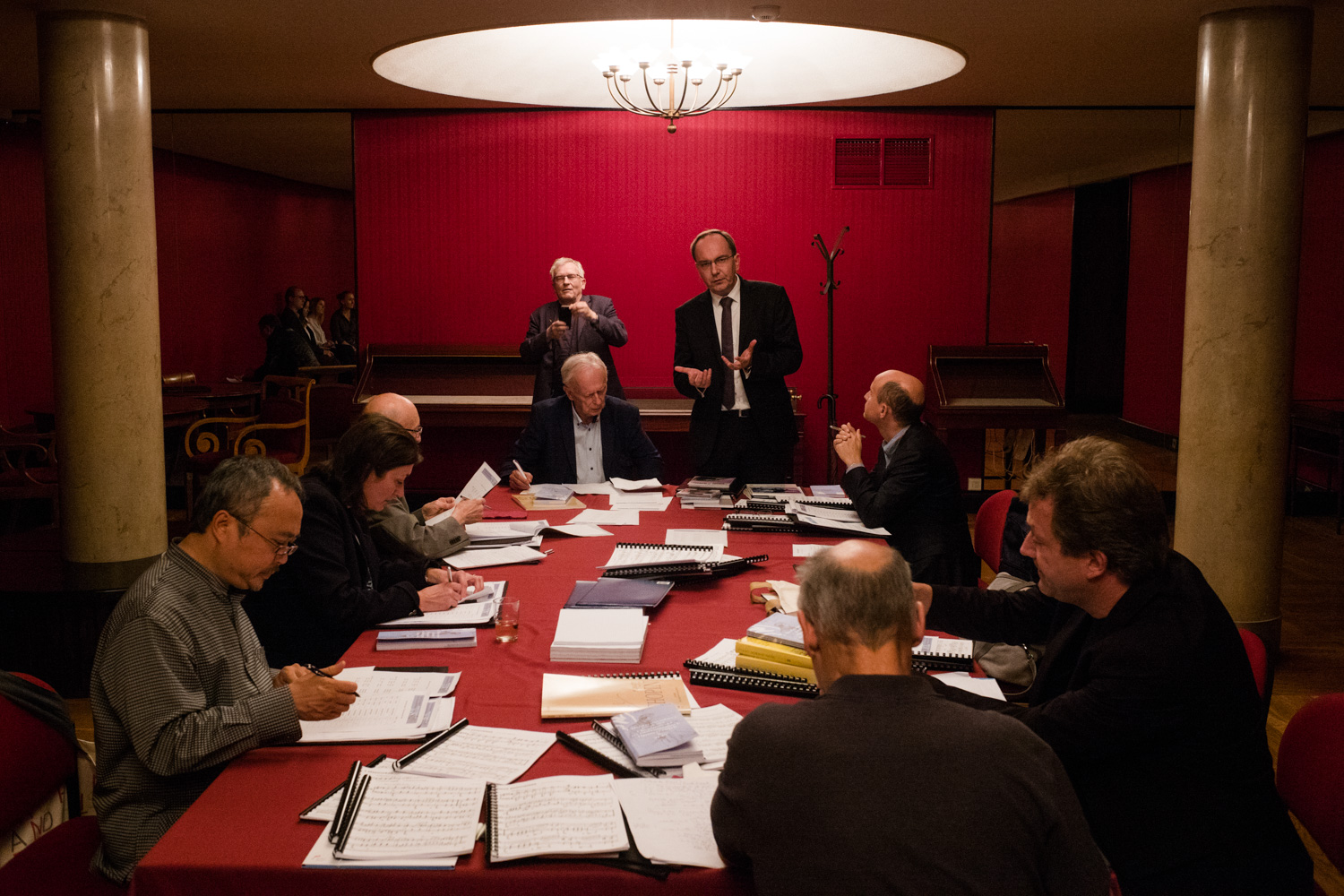
5:00 PM Krzysztof Książek (Poland)
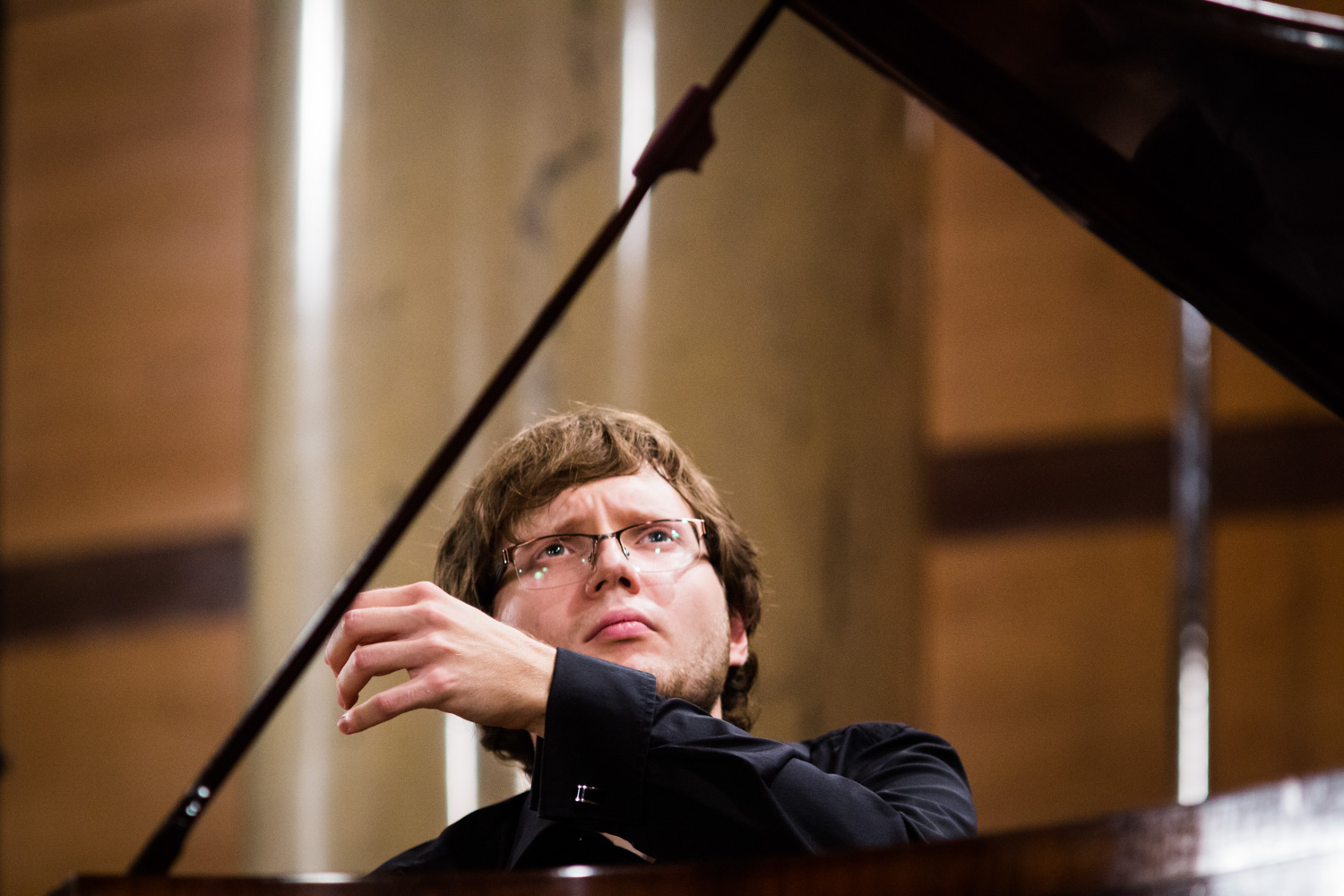
Krzysztof Książek has quite a high local profile in Poland and much is always anticipated of a recital. He used exclusively the 1837 Erard. He opened his recital with the F-sharp minor Polonaise. Certainly it was an excellent performance in all respects but I felt the tempo he adopted was rather slower and less ‘military’ than others (this being far more of a ‘military protest’ by Chopin than other polonaises). This robbed it a of a certain urgency, żal and grandeur which was a loss I feel. There was not the driving, almost neurotic, military energy I felt was necessary in this fierce protest against occupation and Russian military hegemony which lies at the heart of the piece.
The Mazurkas Op. 50 were fine indeed with imaginative use of rhythm and silence. This created a strong and attractive sense of relaxed improvisation. The A-flat major seemed perfectly and idiomatically Polish and the C-sharp minor has always appeared a remarkable composition to me. The mazurkas by Książek were superb and it is hard for this foreigner to imagine anything more authentic.
In the Op. 58 Sonata in B minor he made much of the counterpoint in the Allegro maestoso. His playing was particularly transparent in terms of the polyphony. His cantabile is always unsentimental and this maintained the inexorable forward momentum of this movement. He is a player of great authority and seemed in complete control of he complex emotional structure of this movement.
The Scherzo presented as wild in atmosphere which was all to the good, even with a few solecisms. The Largo was also not sentimental or indulgent emotionally which is always tempting in this extraordinarily extended movement. The meditative bass voice was prominent in a way I had never heard before with eloquent dynamic variations, pauses and breathing between phrases. Tensions and relaxations. Is it fanciful to observe that he plays this movement rather beseechingly and offers it as a type of prayer, almost in a religious spirit ? He maintained a rounded tone and sensitive touch throughout. In the Finale. Presto non tanto he observed this tempo indication (which too many pianists ignore) which allowed the frenzied tumult and irresistible forward impetus to rush to its final triumphal conclusion.
Polonaise in F sharp minor, Op. 44
Fryderyk Chopin
Mazurka in G major, Op. 50 No. 1
Fryderyk Chopin
Mazurka in A flat major, Op. 50 No. 2
Fryderyk Chopin
Mazurka in C sharp minor, Op. 50 No. 3
Fryderyk Chopin
Piano Sonata No. 3 in B minor, Op. 58
12:20 PM Justyna Kreft (Poland)
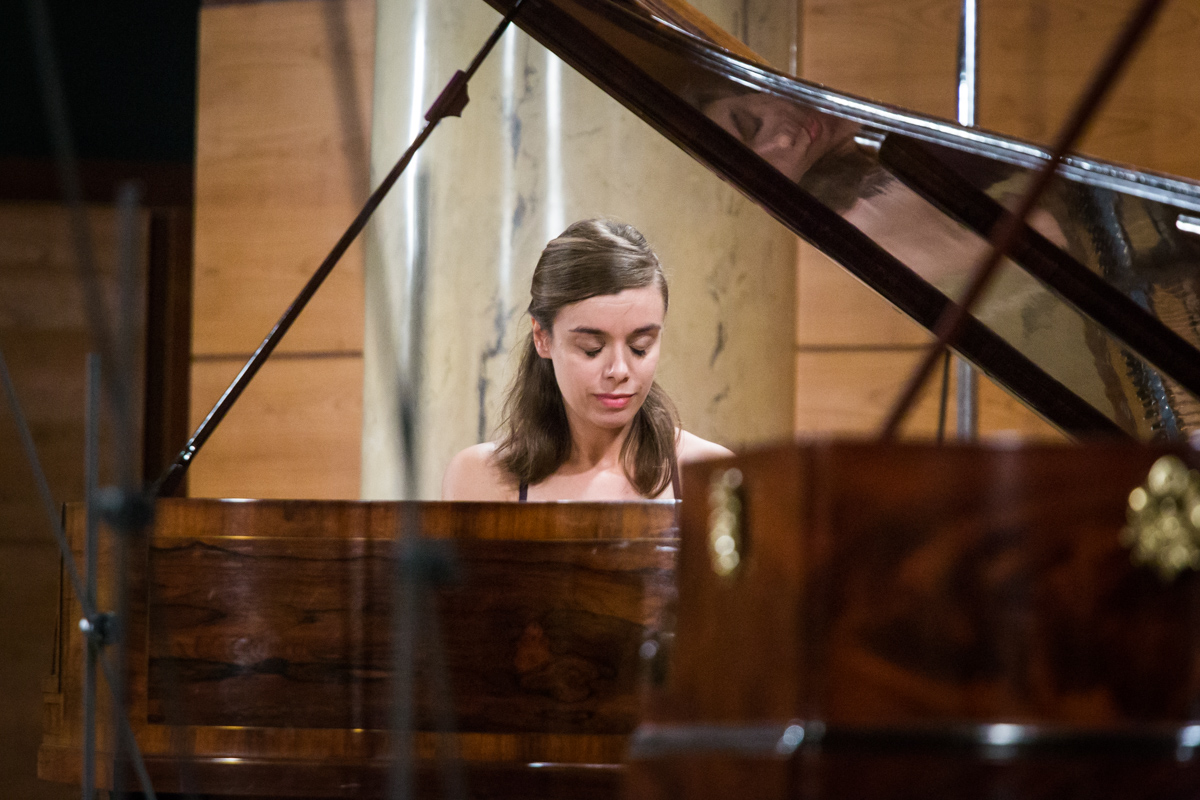
She opened her recital with the two polonaises Op.26. The C-minor began well but I felt that the glorious song trio did not emerge with sufficient lyrical character. I think her fiorituras could be far better phrased and considered not simply dashed off. The E-flat minor polonaise was better conceived but requires maturity to fully explore. For me this is close to being his greatest expressive polonaise with an extraordinarily deep conception of tragic beauty from the opening. The remarkable use of silence, pauses and varied dynamics can be heartbreaking and requires close attention. Silence is as powerful or on occasion more powerful than sound. Explosions of energy occur in this extraordinary work and few pianists of any stature can grasp its dark implications.
Her Op.17 Mazurkas on the 1842 Pleyel were expressed with idiomatic Polish charm and grace. I would not presume to ever tell a Polish pianist or musician anything at all about mazurka rhythm. Even Chopin almost had fisticuffs with Meyerbeer over the question. I do not really understand it fully myself – much to the not so secret satisfaction of my Polish friends!
Then to that immense masterpiece of Western music, the Sonata in B minor Op. 58. The opening Allegro maestoso began strongly and purposefully the development of this ‘balladic’ form was handled well structurally certainly but I was yearning for more emotional possession and exaltation. The Scherzo and trio adequately ushered in that remarkably meditative Largo which possessed moments of moving nocturne-like cantabile (reminiscent of the Nocturne in C minor) achieving a remarkable immobility. During the Finale. Presto non tanto I was not always carried away unresistant by this frenetic, distraught, thrilling music with its inexorable forward drive teeming with images of galloping horses or the Furies. However it was a satisfying enough rendition on many levels.
This perceived limitation may well have been the Erard or the increasing dislocation of my own ears programmed with recorded utterances of sublime power and virtuosity on Steinways by the greatest pianists of last century or our own time. This is one aspect of the competition that I find supremely instructive and thought provoking. How programmed, even brainwashed we have become to a certain view of Chopin’s music through concerts and recordings on the D model Steinway. In this competition we are constantly presented with an alternative soundscapes for his music. Alternative instruments of great variety of timbre and sound palette would have been available to him for concerts (but not for us) and used to stimulate his imagination. He writes of these offered choices often in his letters.
Also the competition is an extraordinary opportunity to hear his music on period instruments with an intensity and variety never before experienced anywhere. Utterly unique. Perhaps in London or Warsaw one has attended an isolated concert now and then on an Erard, perhaps even a Pleyel, but at this all enveloping level of exposure all day for over two weeks ? Remarkable and utterly unique…..oh, and I have never become bored by the variety of sound. Incidentally the Erard seems to have largely supplanted some of the other instruments in Stage II like the Buchholtz, the Graf and the Broadwood. Perhaps not so surprising it is almost always the most popular choice. The action and feel resemble our modern instruments so closely.
Fryderyk Chopin
Polonaise in C sharp minor, Op. 26 No. 1
Fryderyk Chopin
Polonaise in E flat minor, Op. 26 No. 2
Fryderyk Chopin
Mazurka in B flat major, Op. 17 No. 1
Fryderyk Chopin
Mazurka in E minor, Op. 17 No. 2
Fryderyk Chopin
Mazurka in A flat major, Op. 17 No. 3
Fryderyk Chopin
Mazurka in A minor, Op. 17 No. 4
Fryderyk Chopin
Piano Sonata No. 3 in B minor, Op. 58
11:10 AM Agnieszka Korpyta (Poland)
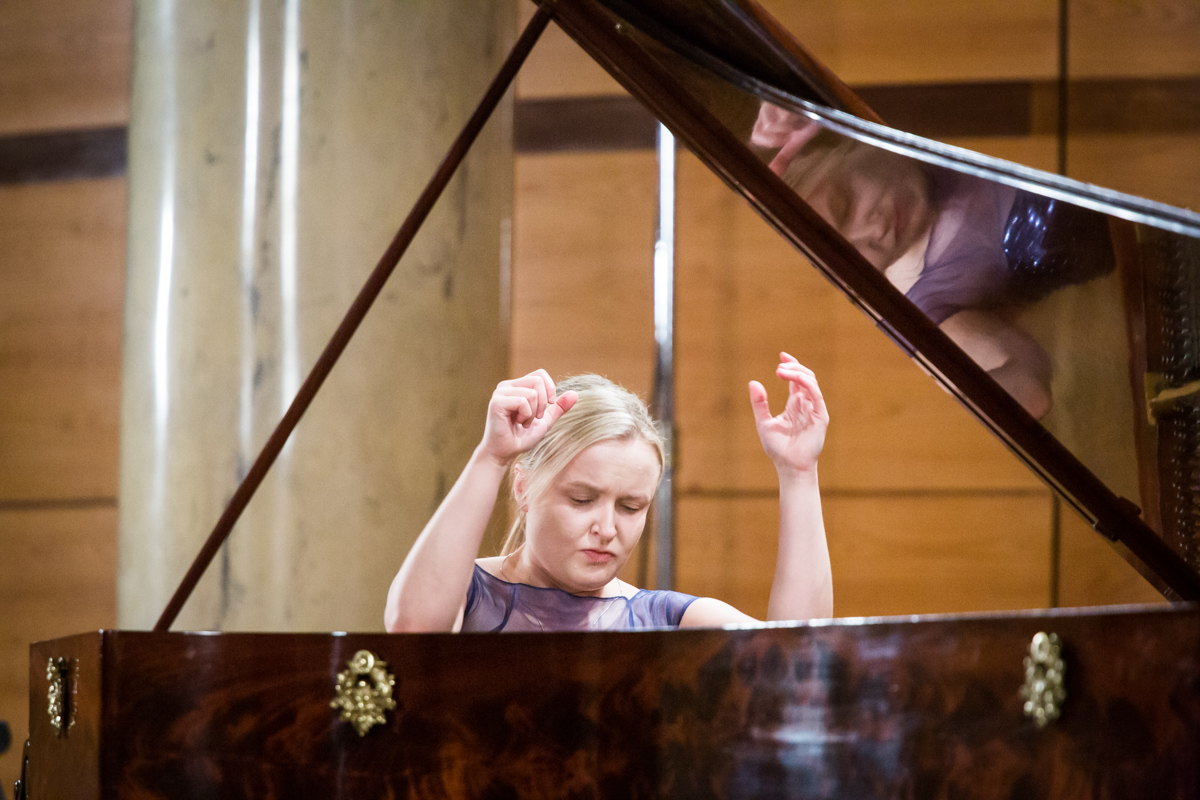
Her conception of many works on her programme were so individualistic and so far at variance with my own I would prefer not to comment. Also her physical treatment of the period piano for me left a great deal to be desired. I still greatly miss Katarzyna Hajduk-Konieczna (Poland). I find this exclusion from Stage II inexplicable in light of other far less appropriate choices.
Fryderyk Chopin
Polonaise in A flat major, Op. 53
Fryderyk Chopin
Mazurka in G major, Op. 50 No. 1
Fryderyk Chopin
Mazurka in A flat major, Op. 50 No. 2
Fryderyk Chopin
Mazurka in C sharp minor, Op. 50 No. 3
Fryderyk Chopin
Piano Sonata No. 3 in B minor, Op. 58
10:00 AM Dinara Klinton (Ukraine)
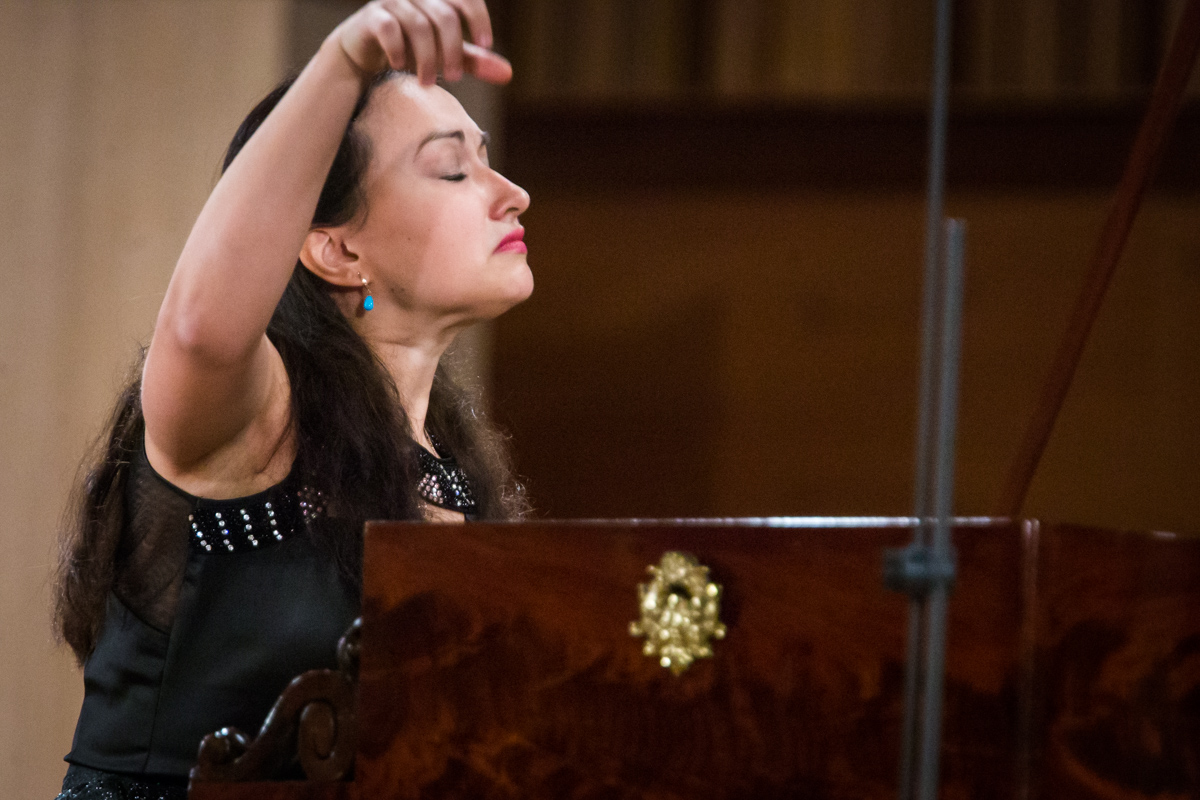
Polonaise in F sharp minor, Op. 44
Fryderyk Chopin
Mazurka in C minor, Op. 30 No. 1
Fryderyk Chopin
Mazurka in B minor, Op. 30 No. 2
Fryderyk Chopin
Mazurka in D flat major, Op. 30 No. 3
Fryderyk Chopin
Mazurka in C sharp minor, Op. 30 No. 4
Fryderyk Chopin
Sonata in B flat minor, Op. 35
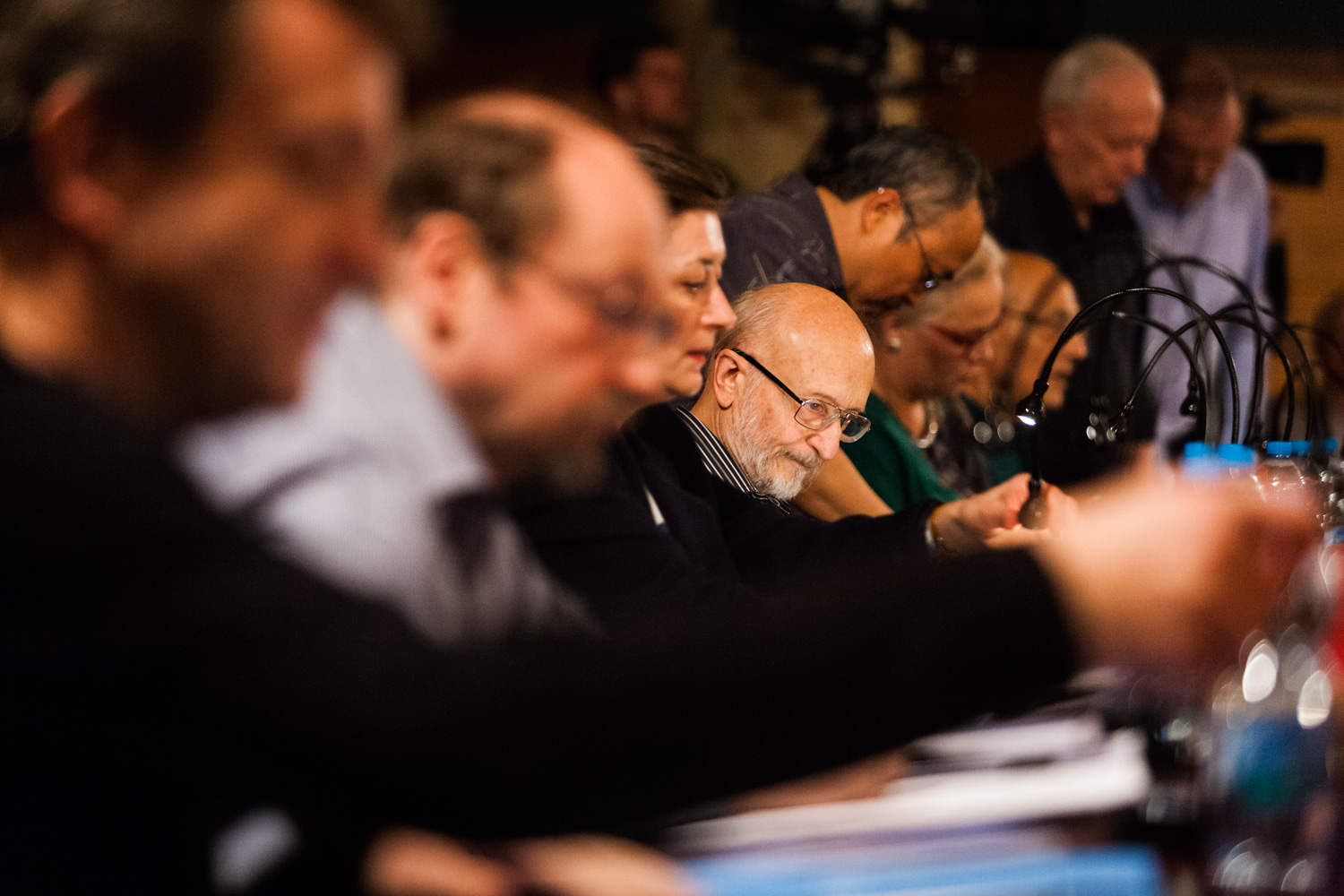
Stage II Day 1 September 8
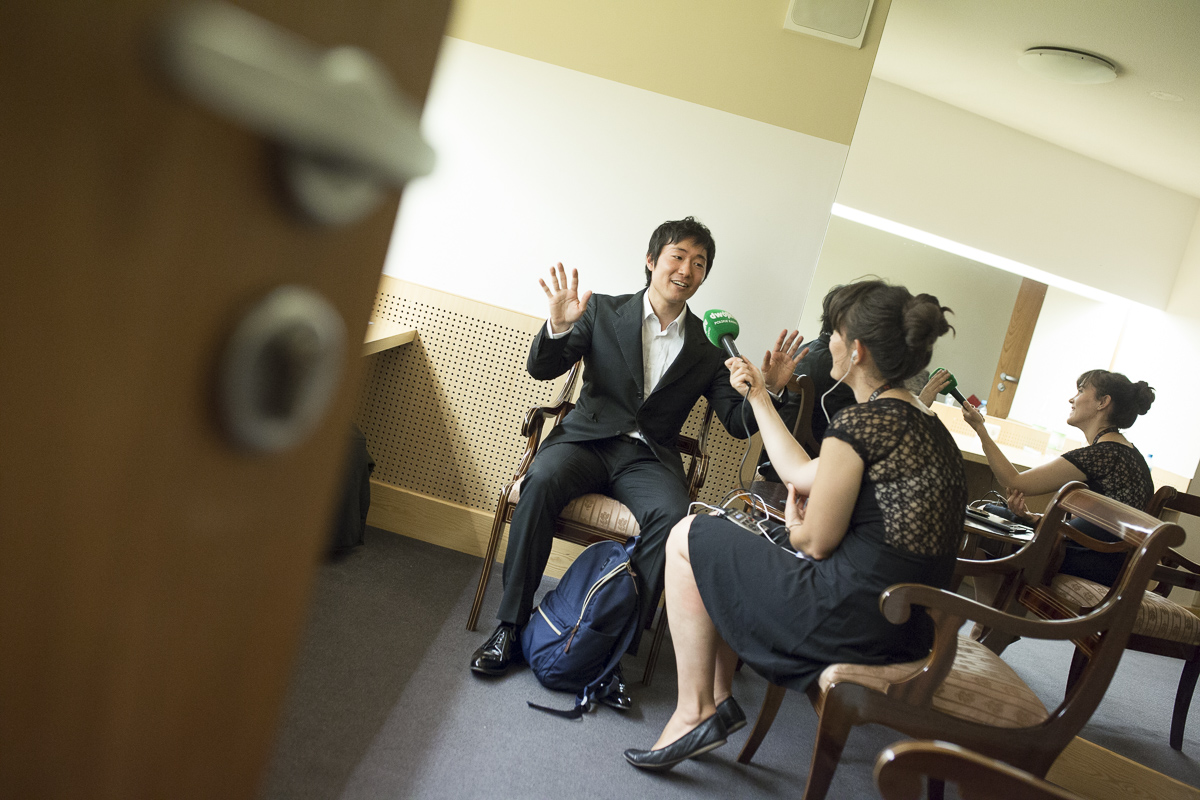
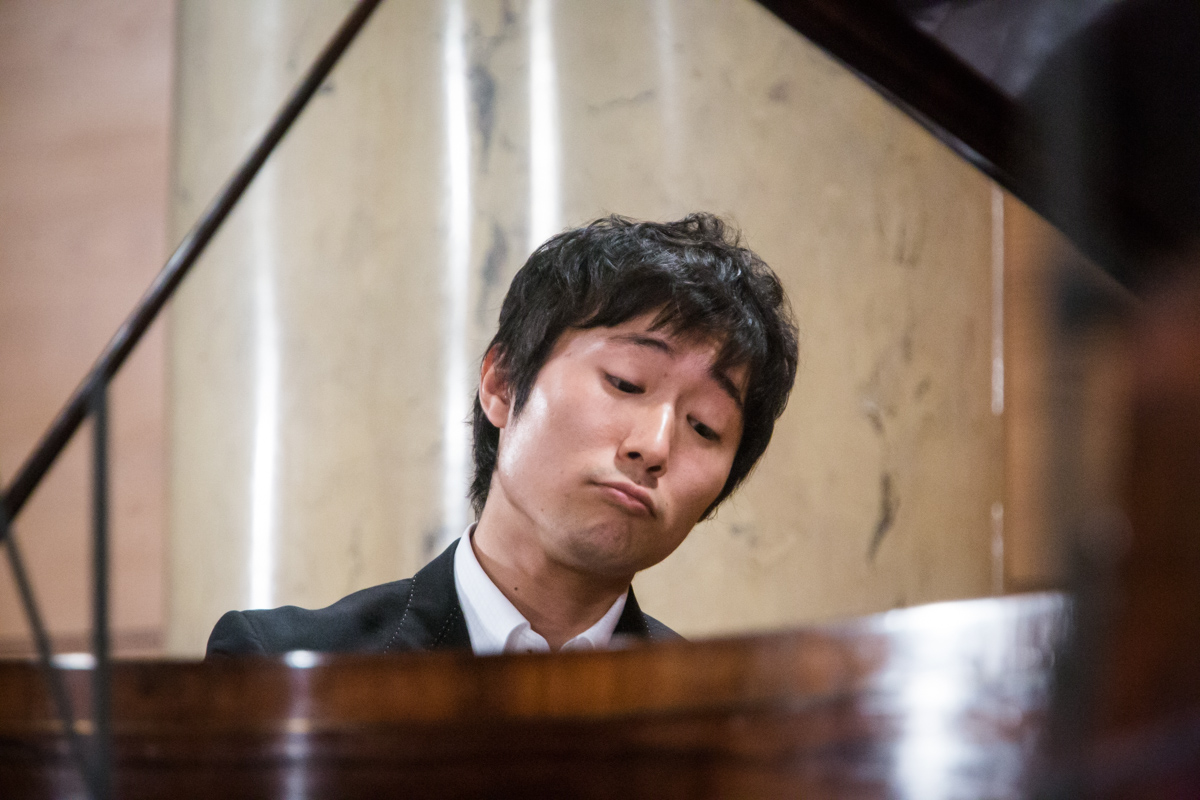
Polonaise in C sharp minor, Op. 26 No. 1
Fryderyk Chopin
Polonaise in E flat minor, Op. 26 No. 2
Fryderyk Chopin
Mazurka in G minor, Op. 24 No. 1
Fryderyk Chopin
Mazurka in C major, Op. 24 No. 2
Fryderyk Chopin
Mazurka in A flat major, Op. 24 No. 3
Fryderyk Chopin
Mazurka in B flat minor, Op. 24 No. 4
Fryderyk Chopin
Sonata in B flat minor, Op. 35
5:00 PM Antoine de Grolée (France)
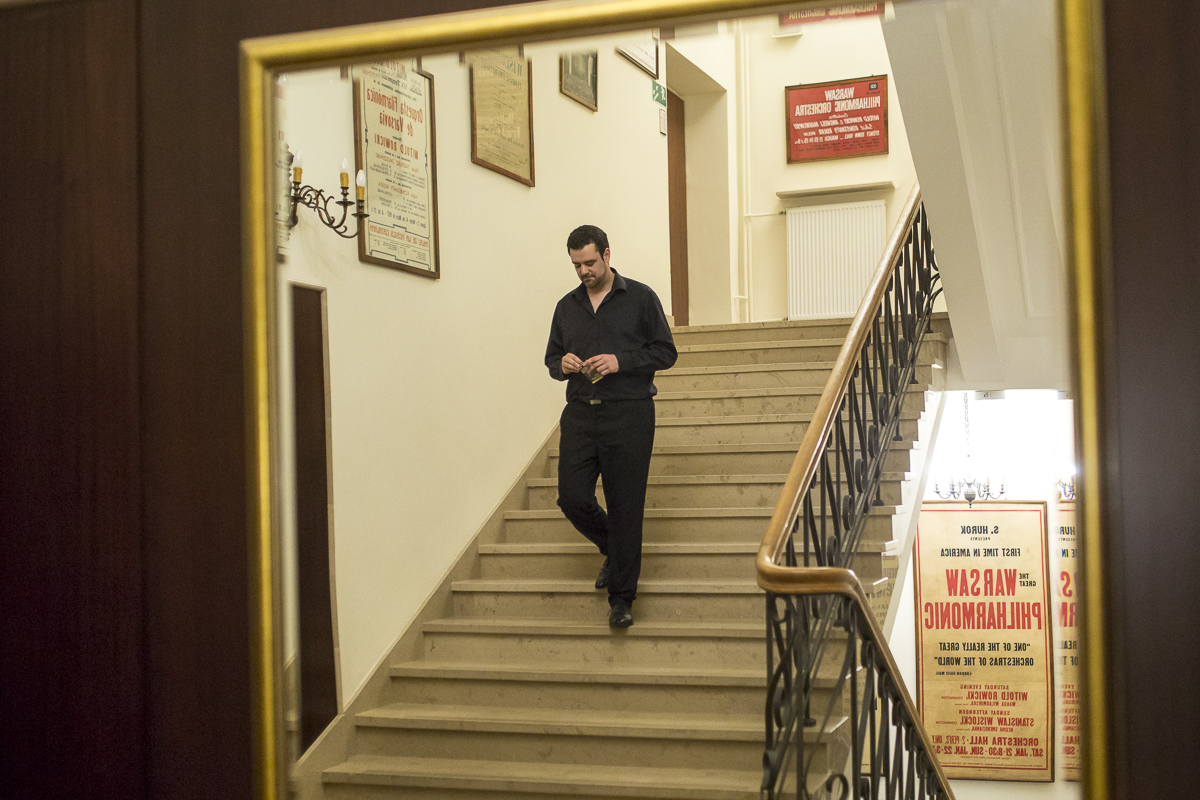
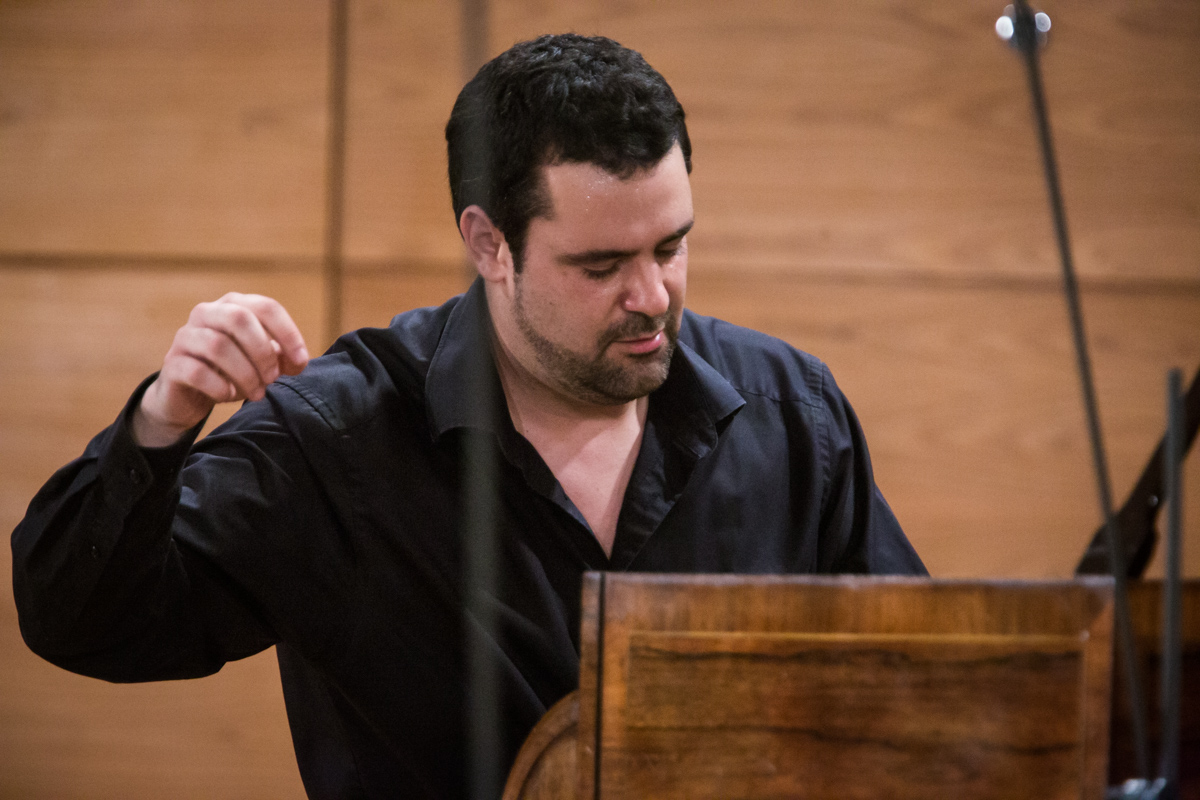
Fryderyk Chopin
Piano Sonata No. 3 in B minor, Op. 58
Fryderyk Chopin
Mazurka in C minor, Op. 30 No. 1
Fryderyk Chopin
Mazurka in B minor, Op. 30 No. 2
Fryderyk Chopin
Mazurka in D flat major, Op. 30 No. 3
Fryderyk Chopin
Mazurka in C sharp minor, Op. 30 No. 4
Fryderyk Chopin
Andante spianato and Grande Polonaise Brillante in E flat major, Op. 22
I felt from the first stage that although this pianist was certainly accomplished he had not sufficiently accommodated to the period piano to give of his best. This feeling was rather confirmed in his Stage II recital. He opened with the Sonata Op.58 on the 1837 Erard. A well prepared but not particularly individual view of the extraordinary Allegro maestoso as I felt it was not a true maestoso in character. The movement begins with great strength of character and then a doubt creeps in. Another resolute moment until the ecstatic lyrical rhapsodic theme takes over. The fluctuation of moods is extraordinary in this movement. I felt there was not quite enough dramatic differentiation of these moods in his account.
He began the unrealistic dream world of the Scherzo well but did not sufficiently utilize the fairy lightness achievable on the Erard. The beginning of the Largo was conventionally violent (when I feel it should be eased into despite the fortissimo indications which can simply be interpreted in this context as louder and certainly not as sforzandos as we must soon come down to pianissimo then sostenuto) . The movement then moves a serious cantabile nocturne, a true meditation on life and entry into an almost Chopinesque stream of consciousness thought process. His cantabile was quite beautiful however and in this way he has cultivated a delicate touch on the Erard. We returned to the harshly masculine tone in the Finale. Presto non tanto. He was sensitive but tended to get carried away into ‘rough territory with the strength of his own virtuosic velocity. The movement did not emerge into a three dimensional rounded view.
The Mazurkas from Op. 30 on the 1842 Pleyel were pleasant but not sufficiently differentiated in character for me. I was most impressed with the C-sharp minor.
The essential nature of the styl briliant of which the Grand Polonaise Brillante Op.22 is an essential representative of Chopin’s early Varsovian style, seems rather a mystery to modern pianists outside of those living in Poland. Perhaps I am hopelessly wrong. Jan Kleczyński writes of this work: ‘There is no composition stamped with greater elegance, freedom and freshness’. The style involves a bright light touch and glistening tone, varied shimmering colours, supreme clarity of articulation, in fact much like what was referred to in French as the renowned jeu perlé. There are also vital expressive elements of charm, grace, taste and elegance.
The Andante spianato (which Chopin often used to perform as an isolated piece he loved it so much) was pleasant, understood as a nocturne and a lovely introduction. The ‘call to the floor’ for the polonaise was strident and well handled (an instrumental custom well understood by Chopin who in his youth was mad about dancing, a fine dancer and also an excellent dance pianist into the small hours hence his need for rehab at Bad Reinherz – now Dusznki Zdroj). However this was not style brillante I’m afraid. The many fiorturas were not presented as Venetian lace, the hand and touch far too heavy, too muscular and robust, at least on an Erard, an instrument capable of both refinement and volume not requiring weight. Not a great deal of early Chopinesque refinement or elegance here. Please, that is not to say it was not very well played, a courageous decision to perform it, just stylistically inaccurate and especially a waste of potential on an Erard.
12:20 PM Eric Clark(United States)
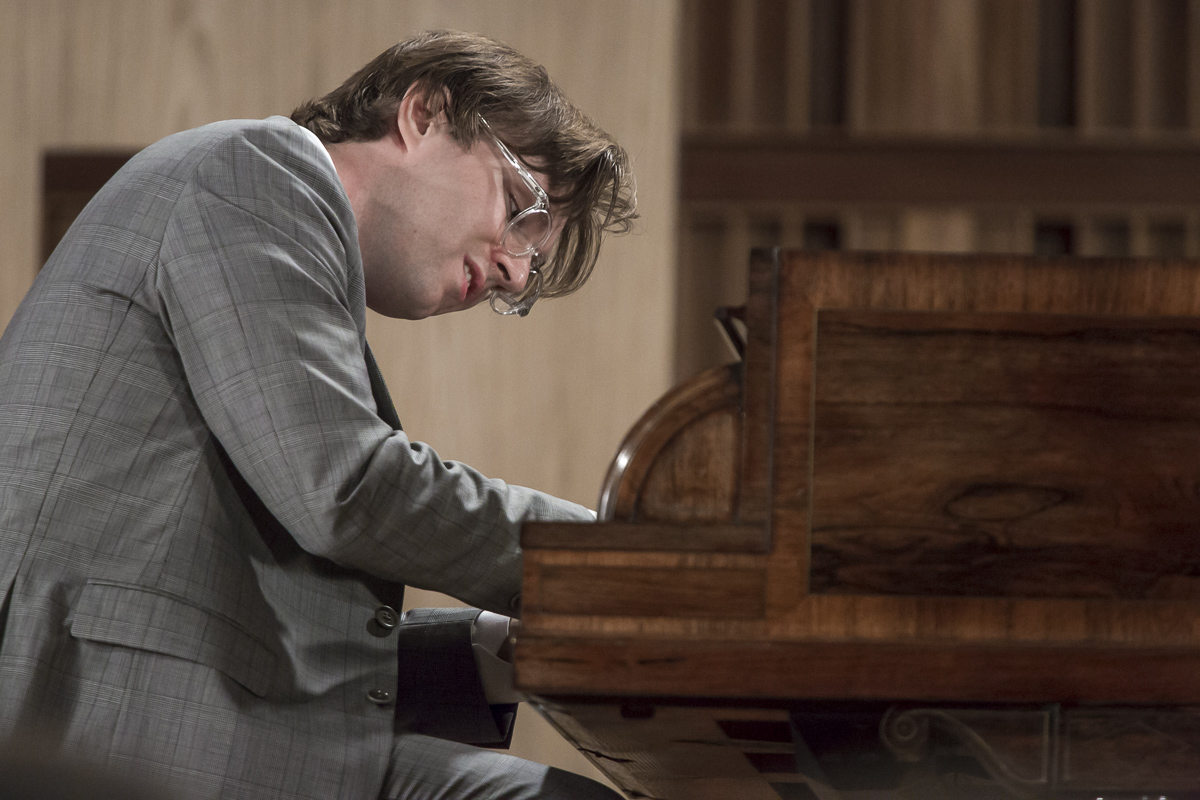
Eric Clark began his second stage with the three Chopin Op. 56 Mazurkas played on the 1842 Pleyel. The B major was energetic with good rhythm, the C-major impressively nostalgic and idiomatically Polish and the C-minor maintained an impressive contrast between the ‘rustic’, ‘bucolic’ and ‘village tavern’ associations of the Chopin mazurka with the nostalgic reminiscences of a civilized and sophisticated mind.
His performance of the great F-sharp minor Polonaise on the Erard was an excellent choice given the anger and protest that suffuses this piece. The Mazurka ‘trio’ was presented as an extraordinarily lyric contrast to the fantasy nature of this polonaise. I felt it to be a rather uncomplicated and straightforward ‘masculine’ Chopin performance (as with much of his recital) if I might be so gender prejudiced in 2018. And none the worse for that point of view. From the piano sound aspect that insistent almost aggressive left hand repetition that on a Steinway in the wrong hands can become almost insupportable, but on an Erard or other period piano it is much attenuated in the bass (straight stringing on such instruments) and far better balanced.
The B-flat minor Sonata opens with a marvelous deep and mysterious resonance on this Erard. Clark here presented Chopin as a man of great strength of character in an eloquent opening movement that did not explore other boundaries of interpretation to the usual magnificence of the music. The Scherzo was suitably agitated but the trio for me could have had far more of a bel canto song-like character. The Marche funebre was at an moderate, well-judged tempo – so important in this grief stricken work. The trio beautifully expressed the nostalgia of past joys experienced with the departed. The Presto was virtuosic and fascinating in its internal counterpoint which I felt on the Erard created an atmospheric scene of rattling skeletons and a mind in torment wandering through a blighted landscape by Salvator Rosa.
However I also felt his tone and touch at the instrument not particularly captivating. This raises an important observation I have considered during the entire competition. Tone and touch, the quality of the sheer sound produced, are so little spoken of today in appraising a pianist, so obsessed are we with structural, historical and biographical concerns. Is this a result of the massively ready-made, technologically perfect sound of Steinway and Yamaha? On period instruments the player must work at producing an alluring sound, something that is becoming increasingly and interestingly obvious during this competition. The same instrument can sound dramatically different with each and every player. Chopin spoke obsessively of the absolute importance of producing a beautiful tone and touch (the Pleyel being more difficult than the ‘ready made’ tone on the Erard as did in more modern times the great pedagogue Heinrich Neuhaus.
Fryderyk Chopin
Mazurkas Op. 56
Fryderyk Chopin
Polonaise in F sharp minor, Op. 44
Fryderyk Chopin
Sonata in B flat minor, Op. 35
11:10 AM Dmitry Ablogin(Russia)
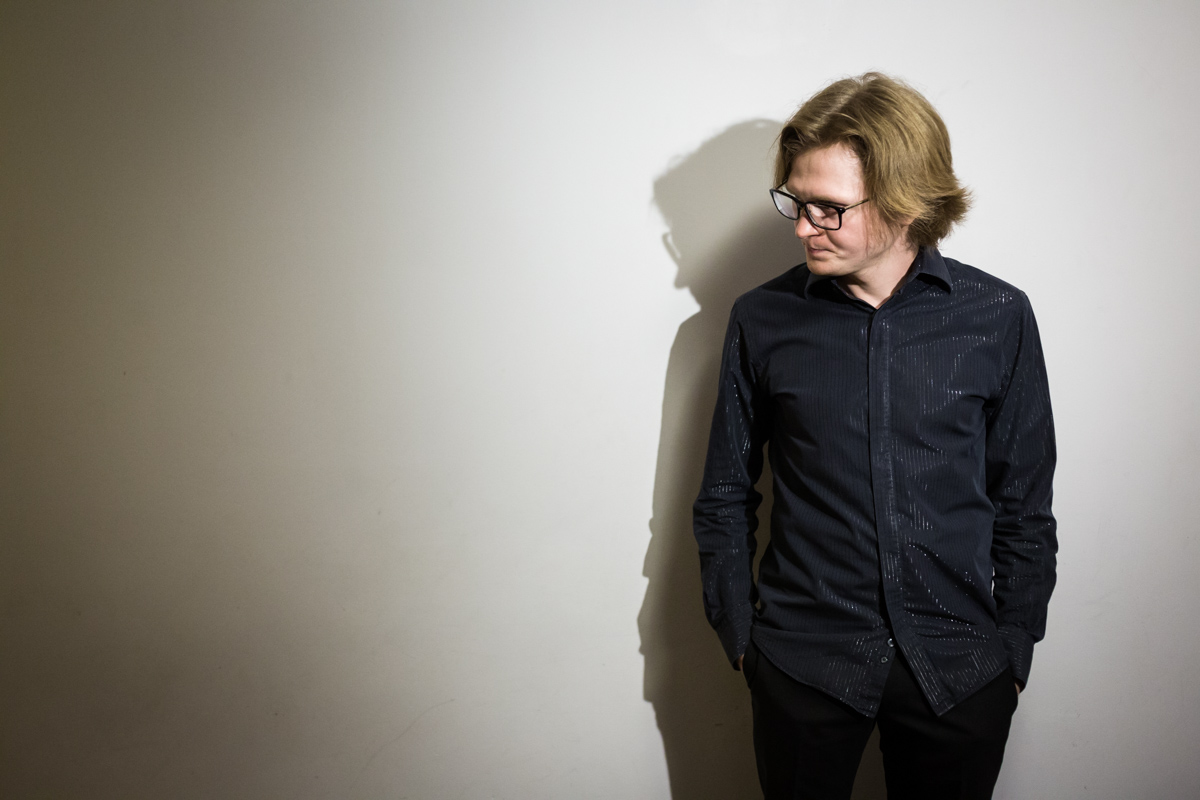
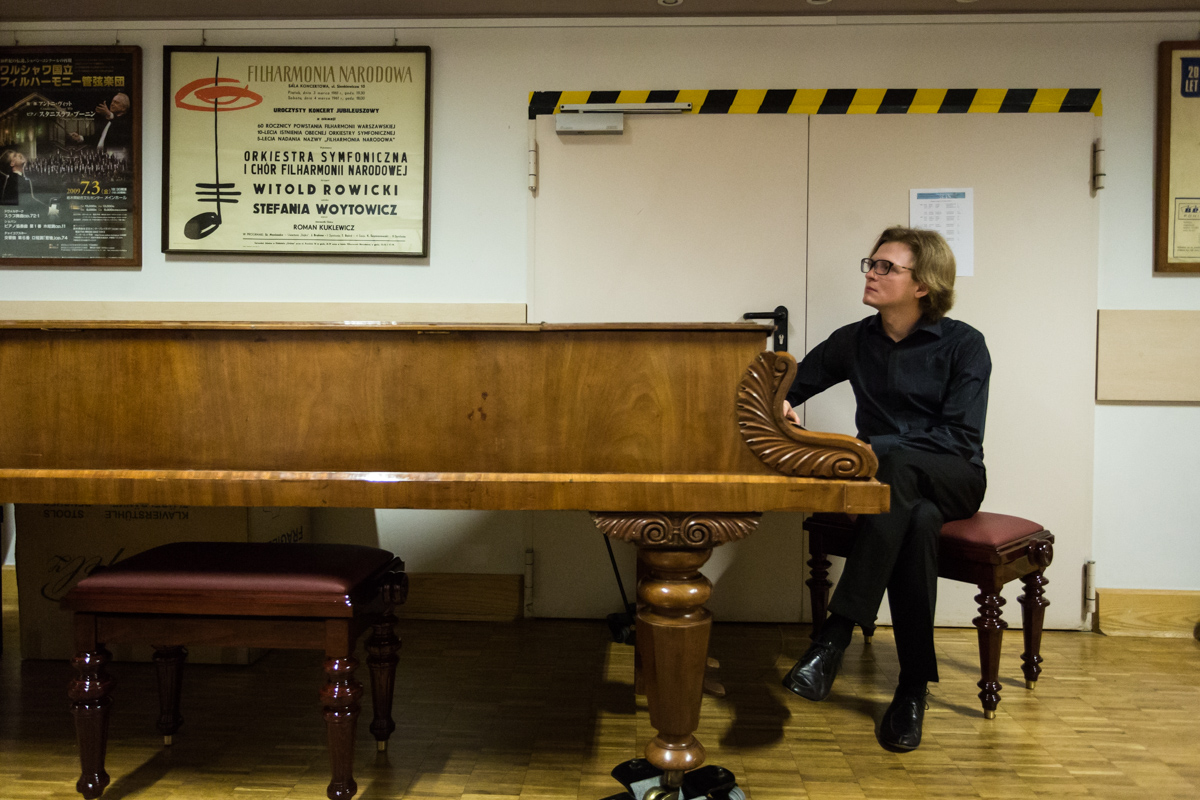
He chose to play his entire programme on one instrument, the 1842 Pleyel. He began with two Polonaises. The C-minor could have been begun with slightly more nobility as it still contains elements of the highly stylized dance. The Trio has always been respected and as Tomaszewski writes:
Interpreters generally see this…[close to operatic aria]… as bringing highly-charged erotic moments to this generically heroic work, citing the contrast between ‘pain bordering on despair’ and ‘heavenly delight’, as well as the ‘barely stemmed tears’.
The E-minor was much more successful in terms of the nobility of protest. More yearning for freedom, despair and the overwhelming presence of Polish żal (melancholic bitterness). His phrasing was most eloquent and the whole emerged as most atmospheric. The greatest polonaise in so many ways to my mind but also the one containing the most darkness and despair.
More pleasant ‘preluding’ to introduce the Op. 50 Mazurkas. I liked them all but was particularly impressed with the extensive C-sharp minor where he controlled this developed narrative with great emotional insight. Then to a quite visionary and unique view of that masterpiece of composition, the B-flat minor Sonata. George Sand wrote in her The Story of My Life:
‘His creativity was spontaneous, miraculous’, wrote Sand , ‘he found it without seeking it, without expecting it. It arrived at his piano suddenly, completely, sublimely, or it sang in his head during a walk, and he would hasten to hear it again by recreating it on his instrument. […] But then would begin the most heartbreaking labor I have ever witnessed. […] He would shut himself up in his room for days at a time, weeping, pacing, breaking his pens, repeating or changing a single measure a hundred times, writing it and erasing it with equal frequency [here the writer seems to have got carried away], and beginning again the next day with desperate perseverance. He would spend six weeks on a page, only to end up writing it just as he had done in his first outpouring.’
The opening Grave. Doppio movimento was restless with remarkable forward impetus and a feeling of almost sinister mystery. The association of galloping horses on a dark night was inescapable. Ablogin often gives one this feeling of creative improvisation. The Scherzo continued the rather forceful mood already created and he made much of the song in the Trio. His tone glows without aggression and his touch is refined and elegant, so unlike the prejudices one might have concerning the Russian School of Chopinists.
One should not perhaps forget the patriotic associations of the Marche funebre. Lento for Chopin in commemorating the November Uprising. The universality and inevitability of death now associated with it has grown inexorably over the hundred and eighty years or so since its composition. The stories of the composer beset with sepulchral visions and monstrous forms emerging from his piano during performances and the composition of the piece may not be apocryphal.
Ablogin’s return of the Funeral March up tempo after the disembodied, reflective and melancholic Trio (superb and haunting pianissimos here) was quite otherworldly and utterly inspired. The unhinged mind and the madness of Lucia di Lammermoor were inescapable associations. The left hand began a deeply moving tolling of funeral bells – something I have never encountered before in performance and profoundly effective and affecting emotionally. The tragedy and the darkness of unavoidable grief. Ablogin revealed in the Presto a quite extraordinary control and transparency of polyphony and counterpoint, as he had done throughout the other movements, but with uncanny effect here. For me it was an expression of the unhinged grief of the mind.
Yes a visionary and unique view of this masterpiece of Western music. In competition terms this was a far finer stage for Ablogin than his initial presentation.
Fryderyk Chopin
Mazurkas Op. 50
Fryderyk Chopin
Polonaises Op. 26
Fryderyk Chopin
Sonata in B flat minor, Op. 35
10:00 AM Aurelia Visovan(Romania)

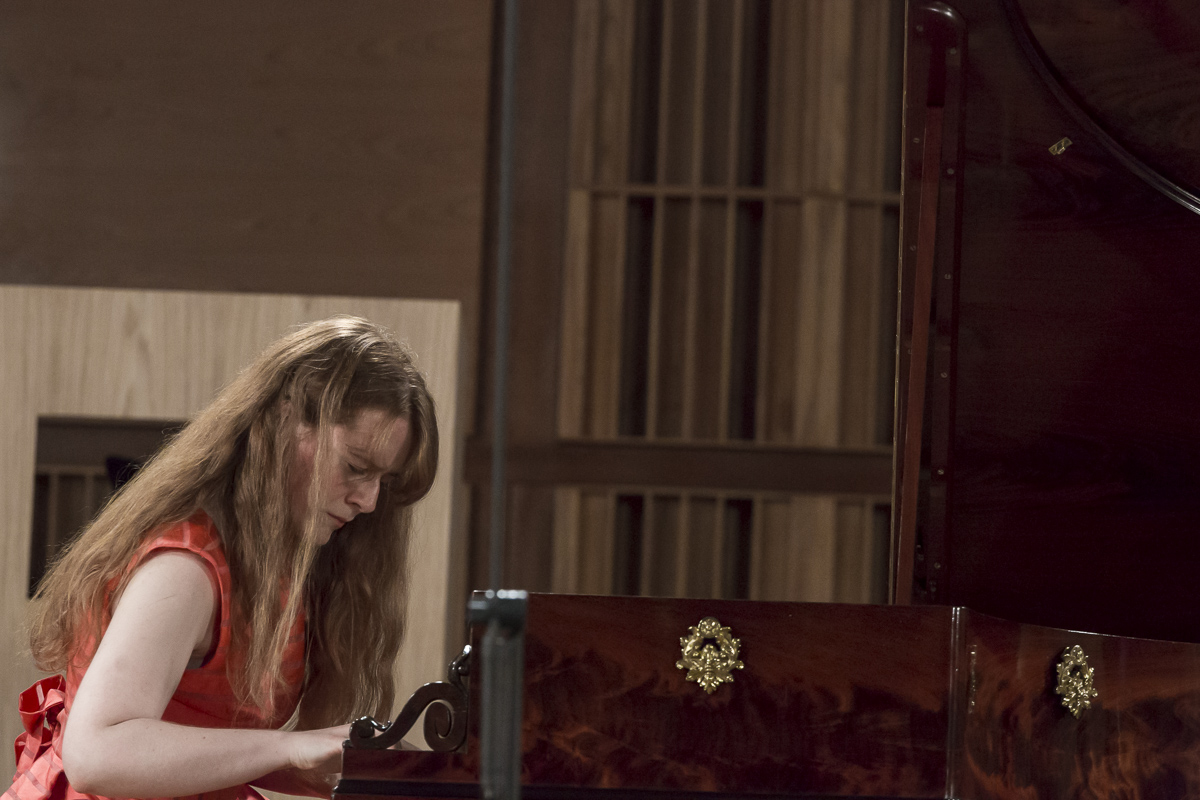
The sonata began in the most seductive way imaginable on the 1842 Pleyel. The tempo was absolutely appropriate to the nobility inherent in the Chopin indication Allegro maestoso. The luminosity of the cantabile was divine in a word. Visovan understands the sound and colour palette of this instrument intimately. The internal details became abundantly clear throughout but never dynamically overwhelming, never exaggerated or ‘hysterical’. Unsentimental, yet so desperately moving. The transparency and colour she extracted from this instrument put me in mind of gazing in wonder at the radiant stained glass windows of Chartres Cathedral.
The Scherzo was light and airy (as a Scherzo should be) using the sustain pedal with discretion as the sound simply warms and changes the timbre under its influence. The demi-staccato articulation was balanced and superb.
The Largo began at a far lower dynamic level than the usual aggressive statement which can often be so inappropriately brutal on a Steinway. The most striking aspect of this movement was the tempo. Rather fast for what one normally associates with the indication ‘Largo’. Do we really know accurately the nature of such an indication on the lightweight action of these pianos? Not all Italian tempo indications translate accurately in terms of their conception into all world languages. But her breathing and phrasing was so musical it became irrelevant. The Largo became almost rhapsodic rather than emotionally indulgent and dragging interminably which is all too common. There was a wonderful Pleyel sound in this movement with the balance of right and left hands. In short a revelation.
The Finale. Presto non tanto began with an ominous subterranean rumble in the bass. The movement as whole achieved what one might term an existential urgency. The counterpoint and polyphony were so clear and affecting as were the harmonic transitions. Inspired and utterly brilliant pedaling. Again the bass perfectly balanced against the treble and a rhapsodic conclusion.
In the Mazurkas, Visovan was so sensitive to harmonic transitions and rhythm. The C-major possessed an incandescent sound with the superb cantilena one can produce in the left hand, singing magically below the right. Pleyels can achieve this balance of voices like no other piano. The A-flat major with its legato and subtle changes of harmonic mood were so savoured by this artist. The undamped overtones provided a magical sound landscape. Not for the first time I was reminded of Dinu Lipatti. I suppose all Romanian pianists adore his Chopin. In the B-flat minor it was if we were witnessing a hesitant soul coming to life. So tasteful and deep a vision of life did Visovan present: Joy to Reflection to Resignation to Acceptance. Such a panorama of emotions and emotional narrative. Some of the most beautiful Mazurkas I have ever heard.
The so-called ‘Heroic’ Polonaise was not played in the conventional manner as ‘majestic and magnificent’ but more as a memory or reminiscence of heroism. The cavalry section in the whirling left hand sounded like real horses to me and conjured up pictures in my mind of the Uhlan paintings of Jerzy Kossak. No theatrical depictions here and not a single doubt of her self-effacing integrity.
After such a recital I have come to the conclusion that on this particular 1842 Pleyel the entire Chopin sound landscape has changed for me in a truly inspired way…
Fryderyk Chopin
Mazurkas Op. 24
Fryderyk Chopin
Polonaise in A flat major, Op. 53
Fryderyk Chopin
Piano Sonata No. 3 in B minor, Op. 58
Stage 1 Day 3 September 6
10:00 PM Sijia Ma (China)
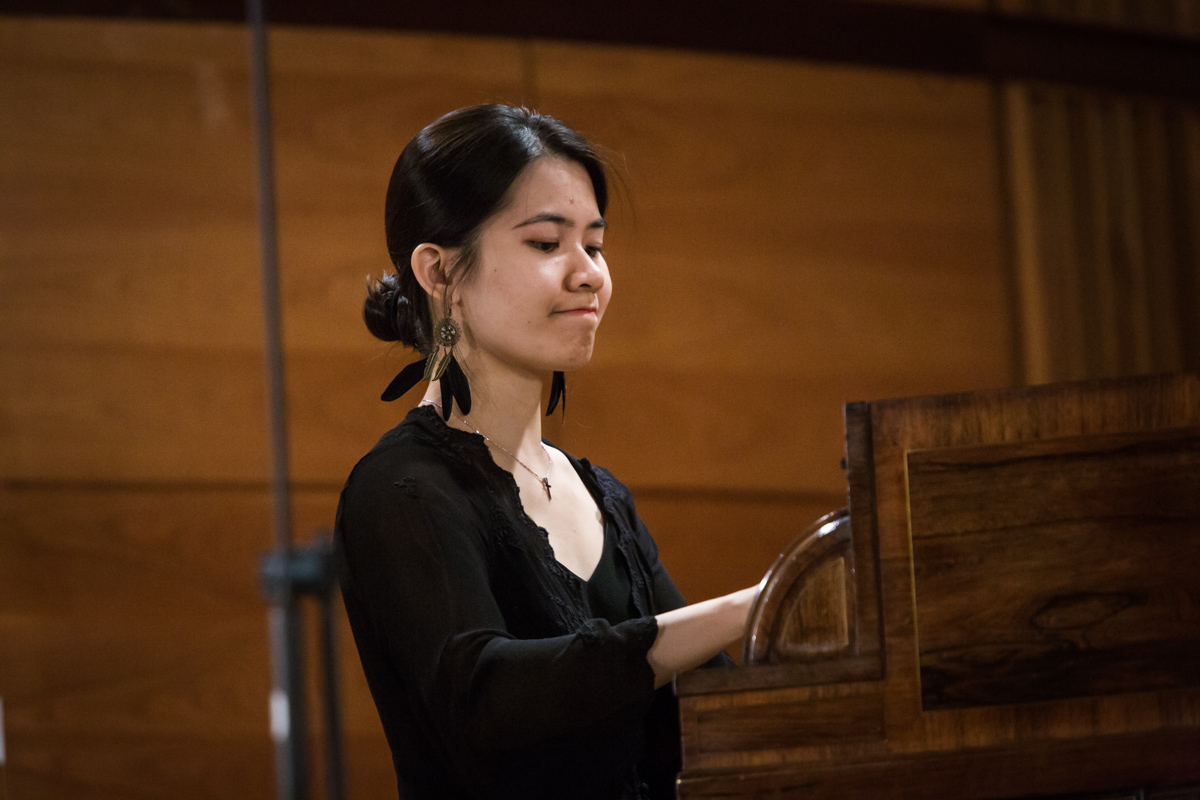
Johann Sebastian Bach
DWK I – Prelude and Fugue in E major, BWV 854
Fryderyk Chopin
Polonaise in G sharp minor [op. posth.]
Michał Kleofas Ogiński
Polonaise “Farewell to the Fatherland”
Fryderyk Chopin
Etude in F minor, Op. 25 No. 2
Fryderyk Chopin
Ballade in A flat major, Op. 47
In her opening Bach on the Erard I felt the prelude lacked stylistically but the Fugue had excellent clarity and polyphonic lines. The Ogiński Polonaise was charmingly performed but lacked a ‘Polish’ feel for me, a quality Chopin referred to as the ‘Polish element’ he felt was missing from otherwise good performances. The Chopin Polonaise on the 1847 Erard revealed she has not handled the transfer from Steinway to period instrument particularly well. The sound she produced from the rather forgiving instrument was not at all seductive. Her need for more experience on these instruments in terms of sound colour, touch and tone was obvious. In the Ballade, although perhaps acceptable on a Steinway I received the distinct impression she was playing with far too much weight – period instruments benefit more from finger legato and lighter touch.
10:35 PM Yui Nakamura (Japan)
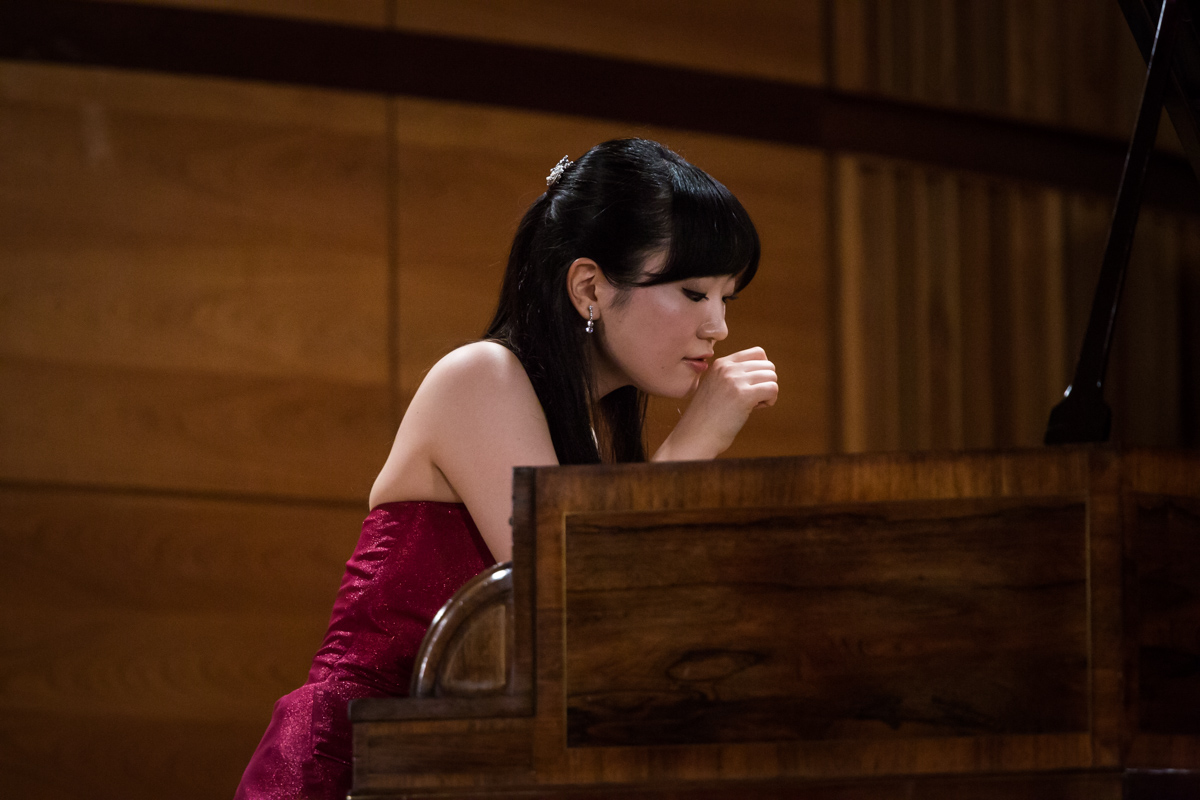
Johann Sebastian Bach
DWK I – Prelude and Fugue in F sharp major, BWV 858
Fryderyk Chopin
Etude in G flat major, Op. 10 No. 5
Karol Kurpiński
Polonaise in G minor
Fryderyk Chopin
Polonaise in D minor [Op. 71 No. 1]
Fryderyk Chopin
Ballade in A flat major, Op. 47
Her interesting CV indicates she is a prize-winner of many prestigious Asian piano competitions so I was keenly anticipating this recital.
The Bach Prelude and Fugue on the 1842 Pleyel were excellently performed with a good understanding of style and balanced polyphony. She adapted rather well to the 1847 Erard in the Kurpiński polonaise with an attractive tone extracted from the instrument and refined touch.
However with the Chopin Polonaise, also on the Erard, I came to the conclusion that she does not understand sufficiently deeply the idiom of the Polish polonaise dance with its nobility and emphasis on the noble Polish male with his moustache and sabre constantly adjusted ostentatiously in rhythm and ‘Maestoso’ throughout. However I felt she had natural musical gifts and a finely honed talent.
The Ballade on the 1842 Pleyel I found less satisfactory as it had clearly been almost too carefully prepared which gave little room for spontaneity, perceived spontaneity and deeply felt passionate emotions. This music must be felt to grow organically and powerfully from within the impassioned shifts of mood of the composer’s heart and spirit as well as maintaining its dramatic narrative flow. The Chopin Ballades are rather like small operas and should intensely reflect the fluctuating toy-shop of the heart. Is it possible for an interpretation to be over-refined?
11:10 PM Matthias Nauwelaerts (Belgium)
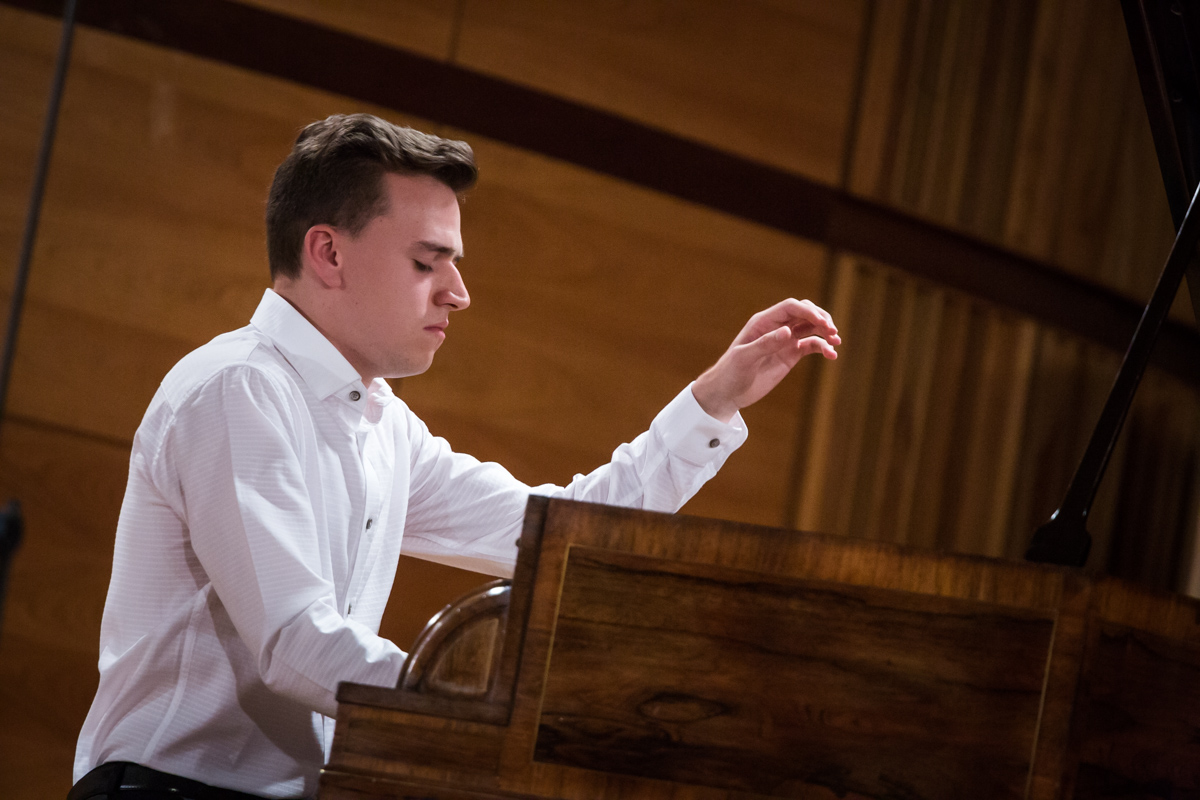
Johann Sebastian Bach
DWK II – Prelude and Fugue in D major, BWV 874
Fryderyk Chopin
Etude in G flat major, Op. 10 No. 5
Maria Szymanowska
Polonaise in F Minor
Fryderyk Chopin
Polonaise in B flat minor [Op. posth.] [op. posth.]
Fryderyk Chopin
Barcarolle, Op. 60
In the Bach I felt he was unused to he colors possible on an Erard and thus rather expressionless although certainly full of energy. I wanted to know what was happening within Prelude and Fugue.
The Chopin Etude and Polonaise seemed to me Steinway performances transferred directly the Erard without modification which is not what this competition is about. The Chopin polonaise indicated he was still rather locked into ‘Steinway Mode’ in a performance that may have worked well in a large hall on a D model concert grand but not here. Apart from this observation, these early youthfully illusioned works do not benefit from inflation to the ‘heroic’ proportions of political resistance inherent in the later Chopin polonaises.
The Szymanowska polonaise was pleasant enough but again I felt this player did not fully understand the feminine ‘salon style’ and the exquisite tonal range of the 1842 Pleyel he chose to play. Sometimes he showed a feeling for the unique qualities of the instrument but not often enough.
The Barcarole opened with rather a crash and developed not on a lagoon in Venice. I fondly imagine the work on an instrument of Chopin’s day as a romantic and tender dream that becomes somewhat agitated at times, not an unrelenting storm aboard the Titanic on the Atlantic. He should explore more the riches and the unique understated tonal qualities of the Erard.
12:10 PM Elizaveta Malysheva (Russia)
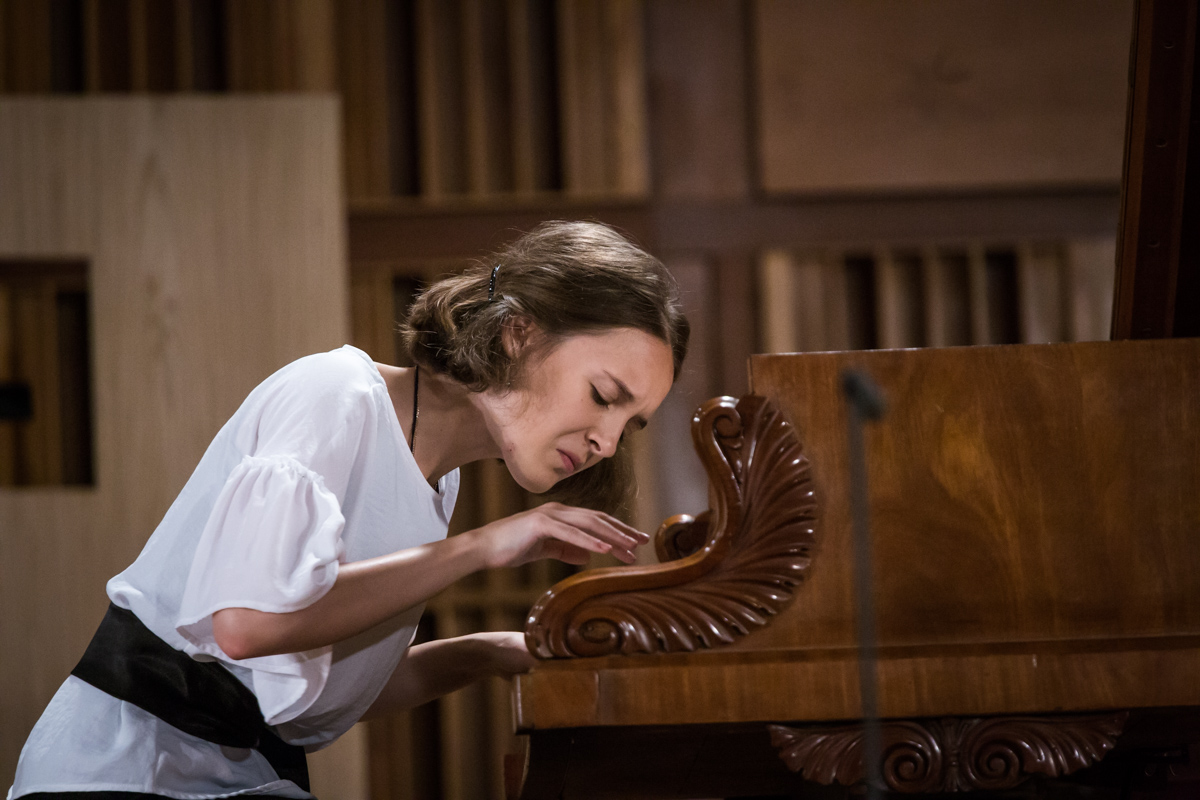
Johann Sebastian Bach
DWK II – Prelude and Fugue in B major, BWV 892
Fryderyk Chopin
Polonaise in B flat major [Op. 71 No. 2]
Karol Kurpiński
Polonaise in D minor
Fryderyk Chopin
Etude in G sharp minor, Op. 25 No. 6
Fryderyk Chopin
Ballade in F major, Op. 38
Interestingly she has studied in the harpsichord class of Olga Filippova in the Department of Contemporary and Historical performance at the Pyotr Tchaikovsky Conservatory in Moscow. This may account for her very light touch on these instruments.
In the Bach on the 1847 Erard, apart from a far too up tempo Prelude, she extracted perhaps the best tone from the Broadwood of any competitor so far. The demanding Fugue was dynamically varied and the polyphony highlighted sufficiently for a listener to decode the conversation within.
The Chopin Etude was less successful as the thirds in the treble register could on occasion scarcely be heard which disrupted and unbalanced the work for me. The piano or the pianist? However it did sound less ‘hysterical’ and overbearingly virtuosic on the Broadwood than it can on a less expressive Steinway.
The Kurpiński polonaise did expressively capture the feminine, charming ambience of the ‘salon’ well. The Chopin polonaise on the other hand, also on he Broadwood, had attractive fiorituras, tone and touch but I felt she had no real feel for this piece. The Ballade gave me the impression she has no real temperamental affinity with Chopin. There were all sorts of sudden sforzandos and bursts of energy for no apparent reason. The musical narrative she was engaged upon did not seem to be particularly coherent. There were quite a few solecisms as we progressed through it as there also were with the polonaise.
12:45 PM Kamil Pacholec (Poland)
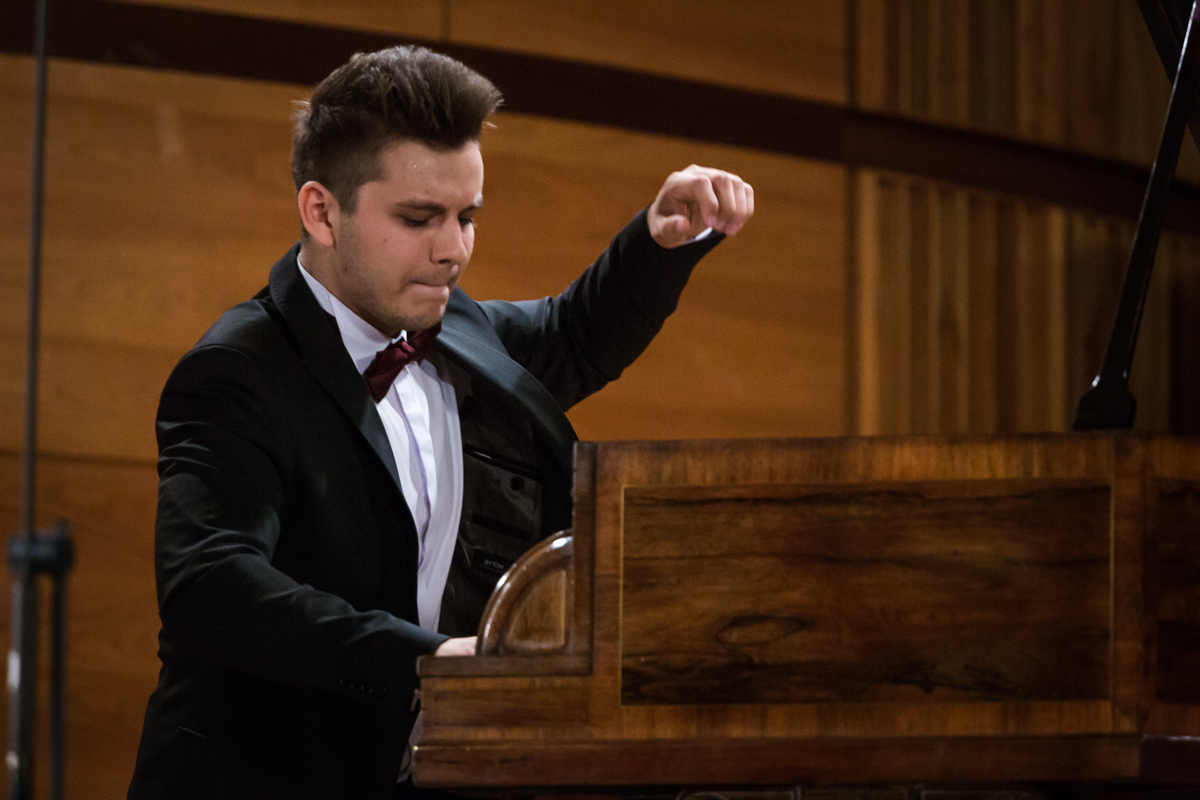
DWK I – Prelude and Fugue in C sharp minor, BWV 849
Fryderyk Chopin
Polonaise in D minor [Op. 71 No. 1]
Karol Kurpiński
Polonaise in D minor
Fryderyk Chopin
Etude in A minor, Op. 25 No. 11
Fryderyk Chopin
Ballade in G minor, Op. 23
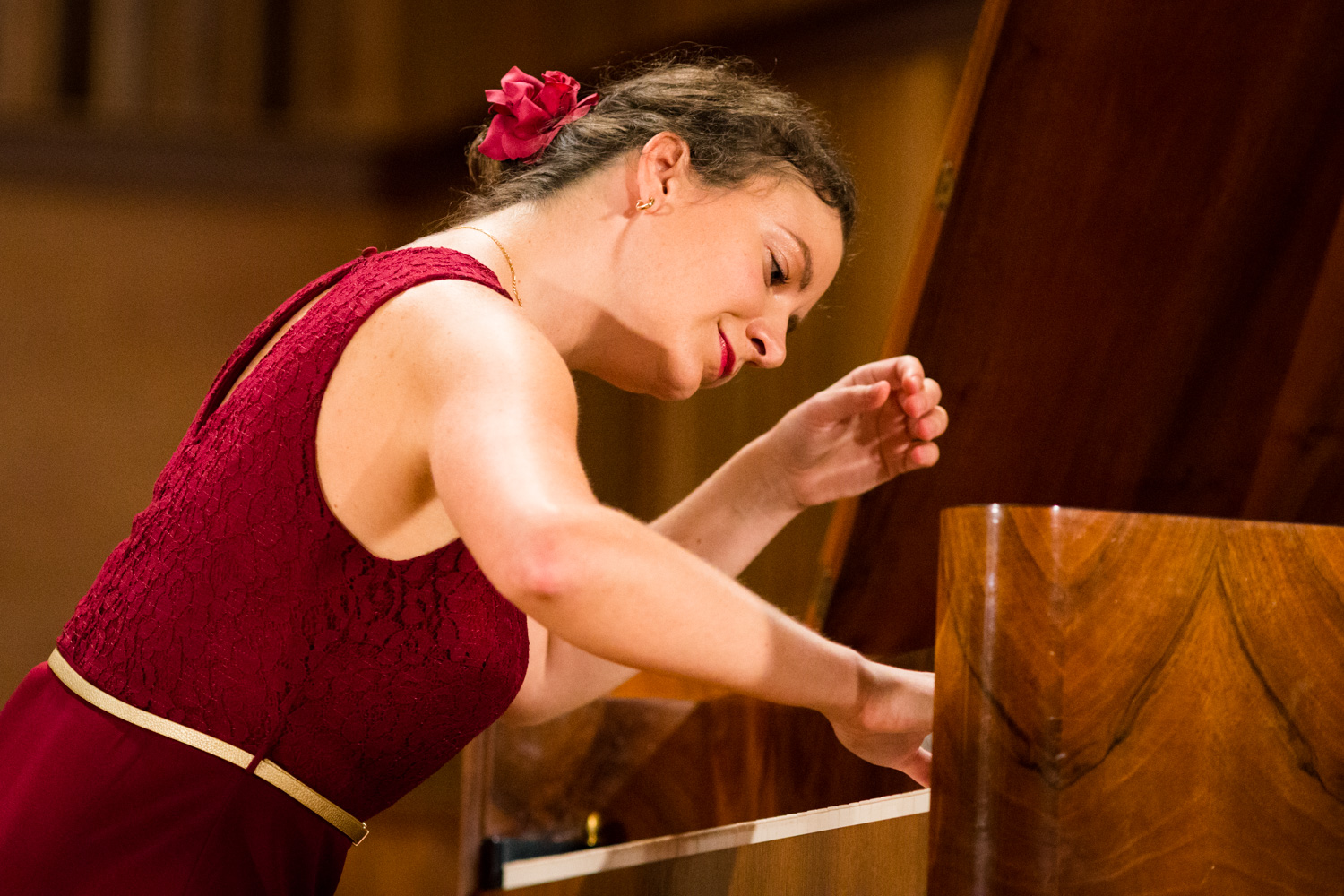
DWK I – Prelude and Fugue in E major, BWV 854
Fryderyk Chopin
Polonaise in G sharp minor [op. posth.]
Karol Kurpiński
Polonaise in G minor
Fryderyk Chopin
Etude in G flat major, Op. 10 No. 5
Fryderyk Chopin
Ballade in F minor, Op. 52
5:35 PM Siying Qin (China)

Johann Sebastian Bach
DWK II – Prelude and Fugue in C sharp major, alternative version, BWV 872a
Karol Kurpiński
Polonaise in D minor
Fryderyk Chopin
Etude in A flat major, Op. 10 No. 10
Fryderyk Chopin
Polonaise in B flat major [Op. 71 No. 2]
Fryderyk Chopin
Ballade in F minor, Op. 52
6:10 PM Tomasz Ritter (Poland)

DWK I – Prelude and Fugue in E flat minor, BWV 853
Fryderyk Chopin
Polonaise in G sharp minor [op. posth.]
Karol Kurpiński
Polonaise in D minor
Fryderyk Chopin
Etude in E minor, Op. 25 No. 5
Fryderyk Chopin
Ballade in F minor, Op. 52
7:10 PM Joanna Różewska (Poland)
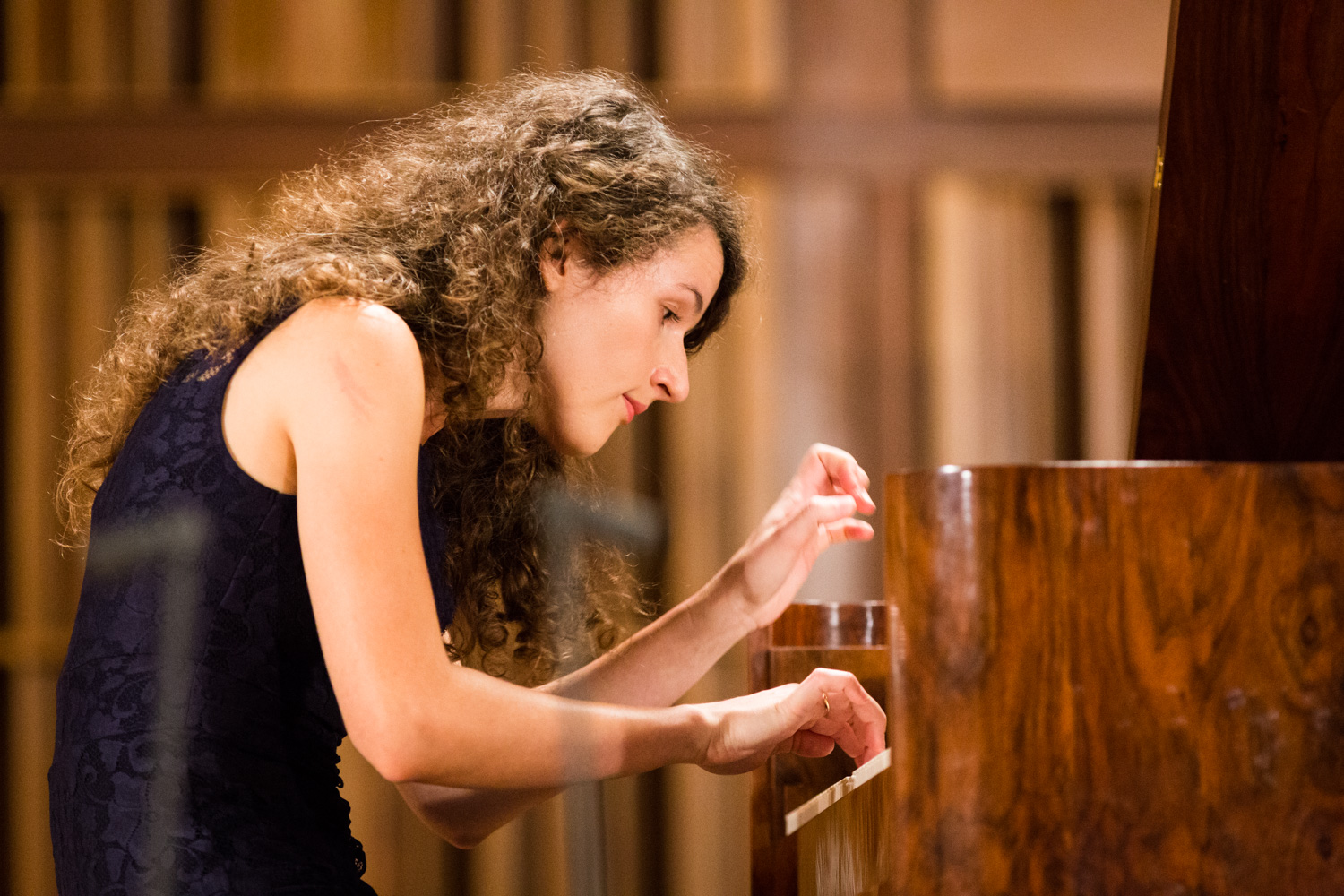
Johann Sebastian Bach
DWK I – Prelude and Fugue in B flat major, BWV 866
Fryderyk Chopin
Polonaise in D minor [Op. 71 No. 1]
Michał Kleofas Ogiński
Polonaise “Farewell to the Fatherland”
Fryderyk Chopin
Etude in F major, Op. 10 No. 8
Fryderyk Chopin
Ballade in G minor, Op. 23
7:45 PM Aleksandra Świgut (Poland)
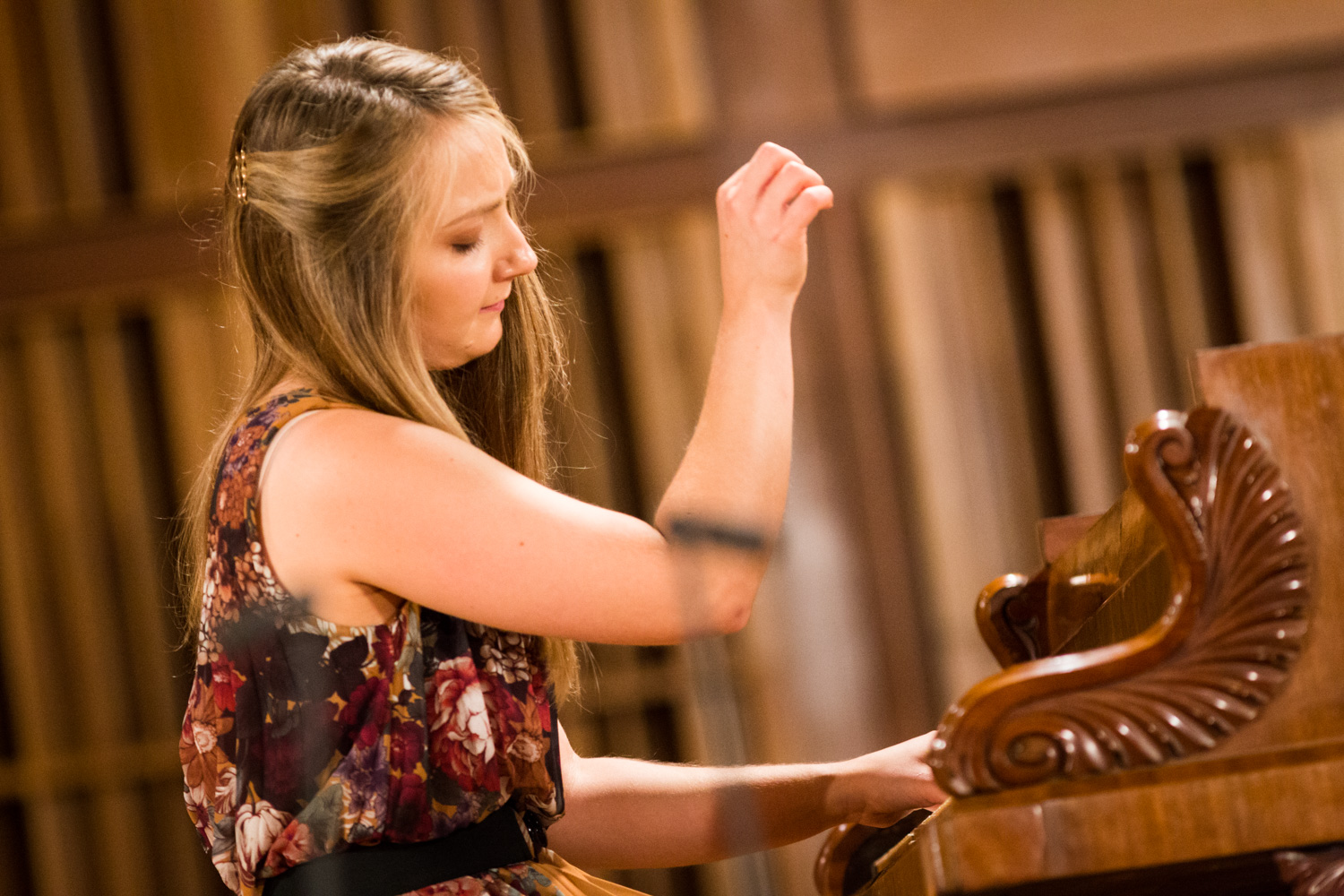
Johann Sebastian Bach
DWK I – Prelude and Fugue in G minor, BWV 861
Fryderyk Chopin
Polonaise in F minor [Op. 71 No. 3]
Maria Szymanowska
Polonaise in F Minor
Fryderyk Chopin
Etude in C minor, Op. 10 No. 12
Fryderyk Chopin
Barcarolle, Op. 60
Stage 1 Day 2 September 5
10:00 AM Antoine de Grolée (France)
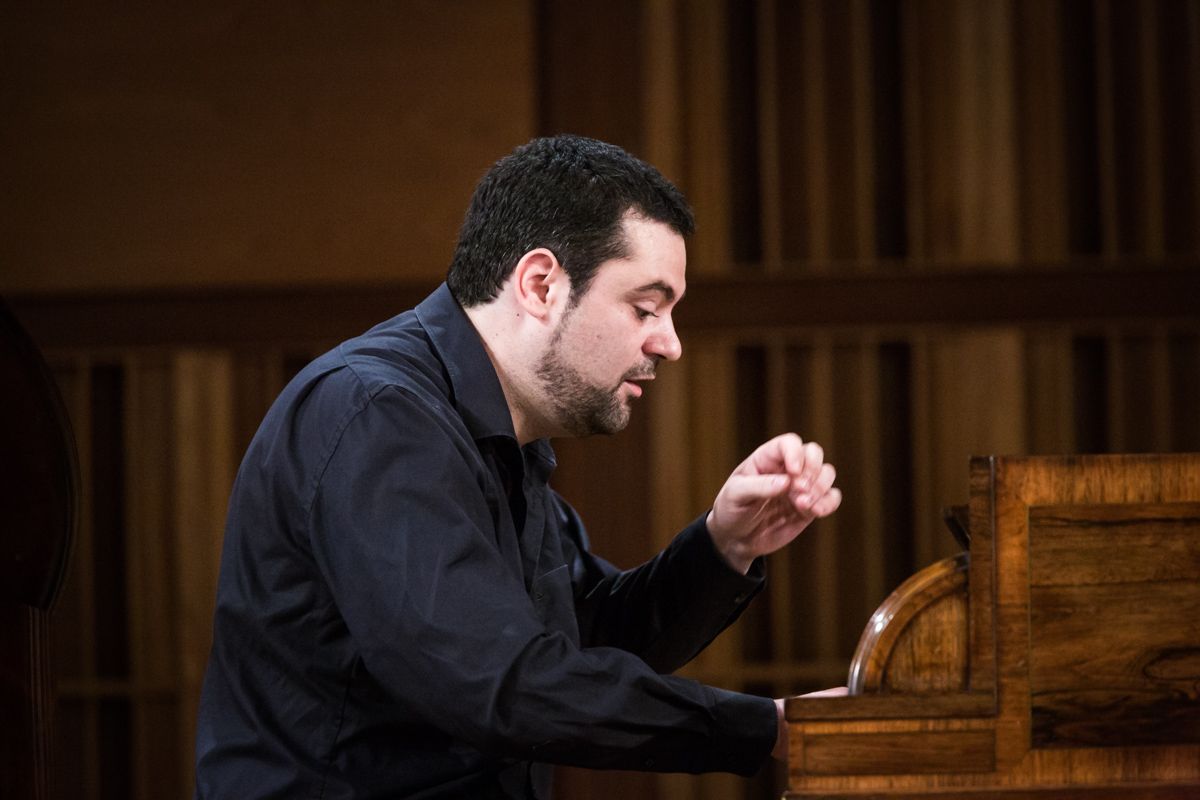
Johann Sebastian Bach
DWK I – Prelude and Fugue in C sharp major, BWV 848
Fryderyk Chopin
Polonaise in G sharp minor [op. posth.]
Fryderyk Chopin
Etude in C sharp minor, Op. 10 No. 4
Maria Szymanowska
Polonaise in F Minor
Fryderyk Chopin
Ballade in A flat major, Op. 47
It was a most welcome injection of French joie de vivre into the proceedings when he began his Bach on the 1837 Erard. Energetic, lively with good articulation and sensitivity to the polyphony. Some life-enchancing emotion in Bach is always welcome for me. The Chopin Polonaise was full of life but was not as affected in its elegance or charm in the early aristocratic ‘salon’ sense as this chronic Huysmans aesthete might wish. the phrasing was lovely but perhaps the expressive gestures rather too broad and robust for the original intentions behind the composition. Who knows in 2018 we are so far from the source, a world without electricity – imagine that for a moment! The Chopin Etude I felt rather rushed but tremendously impressive pianistically. As I have warned once before in this commentary, the listener must decode whilst the player encodes the very familiar score. Antoine is certainly a performer who communicates his musical intentions! i am afraid the Szymanowska polonaise revealed this artist’s restricted appreciation of the ‘salon style’ which of course in 2018 we perceive as affected and artificial but that is how it was before the Great War.
The Ballade was of course perfectly suited to this magnificent 1842 Pleyel. I fondly wished he caressed the instrument more – being a Frenchman with such a romantic reputation to uphold! He seemed tempted to play the Pleyel in much the same manner as the Erard but they are utterly different instruments as Chopin appreciated deeply. I felt more poetic delicacy was in order here, despite his obvious pianistic command of the instrument. The forte passages were slightly too robust. I think he could have explored the imagined musical narrative of the Ballade more as we progressed through the harmonies. It is not merely a virtuoso piece but has significantly deep musical and ‘balladic meaning’ in a sense that was familiar to educated people of those days but we have lost almost entirely.
10:35 AM Anna Hajduk-Rynkowicz (Poland)
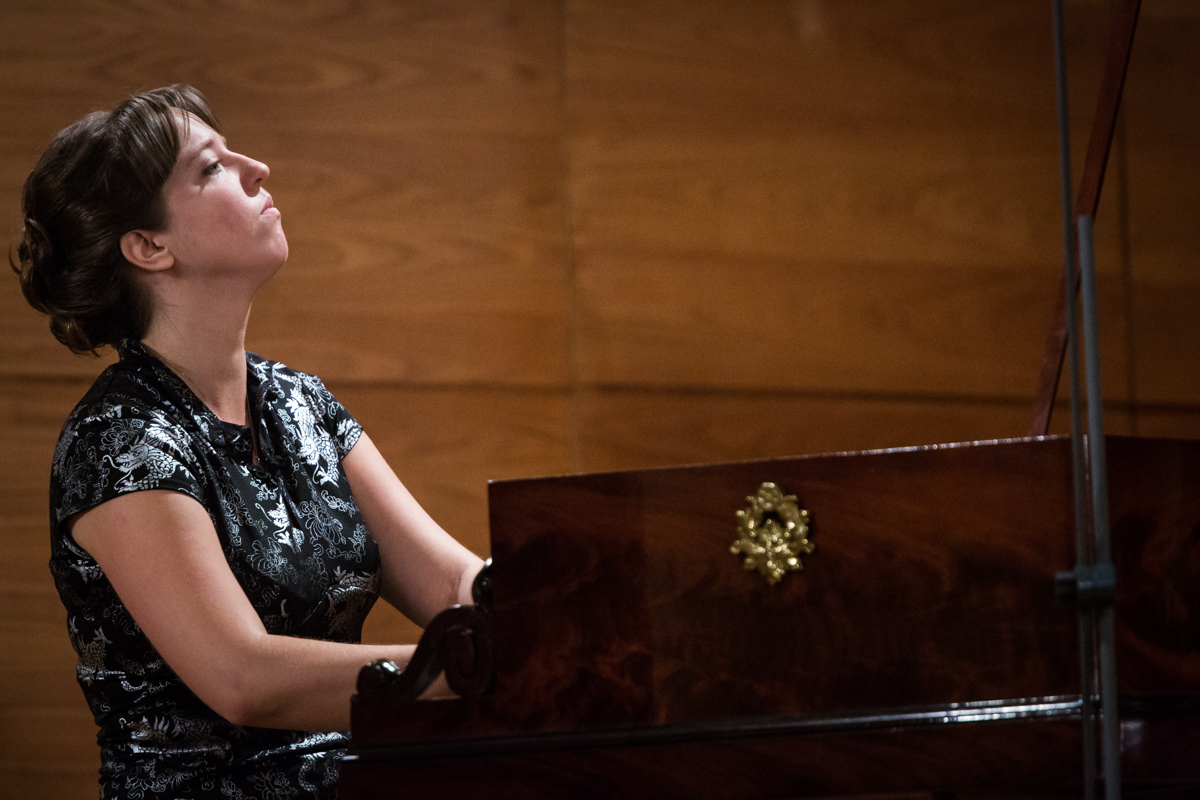
Johann Sebastian Bach
DWK II – Prelude and Fugue in G sharp minor, BWV 887
Fryderyk Chopin
Polonaise in D minor [Op. 71 No. 1]
Józef Elsner
Polonaise in E flat major
Fryderyk Chopin
Etude in A flat major, Op. 10 No. 10
Fryderyk Chopin
Ballade in F minor, Op. 52
From the outset in the Bach, and ‘preluding as an introduction’ she revealed herself as an experienced concert artist with excellent polyphonic utterance and understanding. In such an enormous and challenging fugue she maintained appropriate touch and tone on the 1837 Erard. I felt occasionally she played over-legato but that may simply be my own programmed prejudice. She chose the Pleyel for her Chopin Polonaise and although her musicianship is beyond reproach I felt she failed to capture the elegance capable on this instrument, the seductive tone and the sheer charm of it. The central lyrical section was better. Certainly she managed to make a significant work out of this early piece which showed great imagination.
An interesting choice not made before was the Elsner work performed on the 1819 Graf (Paul McNulty 2008). What a massive contrast in sound between this Viennese instrument (with leather-covered hammers, no metal frame, single escapement mechanism) to the others we have heard so far. The pianissimos she cultivated on this were truly seductive. The theme or motif played with this sound was magical. Period charm was certainly present in this performance. The Chopin Etude on the Pleyel was rather overpedalled to my taste and again I felt she did not make the most of this enchanting instrument.
The Ballade on the Erard seemed an excellent choice of instrument but I was not deeply moved by the unfolding destiny within the piece. It was a fine presentation of the work with this accomplished musician but she seemed a little rough with the instrument, perhaps through inexperience. The conclusion did not have the inevitability and summation of what had preceded it.
11:10 AM Naruhiko Kawaguchi (Japan)
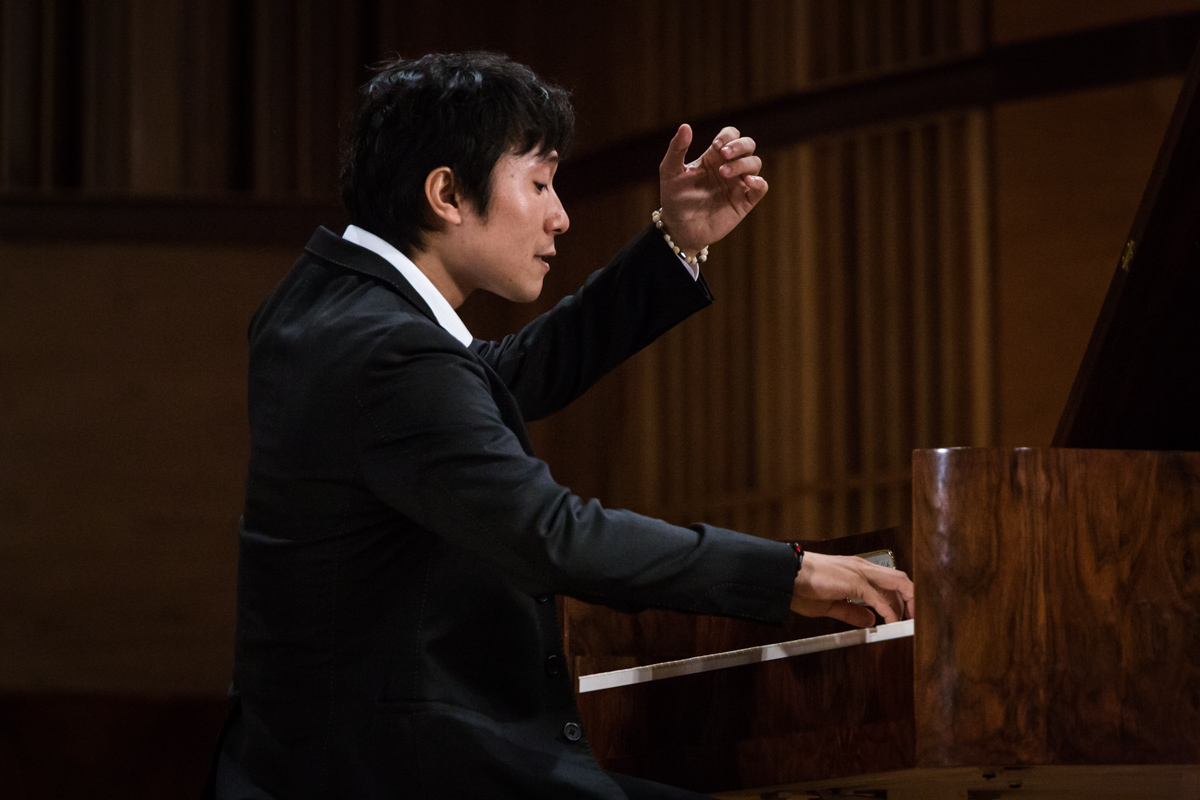
Johann Sebastian Bach
DWK II – Prelude and Fugue in B minor, BWV 893
Fryderyk Chopin
Polonaise in B flat major [Op. 71 No. 2]
Karol Kurpiński
Polonaise in D minor
Fryderyk Chopin
Etude in B minor, Op. 25 No. 10
Fryderyk Chopin
Ballade in F major, Op. 38
This pianist has had extensive experience on the fortepiano, has won a number of important prizes devoted to them and studied with the distinguished fortepianist Richard Egarr. We were not disappointed with the anticipation generated by his glowing and relevant CV.
Unlike almost every other contestant he began with the Kurpinski Polonaise. His creation of a graceful cantabile arc was immediately obvious. He extracted a charming tone from the Buchholtz with his refined touch yet I felt his expression had a touch of the artificial appliqué about it. Then to the Chopin Polonaise on the same instrument. I do love the way Japanese pianists approach Chopin, carrying with them an inordinate love of the composer. He attempted to engage the audience with his good humor and excitement by smiling in their direction even whilst playing. Francois Couperin advised this in his L’Art de Toucher le Clavecin. The Buchholtz tone was very like bells. The Buchholtz instrument is a veritable chameleon! It adopts another identity as each pianist approaches it. He used the sordino pedal to achieve the ultimate pianissimo at the close of the work.
Then to Bach on the Erard. What a contrast in sound! This was excellent Bach with finely hewn polyphony, crystal articulation and dynamic. Also the tempo was perfectly correct. He stayed with the Erard to tackle the Chopin Etude. I felt he was prone to exaggeration as these studies seemed so different on the various instruments. No true bel canto with a touch too much of the sustaining pedal.
Finally his highly dramatic and passionate account of the Ballade, where I must consider an issue with the refinement of the sound ceiling of the Pleyel. Although clearly an impressive and accomplished performer, he must have liked the immediacy of the action. He played on occasion with a slightly a heavy hand in some sections and rather too much pedal in others. ‘Never bash the keys, always caress them.’ Chopin admonished or used similar words.
Despite minor reservations, I feel sure the competition will be a great success for him. With his extraordinary musical imagination I will look to him for his attractive spontaneity and the imaginative spirit of invention to the point where he seems almost overburdened with it!
12:10 PM Yoshiko Furukawa (Japan)
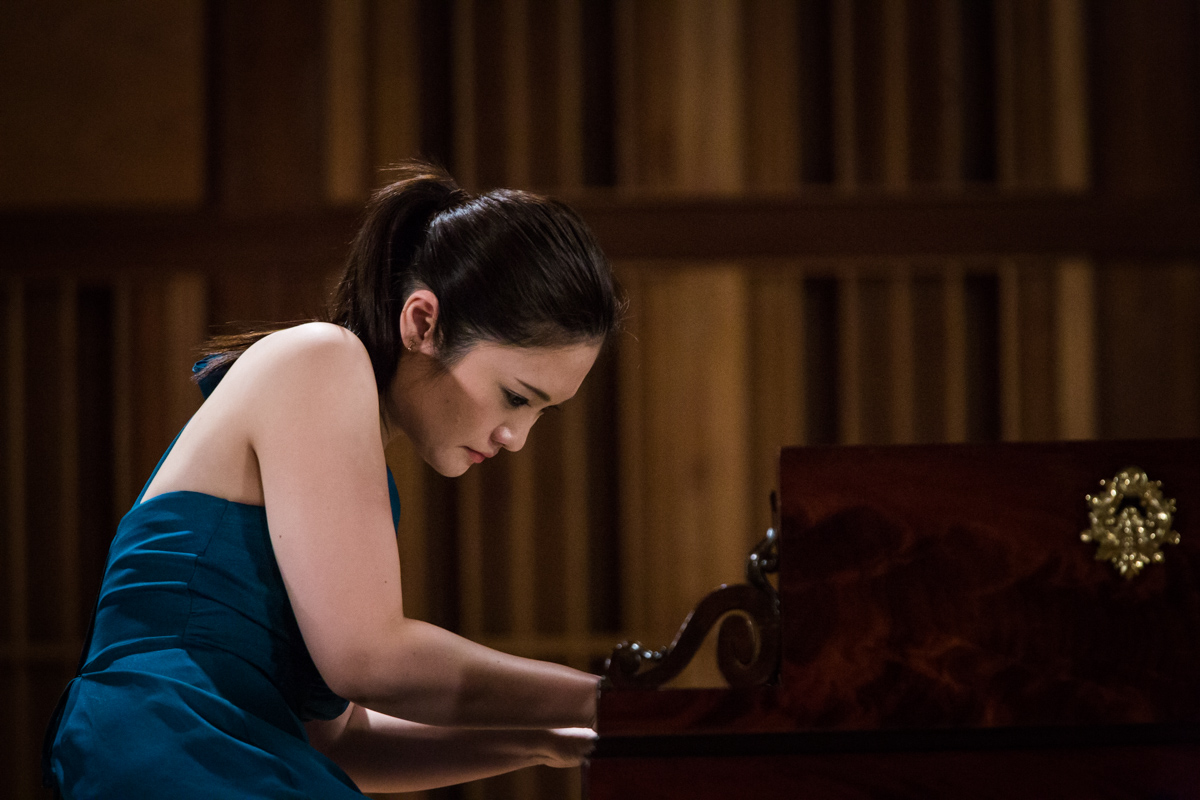
Johann Sebastian Bach
DWK II – Prelude and Fugue in F major, BWV 880
Fryderyk Chopin
Polonaise in B flat major [Op. 71 No. 2]
Michał Kleofas Ogiński
Polonaise in D minor
Fryderyk Chopin
Etude in A flat major, Op. 10 No. 10
Fryderyk Chopin
Ballade in G minor, Op. 23
It seemed rather risky to begin any recital with a Chopin Etude when one is almost sure to be slightly nervous. She used the 1842 Pleyel for this. Then to the 1825 Buchholtz and the amazing contrast in sound. The Bach was well played with use of the sordino pedal on the instrument without inevitable musical logic but I felt more for attractive effect. It has four pedals with functions that resemble registration changes on an organ or harpsichord rather than the functions we are more familiar with on a Steinway or Yamaha. In the Chopin Polonaise she used all the effects possible with this instrument but I felt the dynamic contrasts were far too great to be fully acceptable. There surely has to be a musical logic here which escaped me. Even Francois Couperin did not suggest many changes of registration in his L’Art de Toucher le Clavecin.
The Oginski on the 1847 Broadwood provided us with another amazing contrast in sound. Finally the Ballade on the 1842 Pleyel which I found rather mannered in approach especially the beginning of the work. I felt spontaneity and invention was lacking here.
12:45 PM Katarzyna Hajduk-Konieczna (Poland)
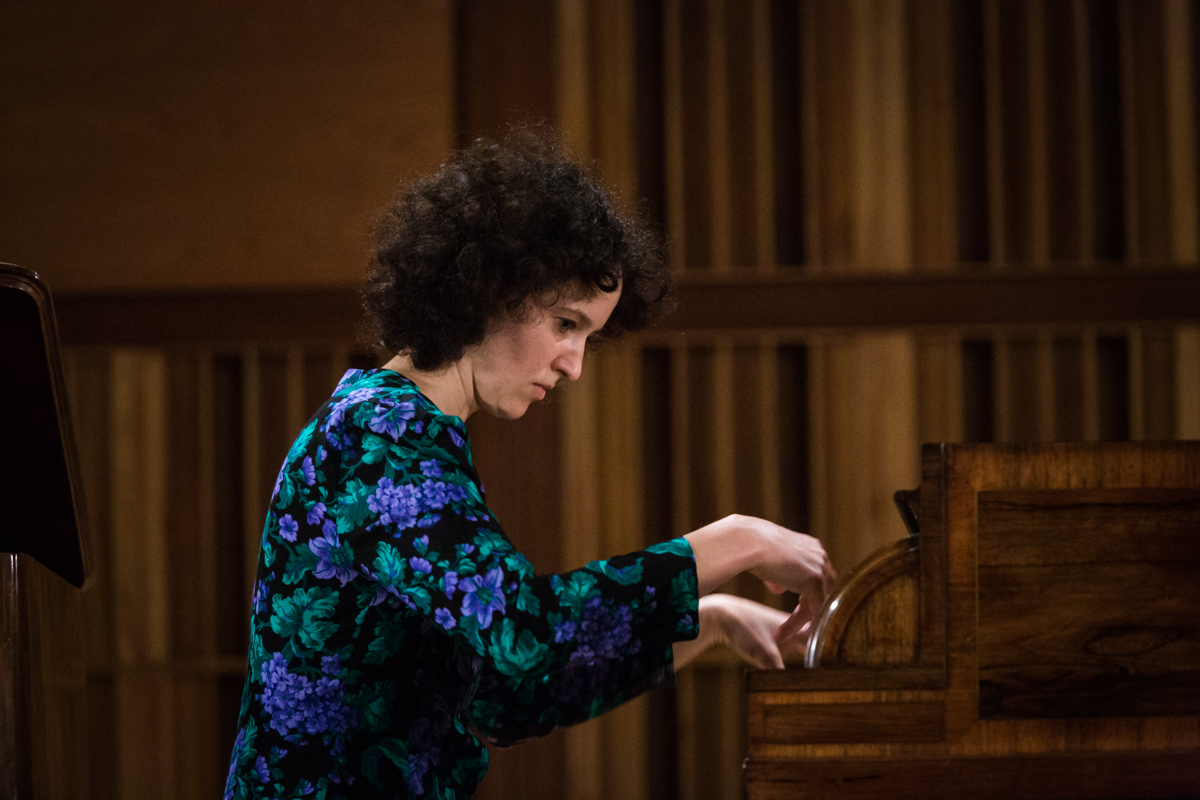
Johann Sebastian Bach
DWK I – Prelude and Fugue in E flat minor, BWV 853
Fryderyk Chopin
Polonaise in F minor [Op. 71 No. 3]
Fryderyk Chopin
Etude in F major, Op. 10 No. 8
Fryderyk Chopin
Ballade in F major, Op. 38
Michał Kleofas Ogiński
Polonaise “Farewell to the Fatherland”
She began promisingly with some excellent ‘preluding’. Her Bach on the Buchholtz I found quite ravishing with the registration she selected. The Prelude with its spread chords sounded like a beautiful harp or lute being strummed. Such an unusual and alluring sound like musical Bruxelles lace. The Fugue was on the full instrument and pedalled. For some reason I was not so impressed by her grasp of the contrapuntal nature of the work. The Chopin Polonaise was on the Broadwood. She added some tasteful ornamentation and improvisations to the score which is a performance practice perfectly in period. One must however guard against exceeding acceptable bounds and ‘over-egging the pudding’. Certainly this was one of the most idiomatic versions of the Polonaise I have heard so far. It requires great courage and musical self confidence to tinker with the score in this way during a competition. Highly imaginative.
The Chopin Etude on the Erard was very accomplished. The Ballade opened like a cradle rocking or lovers in a gently undulating gondola on the Venetian lagoon at night. Certainly there was a clear musical narrative here of shifting moods or landscape of the soul, a sort of dream. I was put in mind of lying in a rowing boat in the summer gazing hazily at the sky above. She built the drama of disorientation embedded in this work to an almost irrational intensity of emotion. A coherent structure leading to calm reminiscence on the storm that has passed through the heart – a wonderful panorama of tensions and relaxations.
Finally the Oginski on the Buchholtz which I found wonderfully decorated and improvised. The sordino well utilized here. There was often an eruption of dance rhythms and images of a danced Polonaise came to mind with the noblemen stroking their prominent mustaches and arranging their sabres. Yes a scene from Pan Tadeusz. And so the dream or rather the ache of a Farewell to the Fatherland on the double sordino was truly wonderful and quite transporting in a way rarely experienced. I was very moved. A marvelous recital that fully utilized period performance practice and the instruments on which such practice was performed…
5:00 PM Shintaro Kawahara (Japan)
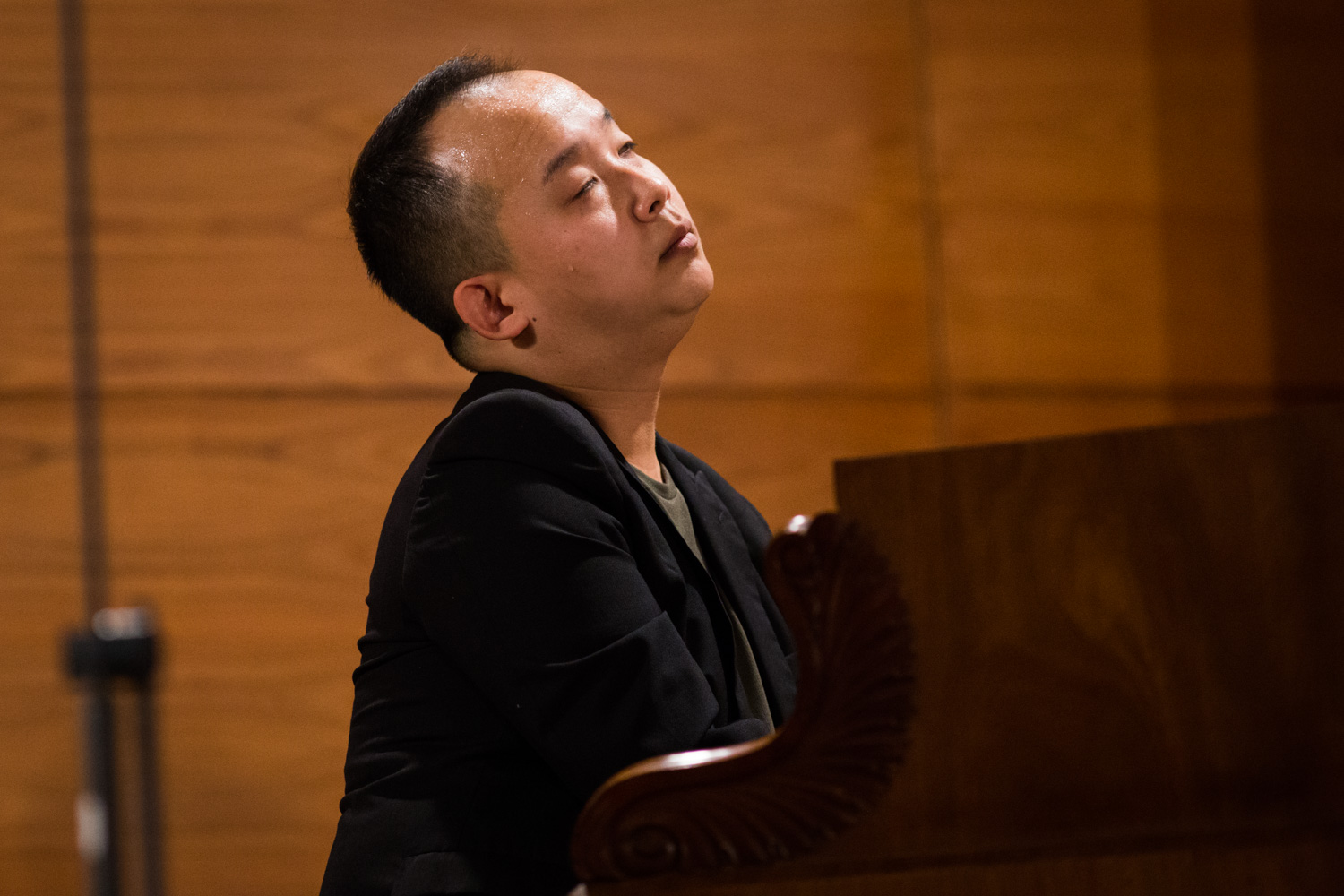
Karol Kurpiński
Polonaise in D minor
Johann Sebastian Bach
DWK II – Prelude and Fugue in E major, BWV 878
Fryderyk Chopin
Polonaise in B flat major [Op. 71 No. 2]
Fryderyk Chopin
Ballade in A flat major, Op. 47
Fryderyk Chopin
Etude in G flat major, Op. 10 No. 5
The Kurpinski was performed pleasantly enough on the Buchholtz. The Bach on the Broadwood was adequate certainly but lacked any truly personal interpretative view I felt. His attempts to explore the idea of added ornamentation to the Chopin Polonaise on the same instrument although imaginative were not entirely successful. I felt the improvisations were planned rather than felt to be spontaneous. The Ballade on the 1842 Pleyel was a highly competent rather than an inspiring and imaginative performance. The Chopin Etude possessed great clarity and fine articulation.
5:35 PM Dinara Klinton (Ukraine)
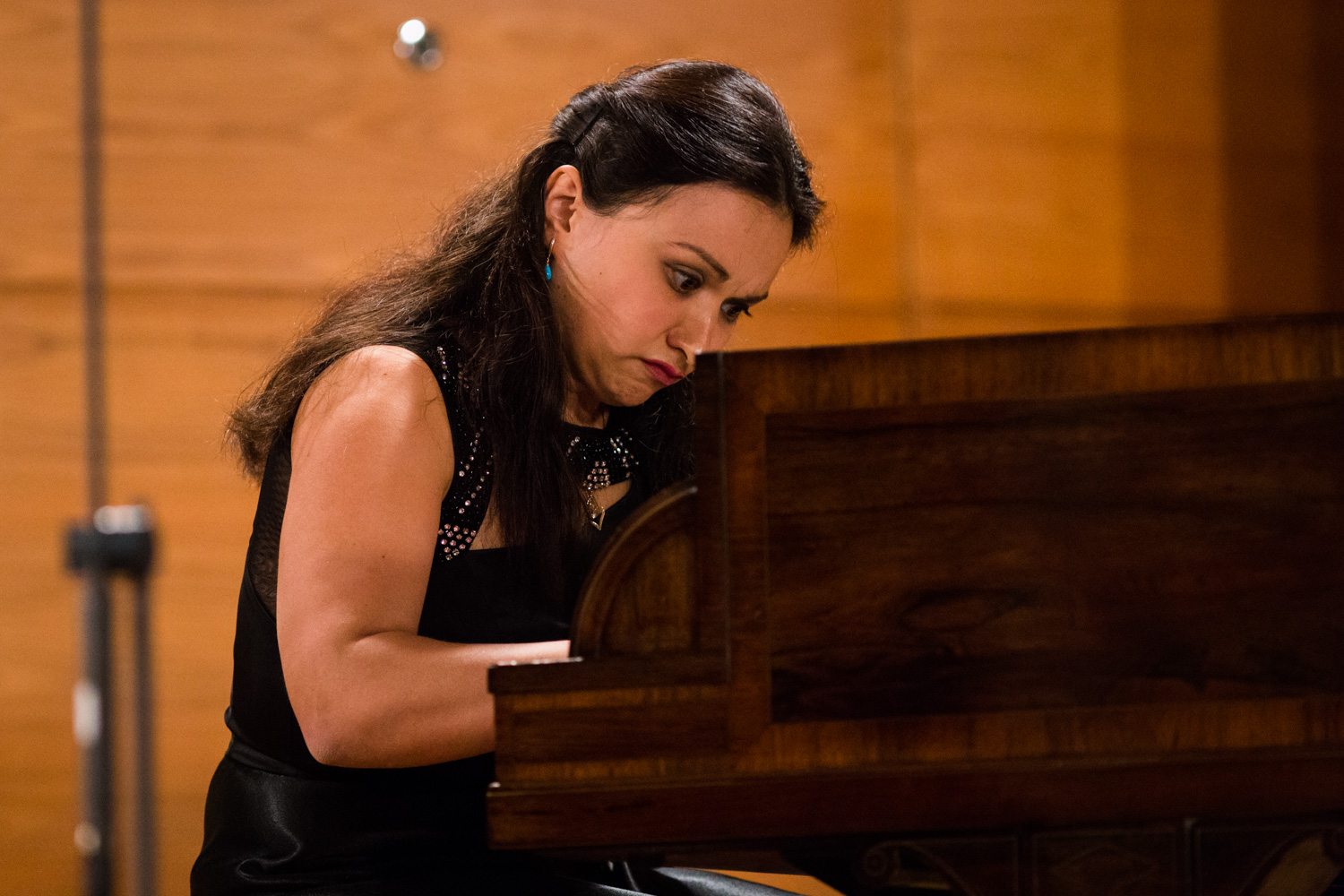
Johann Sebastian Bach
DWK I – Prelude and Fugue in D major, BWV 850
Fryderyk Chopin
Polonaise in A flat major [op. posth.]
Michał Kleofas Ogiński
Polonaise “Farewell to the Fatherland”
Fryderyk Chopin
Etude in A flat major, Op. 25 No. 1
Fryderyk Chopin
Barcarolle, Op. 60
The superior authority of her pianism and sheer piano ‘technique’ over other contestants was obvious from the outset. But then if you consult her record in competition it is an enviable one at the highest international level – Cleveland (3rd prize in 2016), the Paderewski Competition in Bydgoszcz (second prize 2013), the Busoni in Bolzano (second prize 2007), the Tchaikovsky in Moscow (second prize 2004).
The Bach on the 1842 Pleyel was very fine indeed showing a natural affinity for the earlier instrument and complete control over contrapuntal and polyphonic voices. The early Chopin Polonaise was full of creative and imaginative expression but her relative inexperience performing on these period pianos did betray itself on occasion with rather sudden dynamic expressive gestures that touched the sound ceiling of the Pleyel harshly and may have been more at home on a modern instrument. The Chopin Etude was simply superb in its limpid cantabile, evenness, light virtuosity and expressive qualities.
In the Szymanowska Polonaise on the 1837 Erard she applied varied phrasing and articulation to alluring effect and varied the tonality imaginatively. There was always an alluring professionalism about her playing that one could simply not ignore. The Chopin Barcarole was a courageous choice given the difficulty of this work and performance on an 1842 Pleyel. I found it inhabited an imaginative interpretative sound world of great refinement of piano tone, touch and sound that gave me no difficulty in picturing the Venetian lagoon and the lover’s agitation.
6:10 PM Agnieszka Korpyta (Poland)
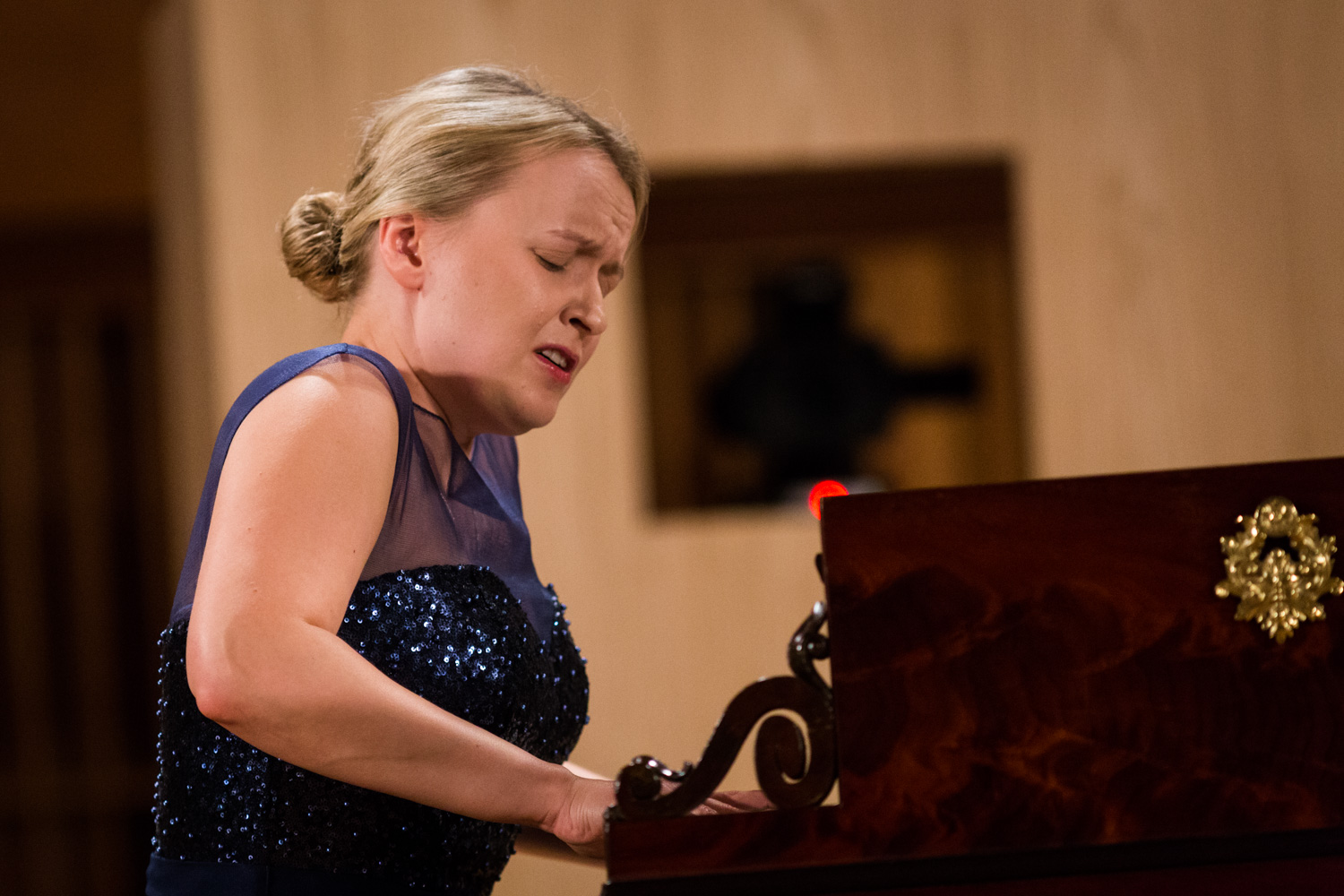
Johann Sebastian Bach
DWK II – Prelude and Fugue in E flat major, BWV 876
Maria Szymanowska
Polonaise in F Minor
Fryderyk Chopin
Polonaise in G sharp minor [op. posth.]
Fryderyk Chopin
Etude in G flat major, Op. 10 No. 5
Fryderyk Chopin
Ballade in G minor, Op. 23
The Bach Prelude was fine but the Fugue came across as rather too laboured for me. I felt she could have used the colour palette of the Pleyel (which she used exclusively throughout this recital) far more, possibly in the manner of organ registration or even cribbed some ideas from the clavichord. The Szymanowska was straightforward and pleasant but then it is hardly a visionary work. Concerning the Chopin Polonaise I think she approached it rather too seriously and through the filter of the ‘heroic’ polonaises and the fierce anger Chopin would later incorporate into these works. Many of the young contestants did this. Perhaps they should try to imagine Chopin as a carefree young man writing rather light but seductively melodic music in the Polonaise genre. Just a background flavour of the resented Russian military occupation loomed above like a dark but thin watercolour wash on a painting.
The Etude could have been a little lighter on this Pleyel. The Ballade provided us with much visual suffering but this was seldom reflected in the playing. Francois Couperin in his introduction to L’Art de Toucher le Clavecin suggests a mirror placed on the music desk to cure this tempting aspect. I could not help feeling with her significant musical talents she would have offered the listener no musical dilemmas on a Steinway and there is no shame in that!
One should remember that all these period instruments were hand built and each would have had its own very specific character. She may not have had enough experience on this particular instrument to extract the best from it. She occasionally broke through the fragile sound ceiling which tended to spoil her carefully constructed musical narrative and subtle affecting harmonic or dynamic transitions that spoke such volumes to us in the Ballade.
7:10 PM Justyna Kreft (Poland)
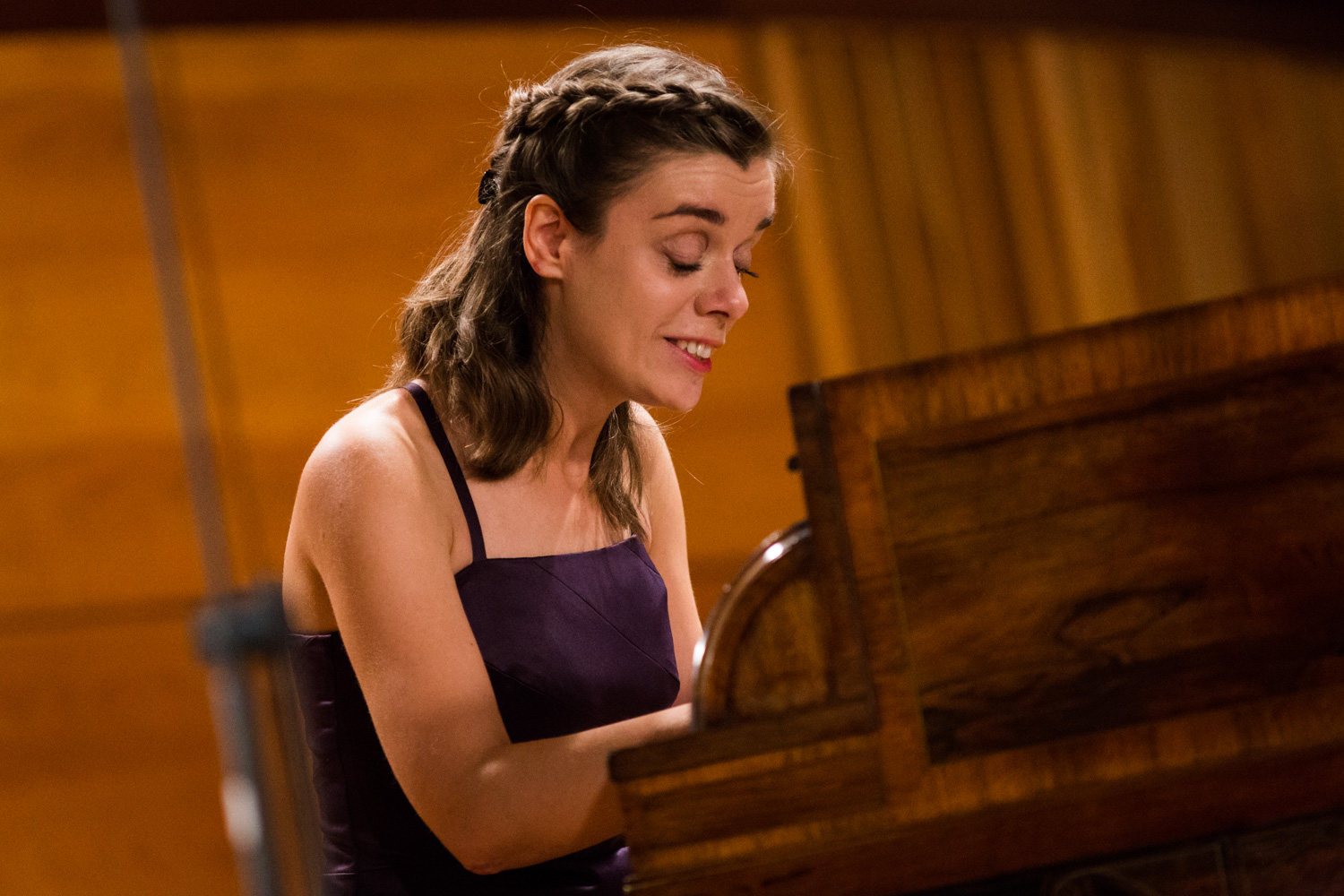
Johann Sebastian Bach
DWK II – Prelude and Fugue in A minor, BWV 889
Fryderyk Chopin
Polonaise in G sharp minor [op. posth.]
Maria Szymanowska
Polonaise in F Minor
Fryderyk Chopin
Etude in E flat major, Op. 10 No. 11
Fryderyk Chopin
Ballade in A flat major, Op. 47
Justyna Kreft has accumulated quite a lot of experience on harpsichords and period pianos and has won a number of prizes. Her excellent understanding of Bach and the polyphony on the Pleyel immediately indicated this background. The Chopin Polonaise suited the 1847 Erard and its more straightforward sound and touch. However I felt she could have extracted a more beautiful tone from this instrument. Her ‘technique’ is certainly advanced but has yet to achieve what one might term ‘virtuoso elegance’. She performed in a perfectly Polish polonaise idiom but perhaps it could have been more stylish and elegant as Chopin was in his personality in those early days – the ‘Polish Mozart’ after all.
The Szymanowska also on the Erard was rather stylish, even elegant and idiomatically Polish. I felt this piece may have benefited from being performed on the Pleyel given its ‘salon’ character. The Chopin Etude was a brilliantly expressive interpretation and much appreciated. She approached the Ballade in rather a broad manner without being too preoccupied with inner details. The passionate nature of the fluctuating moods could have been more accentuated.
7:45 PM Krzysztof Książek (Poland)
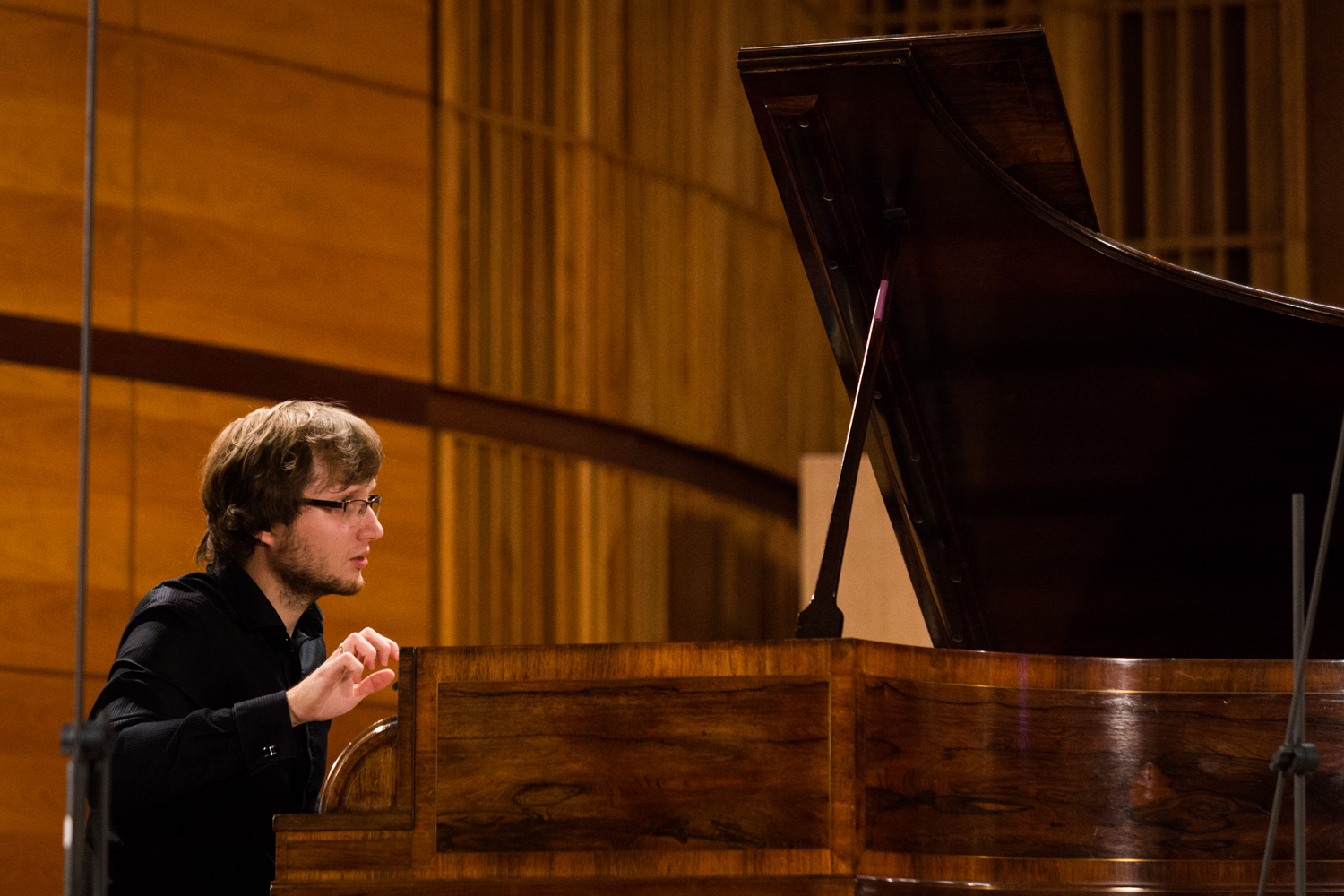
Johann Sebastian Bach
DWK II – Prelude and Fugue in B minor, BWV 893
Fryderyk Chopin
Polonaise in D minor [Op. 71 No. 1]
Michał Kleofas Ogiński
Polonaise “Farewell to the Fatherland”
Fryderyk Chopin
Etude in F major, Op. 10 No. 8
Fryderyk Chopin
Ballade in F major, Op. 38
Here we have the Polish star of the competition whose portrait adorns walls and CDs are readily available just now in Warsaw. I was greatly anticipating this recital as I have listened to him developing with great pleasure since his masterclasses in Duszniki Zdroj many years ago now.
The Bach on the copy of the Buchholtz was excellent but a distinguished or unique voice was not present as one might have expected on this instrument. He began to utilize its expressive potential with the Oginski Polonaise. For example he repeated the main affecting and emotional theme with the double sordino stop engaged. He concluded the work with the single sordino which was remarkably effective in communicating the deep sadness of enforced exile, the carriage crossing the frontier leaving the treasured earth of Poland tearfully behind save for a canister of soil secreted in the luggage.
Strangely I felt the youthful Chopin Polonaise did not indicate the energy, melodic gift and creative strength of youth. So disappointing. It emerged as a rather weak composition and the echo effects he adopted added little to the overall impact. These effects merely seemed to etiolate the polonaise for me and turn it into a display piece for the instrument.
The Etude was impressively performed with some ‘hidden voices’ revealed which I had never been fully aware of. The Ballade has clearly been fashioned into a fully coherent musical ‘story’ with its wide-ranging moods. I felt here we had what I dare to call in 2018 the ‘masculine’ Chopin which is less finely detailed and effete than other less declamatory approaches to his music. The conclusion was beautifully elegiac.
Stage 1 Day 1 September 4
Click on the links for biographical and musical information
PROGRAMMES
10:00 AM Ewa Tytman-Csiba (Poland)
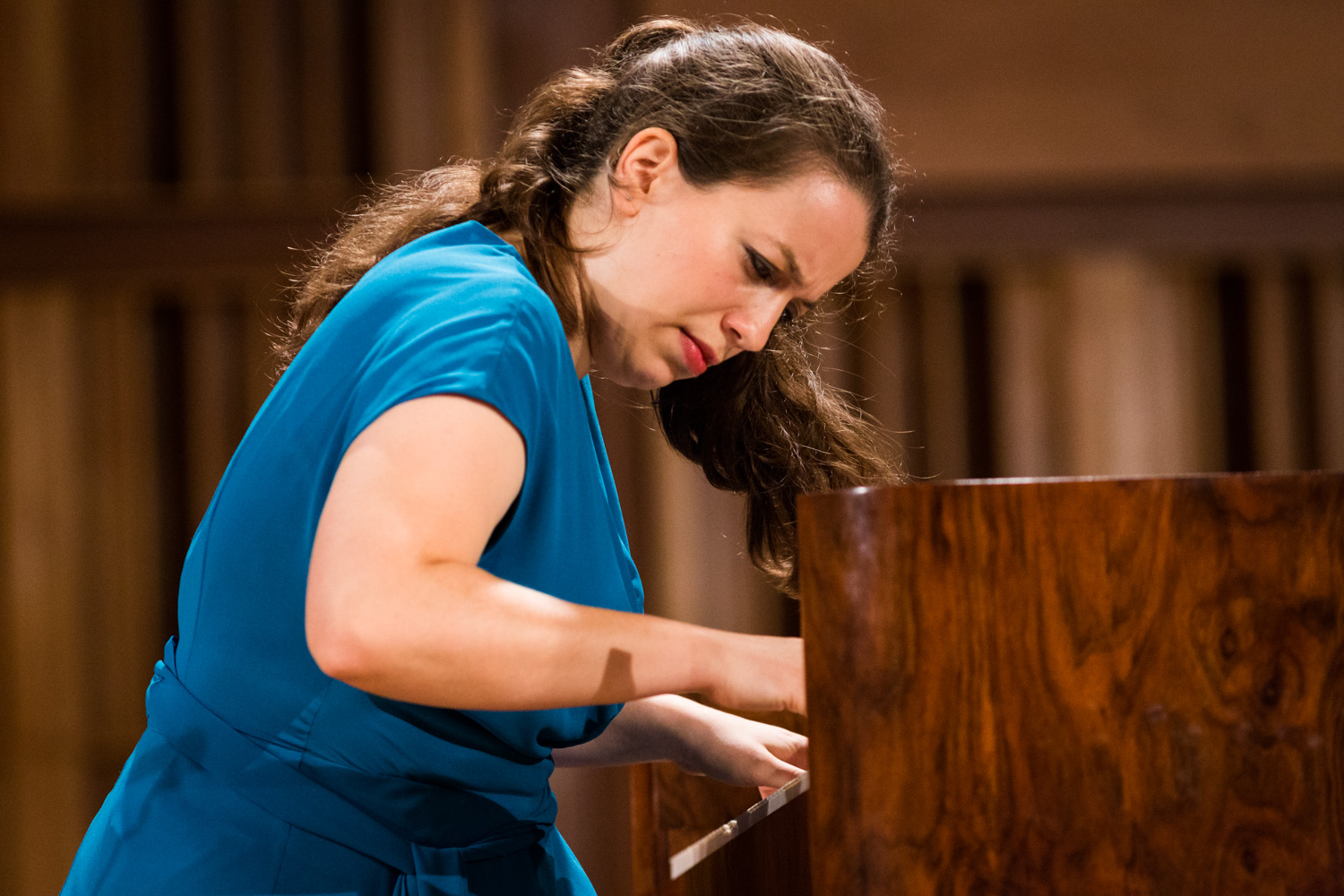
DWK II – Prelude and Fugue in D major, BWV 874
Fryderyk Chopin
Polonaise in B flat minor [Op. posth.] [op. posth.]
Karol Kurpiński
Polonaise in D minor
Fryderyk Chopin
Etude in C minor, Op. 10 No. 12
Fryderyk Chopin
Ballade in A flat major, Op. 47
Clearly a fine pianist and cultivated musician on a modern instrument but on the Erard I found her rather straightforward approach to dynamic variation and absence of any significant extent of varied articulation rather worrying. Her approach to the period instrument seemed to me not particularly idiomatic. Despite her obvious musicality, this continued throughout her recital on the 1825 Buchholtz copy with her expressive phrasing rather too broad to be accommodated on these older instruments which require a rather more restrained, specialized approach and familiarity.
10:35 AM Dmitry Ablogin (Russia)
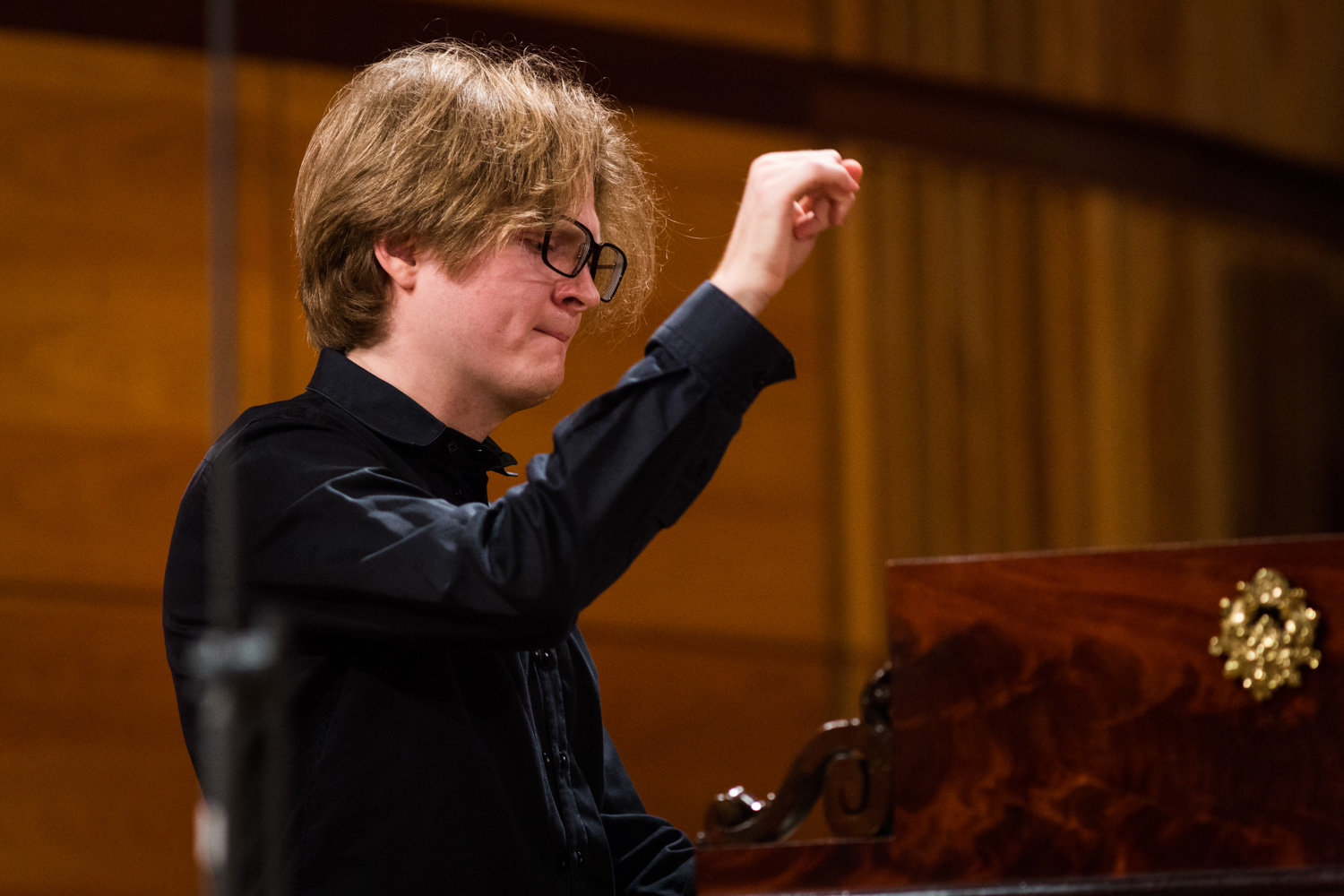
Johann Sebastian Bach
DWK II – Prelude and Fugue in F sharp minor, BWV 883
Fryderyk Chopin
Polonaise in B flat major [Op. 71 No. 2]
Karol Kurpiński
Polonaise in D minor
Fryderyk Chopin
Etude in E minor, Op. 25 No. 5
Fryderyk Chopin
Ballade in F minor, Op. 52
He began with an improvised Prelude, the activity known as ‘preluding’ in the nineteenth century, which is perfectly in keeping with these period instruments and performances on them. A lovely touch which he placed before each piece on his programme.
The Bach was satisfyingly played on the 1825 Buchholtz copy but I longed for a little more intensity in his approach to this, for me at least, a rather emotional composer (even in the Preludes and Fugues) that requires a stronger sense of forward momentum. The playing was gentle and clearly a full transition had been made to the period instrument in terms of tonal control and understated touch. The Kurpińsky Polonaise was a charming and pleasant return to the salon environment. He then moved to a magnificent 1842 Pleyel for the Chopin Etude. This instrument has a ravishing tone and range of colours which suited his cantabile. The seductively melodic, youthful Chopin Polonaise in B-flat minor was perfectly suited to the colour palette and chiaroscuro of this fabulous instrument and Ablogin’s rather understated approach to the keyboard. I can quite hear why Chopin may have called Pleyel the non plus ultra of pianos.
I was less pleased with the Ballade which was narratively incoherent at times. Sometimes a phrase was extremely well fashioned with seductive tone, touch and texture but then the narrative flow would be interrupted by a seemingly inappropriate ‘rush’ in the tempo and a harsh sound. One might say his expressiveness in the piece was occasionally inconsistent which was troubling.
11:10 AM Benjamin d’Anfray (France)
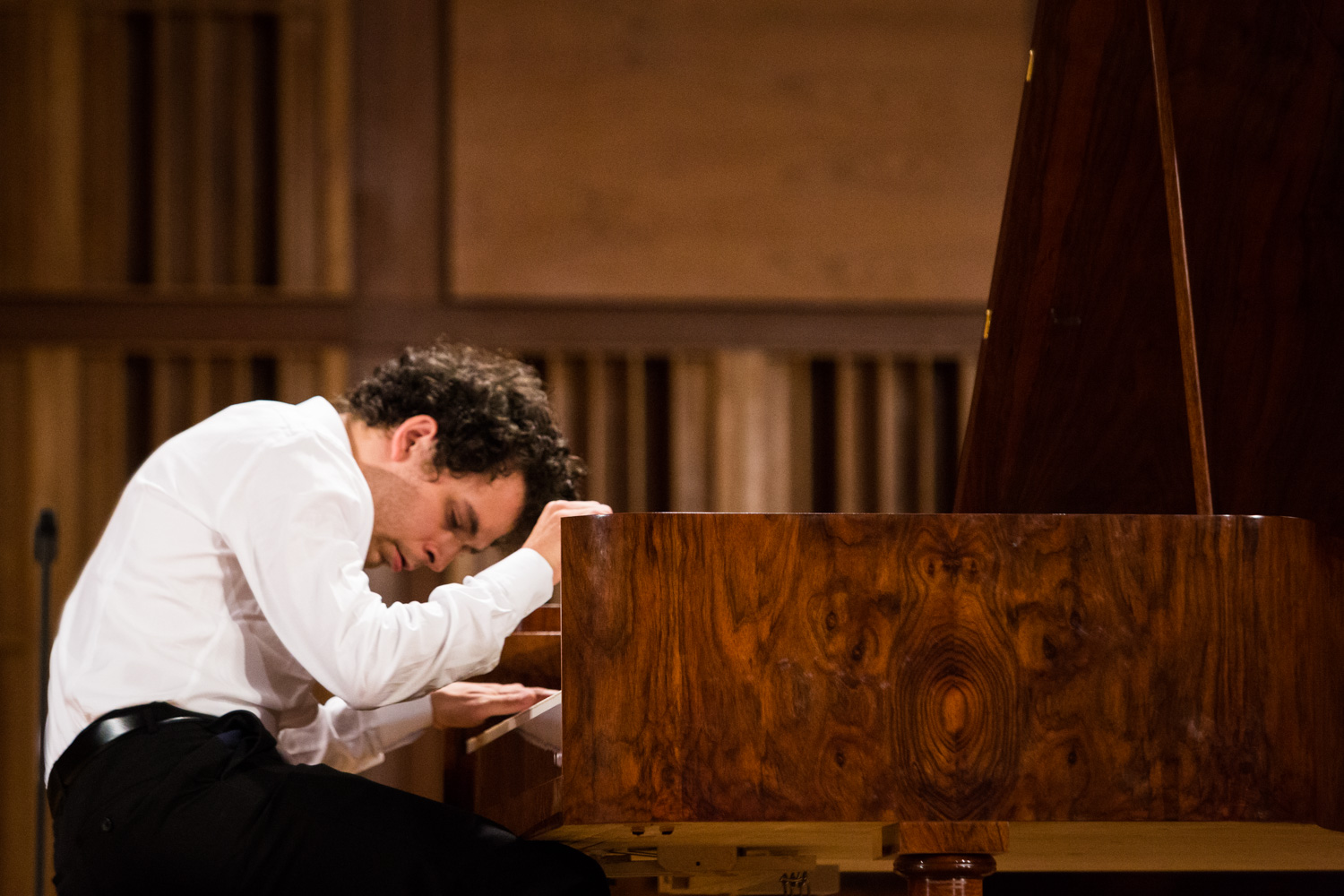
Johann Sebastian Bach
DWK I – Prelude and Fugue in F sharp minor, BWV 859
Fryderyk Chopin
Polonaise in B flat minor [Op. posth.] [op. posth.]
Karol Kurpiński
Polonaise in G minor
Fryderyk Chopin
Etude in C major, Op. 10 No. 1
Fryderyk Chopin
Barcarolle, Op. 60
This pianist is in possession of personality, charisma and character which was immediately obvious in his individualistic playing. His approach to the Kurpiński and young Polonaise of Chopin on the 1825 Buchholtz was idiosyncratic but rather fascinating in such a radical rethinking particularly of the rhythm. One could not help but ask once again where is the line drawn between acceptable individual interpretation and the dots on the composer’s stave. The Bach on the Pleyel was excellent and observed all performance practices without pedal and any overt interpretation – in fact it was such a return to normalcy that it seemed almost shocking to me.
The Barcarole unfortunately began with a crash into the wharf before the love voyage across the Venetian lagoon could begin. I wish pianists would realise that the opening sets the calm tonal mood of the beginning of the piece, rather like an atmospheric Turner watercolour of Venice. To my mind it is not a sfortzando statement. The only pianist who seems to recognize this is Kevin Kenner and his recent superb recording of this glorious masterpiece. An important lesson can be learned here from playing this piece on a period instrument. On the Pleyel, the dynamic range of the work is much restricted compared to the freedom a Steinway gives the player to exaggerate the passions beyond measure (and dynamic indications) as the excursion progress. The lovers have a disagreement over their commitment to each other perhaps, but this is not a storm in the Atlantic on the Titanic. It is merely an agitation of the spirit in a gondola on a Venetian lagoon. On such a magnificent instrument Chopin’s directive to ‘caress the keys, never bash them’ (or words to that effect) seems singularly appropriate.
12:10 PM Aurelia Visovan (Romania)
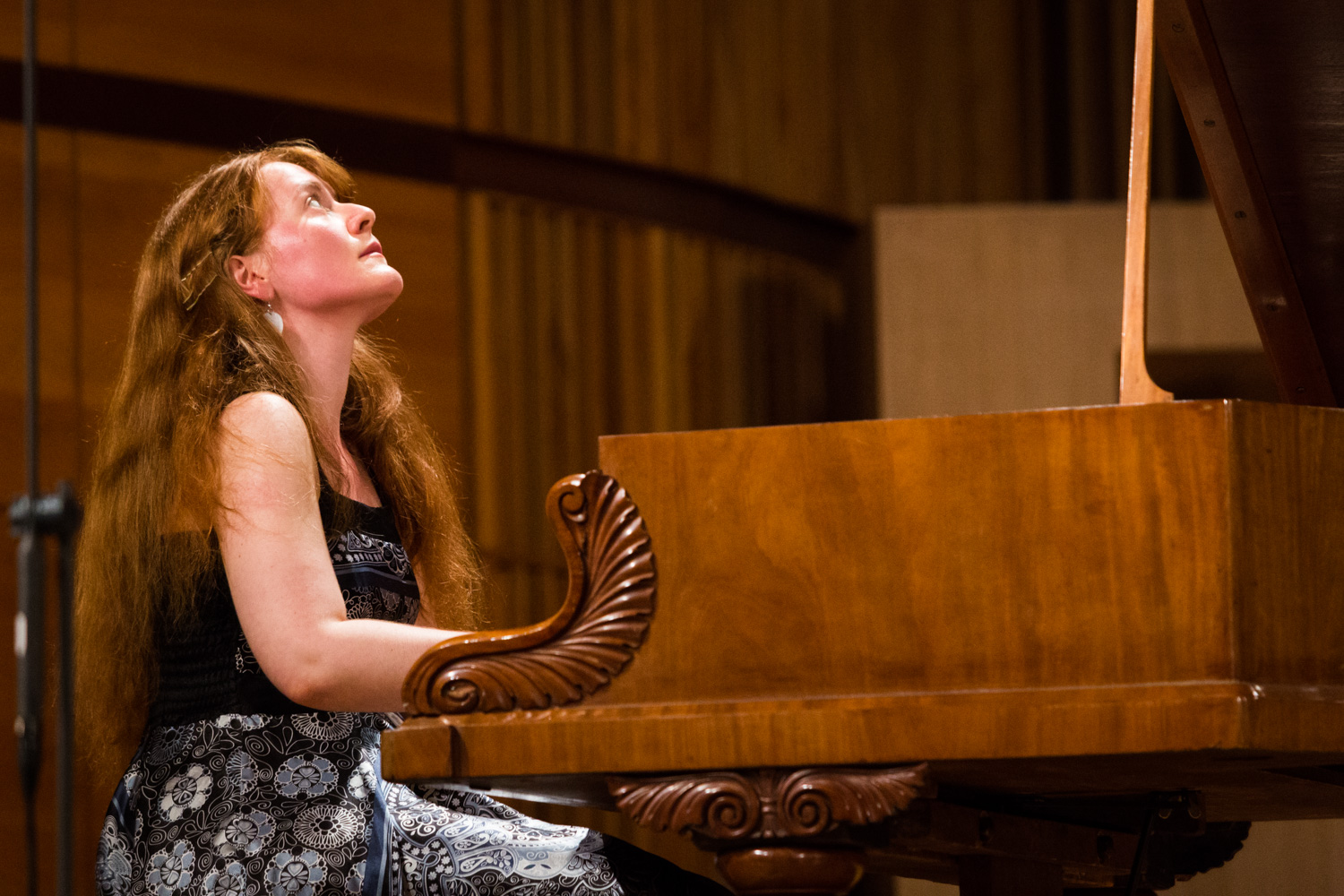
Johann Sebastian Bach
DWK I – Prelude and Fugue in G major, BWV 860
Fryderyk Chopin
Polonaise in F minor [Op. 71 No. 3]
Maria Szymanowska
Polonaise in F Minor
Fryderyk Chopin
Etude in A flat major, Op. 10 No. 10
Fryderyk Chopin
Ballade in F major, Op. 38
Her wide and extensive experience playing the harpsichord and fortepiano was clear from the outset. The tone she produced and touch she adopted on the 1825 Buchholtz was very fine indeed. It sounded like a completely different instrument to those that had played it before. The Bach was excellent with the polyphony beautifully focused. The Szymanowska Polonaise was expressive as were the Chopin etude and youthful Polonaise. How I adore these early Polonaises of Chopin performed idiomatically with style and elegance as well as musicality and understanding of the colour palette of these period instruments.
The Ballade on the 1848 Broadwood was a coherent narrative, very expressive and poetic but for me the tempo was occasionally taken rather too fast and I just wished (like many young pianists) she would give the listener a chance to decode the harmonic developments taking place in the work and allow her phrases to breathe in a more relaxed way with more maturity and patience. Playing and listening are two different brain activities. Playing is encoding (to borrow a term from Linguistics) whilst listening is decoding, a completely different brain function. As listeners we need time!
12:45 PM Maciej Wota (Poland)
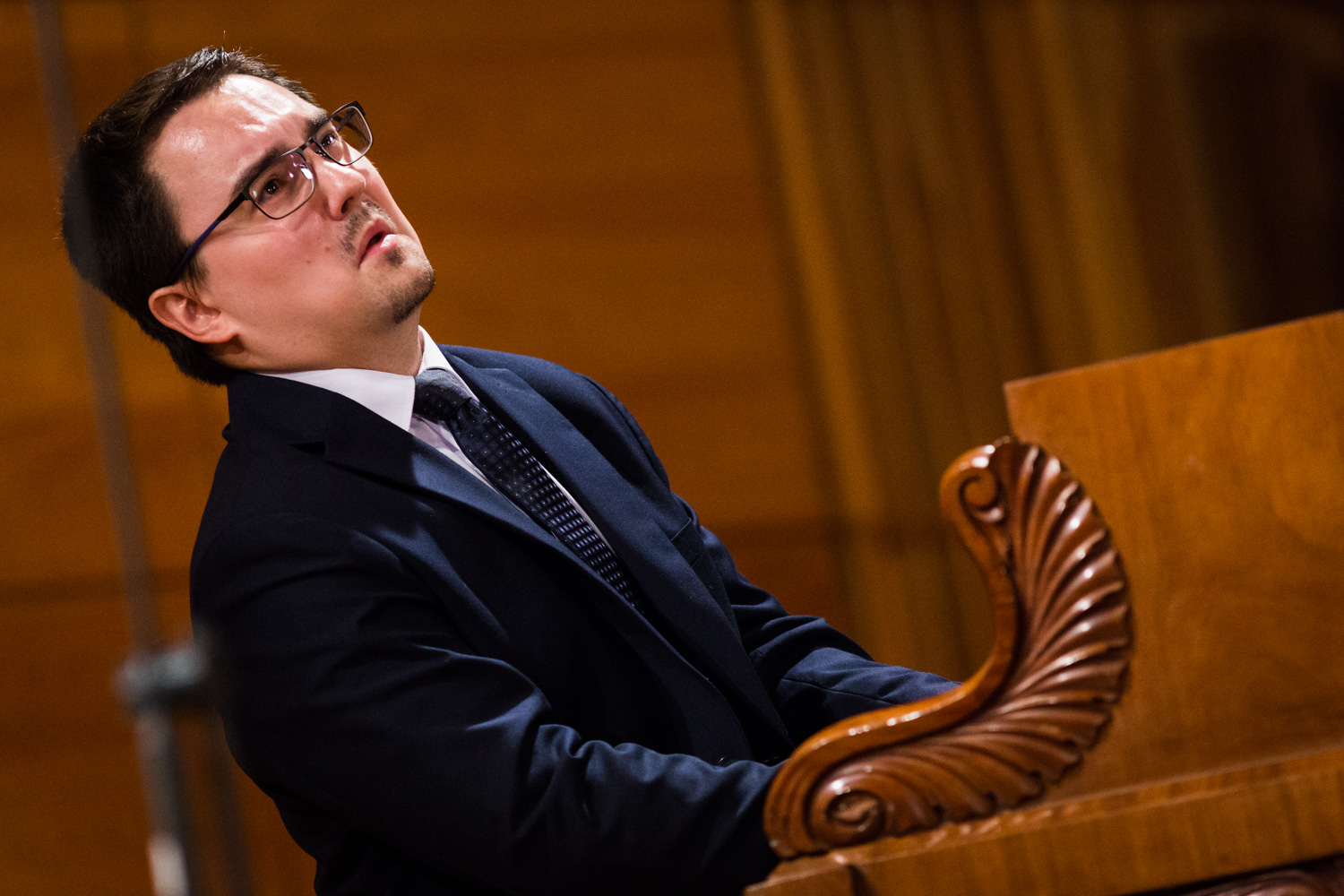
Johann Sebastian Bach
DWK II – Prelude and Fugue in A minor, BWV 889
Fryderyk Chopin
Polonaise in G sharp minor [op. posth.]
Michał Kleofas Ogiński
Polonaise in D minor
Fryderyk Chopin
Etude in F major, Op. 10 No. 8
Fryderyk Chopin
Ballade in F major, Op. 38
Wota only performed Bach on the Buchholtz and the entire remainder of his programme om the 1848 Broadwood. I found his Bach more expressive than others with attractive articulation and clarity. He understands this instrument and its potential. In the Oginski Polonaise there was a rather attractive ‘Polish element’ (as Chopin might have termed it) to his playing. The early Chopin Polonaise could have possessed the Mozartian nobility and elegance that is present even in these early works of Chopin’s youth. I felt this pianist was academically very well prepared for this recital but could have been emotionally rather more ‘unbuttoned’. The Chopin Etude was rather unfortunate shall we say. The Ballade showed excellent understanding of this demanding genre and timbre of the period piano. I feel the work has such extreme mood swings throughout – beginning with this miraculous expression of childhood or childish innocence so rudely interrupted by the adult passions of experience. Much more could have been made poetically of the expressively emotional contrasts Chopin wove into the work.
5:00 PM Łukasz Byrdy (Poland)
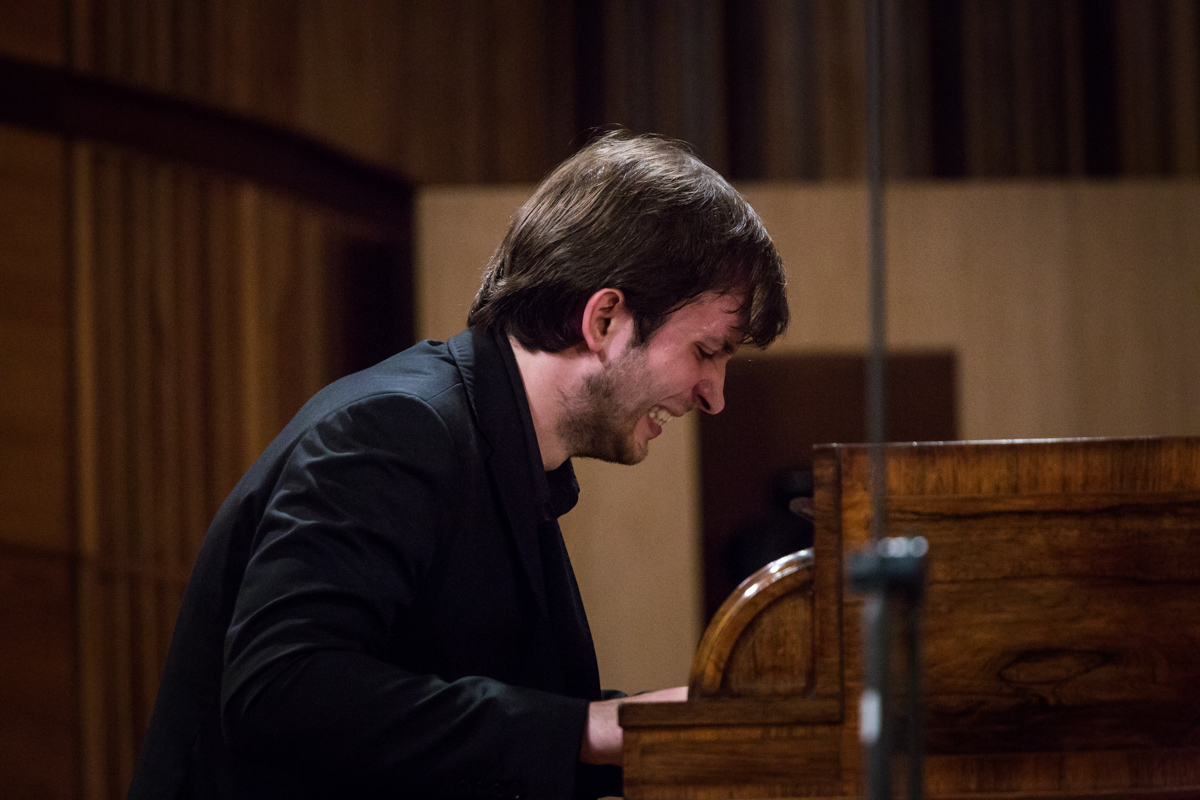
Johann Sebastian Bach
DWK I – Prelude and Fugue in G sharp minor, BWV 863
Karol Kurpiński
Polonaise in D minor
Fryderyk Chopin
Polonaise in B flat major [Op. 71 No. 2]
Fryderyk Chopin
Etude in F major, Op. 10 No. 8
Fryderyk Chopin
Ballade in F major, Op. 38
The Bach on the 1838 Erard was rather too straightforward for my taste as were many of the approaches to Bach in this competition so far. On a recent visit to the Bach Museum and Archive in Leipzig I became graphically aware just how highly emotional in his work and turbulent employment relations and productive a man in private life Johann Sebastian actually was. This deep emotional side of his private life is plainly expressed in the passionately felt Cantatas. Why should this not be inescapably present in his keyboard writing even if the works had a mainly pedagogical intention. However I found his Kurpinski very attractively stylish and idiomatic – highly enjoyable and of period. The Chopin Polonaise although it opened rather heavily was expressive and poetic in such a youthful way. The tone he produced from the Erard was round and richly satisfying.
The Chopin Etude I found far too rushed and unsatisfying for the same reasons outlined above. The Ballade could have possessed more childish innocence in the opening but I liked the strong contrast of the storm of emotions unleashed. He built the narrative drama well yet I still desired more passion and urgency. Not too academic please!
5:35 PM Łukasz Chrzęszczyk (Poland)
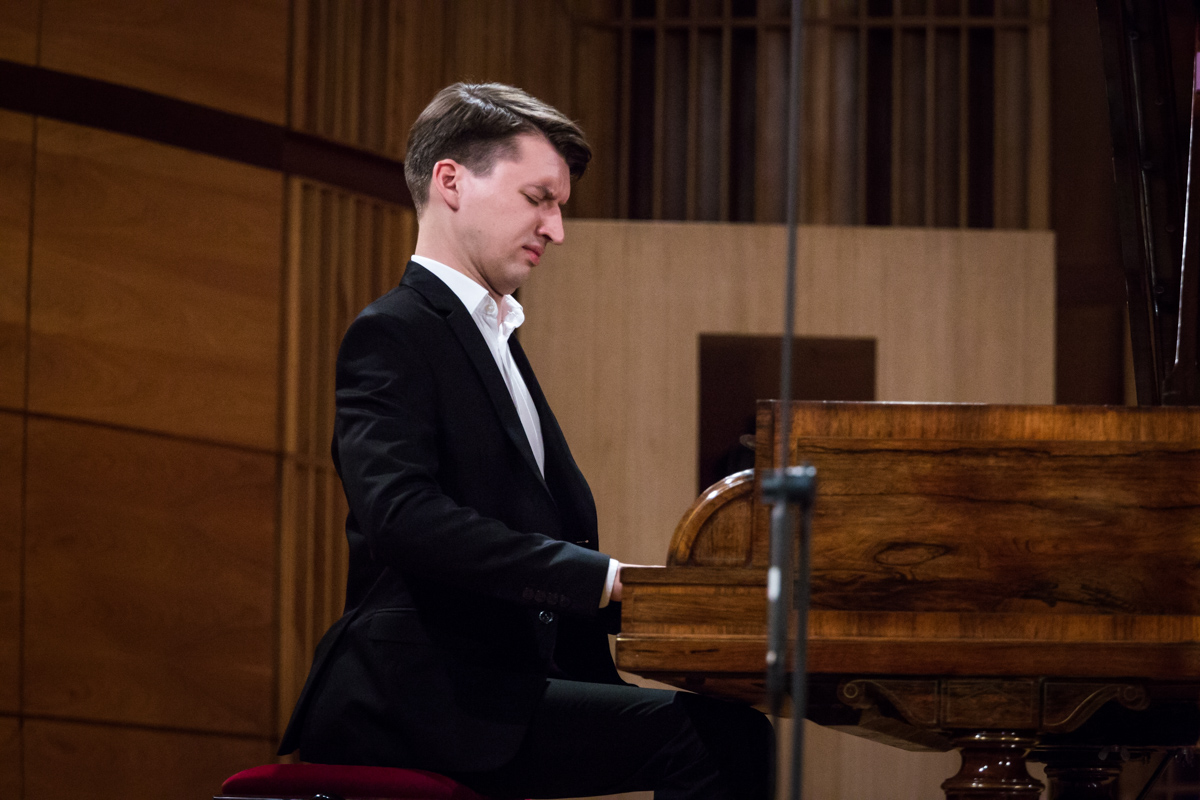
Johann Sebastian Bach
DWK I – Prelude and Fugue in C sharp minor, BWV 849
Fryderyk Chopin
Polonaise in B flat major [Op. 71 No. 2]
Maria Szymanowska
Polonaise in F Minor
Fryderyk Chopin
Etude in G flat major, Op. 10 No. 5
Fryderyk Chopin
Ballade in A flat major, Op. 47
He opened with Bach on the 1838 Erard and although he has a pleasant tone and touch on this instrument I felt there could have been far more nobility in this great work. He controlled the expression of the polyphony very well. The Chopin B-flat minor Polonaise is such an elegant early work with such an aristocratic demeanor. On the 1842 Pleyel I found his performance both tasteful in the Mozartian sense and was so alluring in sound quality on this fabulous instrument. The Szymanowska too was performed with a surprising degree of elegance and refinement. The Chopin etude was approached with excellent tempo and lovely tone on the Pleyel. There is such superb balance of registers on this instrument, so many sound colours available. This player produces a truly lovely rounded tone, ‘unctuous’ might describe it with a refined and elegant touch perfectly in period. In the Ballade he maintained an understanding of the musical narrative with beautiful cantabile, phrasing, articulation and rubato and some winning flashes of expressive feeling.
6:10 PM Eric Clark (United States)
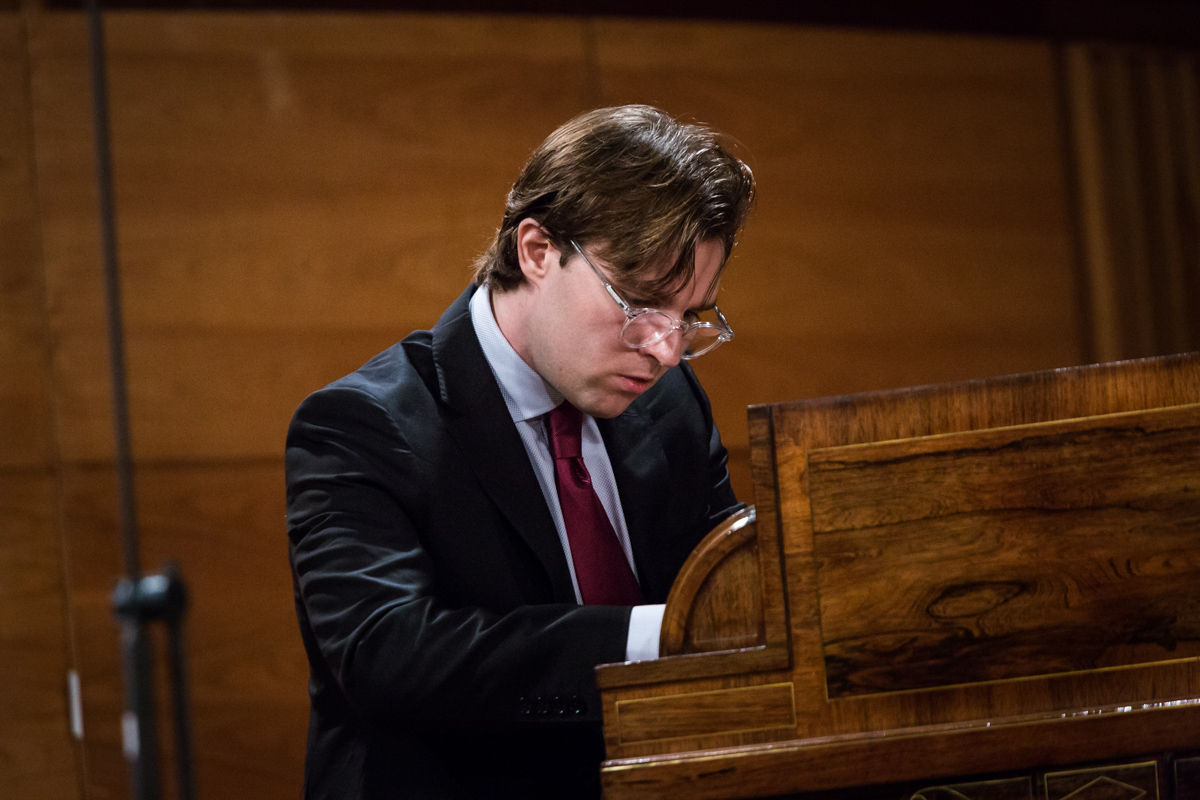
Johann Sebastian Bach
DWK II – Prelude and Fugue in B flat minor, BWV 891
Fryderyk Chopin
Polonaise in B flat major [Op. 71 No. 2]
Michał Kleofas Ogiński
Polonaise “Farewell to the Fatherland”
Fryderyk Chopin
Etude in G flat major, Op. 10 No. 5
Fryderyk Chopin
Ballade in G minor, Op. 23
He chose the 1837 Erard for Bach but again I must confess I found it rather unfeeling for all the reasons outlined above considering Bach as a deeply emotional man. I found his dynamic rather unvaried. The Chopin Polonaise could have retained more lightness and charm as is typical of these early works – they are begging for expressive gestures of the ‘salon’ type with poetry and bon goût rather prominent. The concept of the ‘heroic polonaise’ we are more familiar with had not yet entered his cultivated mind. The Kurpinski was suitably pleasant for such an undemanding work. The Chopin Etude on the 1842 Pleyel was very professionally performed (he clearly has mastered the approach to period instruments) which reflected this pianist’s high level of training. The Ballade on the Erard was rather too emotionally mannered to my taste. But bear in mind that everyone has his own Chopin! I know of no other composer who so divides people emotionally as Chopin, a composer that a listener and his individual interpretation of ‘how it should go’ will defend his view of a work to the death !
7:10 PM Aleksandra Teresa Bobrowska (Poland)
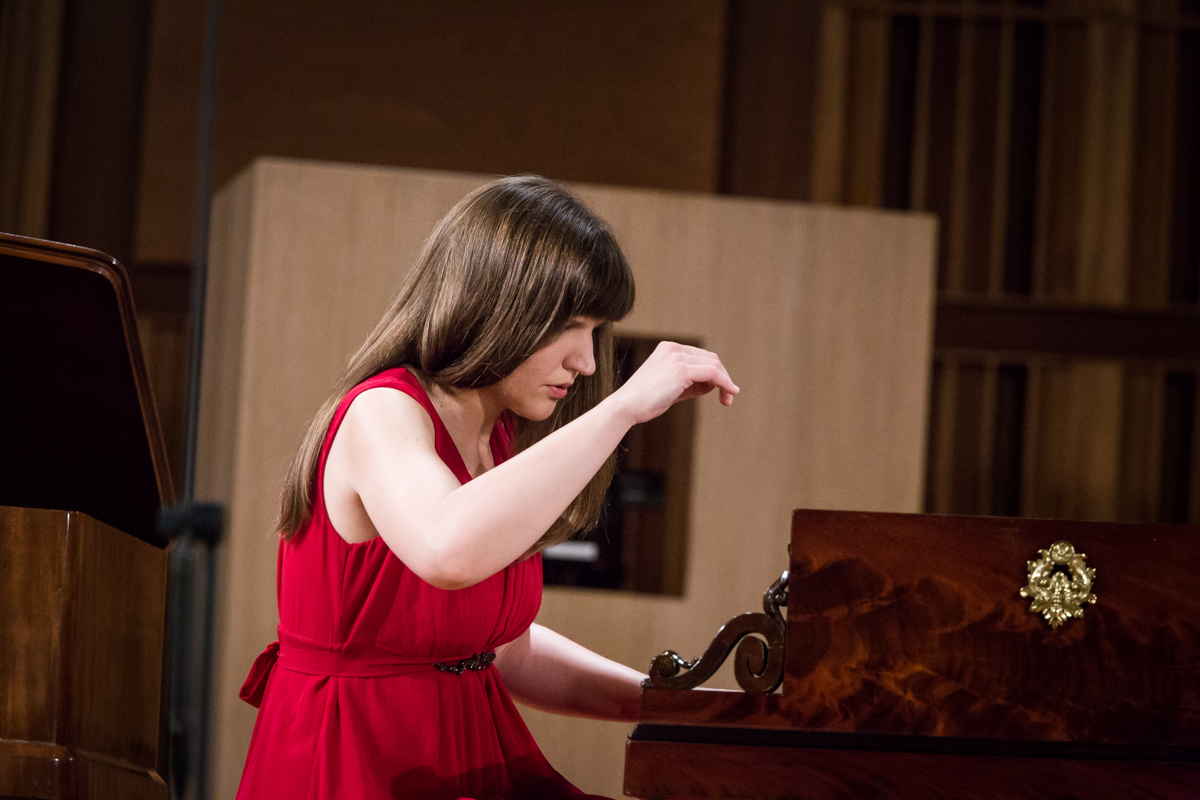
Johann Sebastian Bach
DWK I – Prelude and Fugue in C sharp minor, BWV 849
Fryderyk Chopin
Polonaise in F minor [Op. 71 No. 3]
Maria Szymanowska
Polonaise in F Minor
Fryderyk Chopin
Etude in C minor, Op. 25 No. 12
Fryderyk Chopin
Ballade in G minor, Op. 23
Many of my observations concerning Bach as above still apply. She chose the Broadwood of 1843 but I was not attracted to the tone and her rather heavy touch on this instrument. However in the Chopin polonaise on the 1825 Buchholtz she utilized the colours and different keyboard registers very successfully. Certainly the ‘Polish element’ (as Chopin termed it) was clear and the interpretation was full of winning sensibility and charm. She also added some very tasteful ornamentation which I found affecting and perfectly in period. She produced a lovely ringing tone from this instrument. I found it astonishing how the same instrument can sound so utterly different under different fingers – something not quite so apparent on a modern Steinway.
In the Chopin G minor Ballade she used the different ravishing colors of the 1842 Pleyel very skillfully, particularly the magisterial rhapsodic bass one can produce. This sound world and the emotional connotations and associations in the heart and mind are utterly different to the evocations of modern instruments. She produced a luminous cantabile and in some of the chromatic scales that range over the entire compass of the keyboard, the colours available were displayed like a great rainbow of sound. A very satisfying performance altogether at a high level of accomplishment pianistically and in command of the period keyboard.
7:45 PM Aleksandra Hortensja Dąbek (Poland)
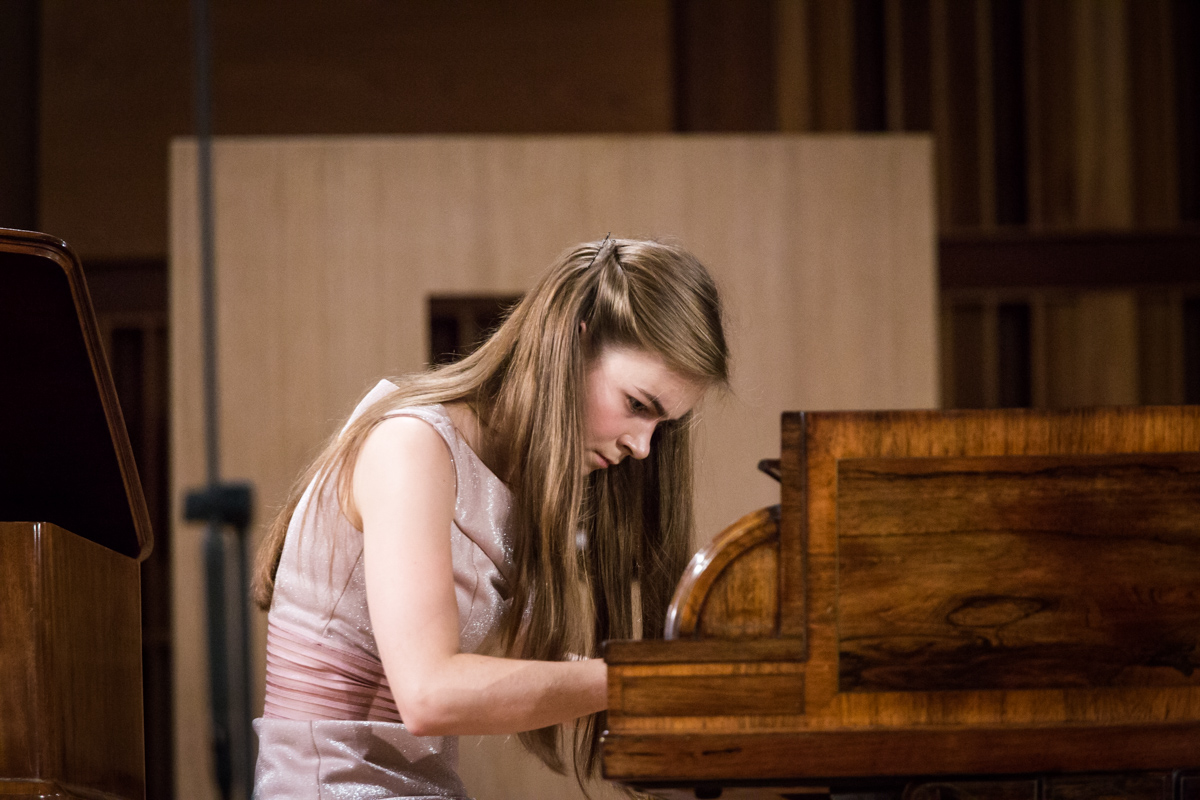
Johann Sebastian Bach
DWK I – Prelude and Fugue in E flat minor, BWV 853
Fryderyk Chopin
Polonaise in A flat major [op. posth.]
Michał Kleofas Ogiński
Polonaise “Farewell to the Fatherland”
Fryderyk Chopin
Etude in C sharp minor, Op. 10 No. 4
Fryderyk Chopin
Ballade in A flat major, Op. 47
This was a highly refined and extremely promising recital. The Bach on the 1825 Buchholtz began for me perhaps rather too slowly and philosophically introverted and deliberate but developed perfectly. Her tone was seductive and her touch like velvet. This long and profound Fugue was built magnificently into an edifice with great control and understanding of the interplay of the complex and demanding polyphony. Again the instrument sounded so different under her hand!
She chose the 1848 Broadwood for her Chopin Polonaise. Such a beautiful piece in her interpretation, civilized life with a few hints of military undertones. What struck one immediately was the tremendous contrast in volume of the Broadwood compared to the more Viennese character of the Buchholtz – the masculine strength and full-blooded English character of these instruments – something that was always commented on in Chopin’s tours of England and Scotland. The contrast with the Pleyel used here in the competition is that between the English (le rosbif) and French character – we know what rivalry, even war, that led to in the past!
Of course I find the Oginski Polonaise on the Broadwood entitled ‘Farewell to the Homeland’ deeply affecting for quite inexplicable reasons, not being the slightest bit Polish but Australian. This was a finely ‘finished’ and beautifully prepared performance. An excellent choice of instrument. On the 1837 Erard she gave an outstanding account of the Chopin Ballade. The elevated musical accomplishments of this tremendously promising talent were evident to me from the first notes.
* * * * * *
As I did not attend the second Inaugural concert on 3 September as the programme was identical to 2 September and I know the approach of both artists to these familiar concertos well.
Inaugural Concert 2 September 2018
7.00 PM
Witold Lutosławski Studio of the Polish Radio
Szymon Nehring
Kevin Kenner
Orchestra of the Eighteenth Century
Grzegorz Nowak
PROGRAM
Pawel Szymanski
À la recherche de la symphonie perdue
This composition was a world premiere of a work especially commissioned by the Fryderyk Chopin Institute for the inauguration of this competition. The work was dedicated to the memory of Frans Brüggen who died four years ago. He conducted so many memorable concerts with this outstanding orchestra in past Chopin i jego Europa festivals. I reviewed many of them in glowing terms and they have certainly not been forgotten. The Proustian reference in the title is rather clever and appropriate despite the lack of cake and tea to set us reminiscing.
The work consisted of rather well-orchestrated baroque and nineteenth century ‘symphonic’ reminiscences broken up by many unexpected interruptions and silences. There were also episodes of humorous aleatoric music reminiscent of more contemporary abstract compositions. The effect of this fragmentation for me was as if the composer was tossing and turning in bed in the small hours unable to sleep but fitfully dreaming and searching for, yes, la symphonie perdue. For the listener it was as if sound memory came in snatches of musical interludes of different lengths and densities, perhaps after a particularly impressive orchestral concert by the Orchestra of the Eighteenth Century, shall we say, conducted by Frans Brüggen in the Warsaw Filharmonia. The Orchestra of the Eighteenth Century under Grzegorz Nowak coped well with all the sudden stops and starts and were clearly delighted by his lightweight and entertaining sense of humour as well as his more serious and heartfelt memories.
Fryderyk Chopin
Piano Concerto in F minor op. 21
The eminence of Kevin Kenner as a pianist needs no introduction after winning the First Prize in the 1990 International Chopin Competition in Warsaw (together with the Peoples’ Prize and prize for the best Polonaise), the recipient of the International Terrence Judd Award in London, and the Bronze Medal at the Tchaikovsky International Competition in Moscow (together with the prize for best performance of a Russian work). This is quite apart from appearances with distinguished world orchestras and conductors and his important academic, masterclass and professorial teaching work.
He has developed an enviable experience playing period pianos and I was very much looking forward to this performance. Even more as he chose a Pleyel instrument (1846) from the collection which as everyone knows Chopin considered the non plus ultra of pianos. These instruments provide challenges for a pianist that an Erard does not pose such as the single escapement mechanism (Sebastian Erard invented the modern double escapement) which limits the speed of repetitions and greater control over the sound one produces. The seductive colours and range of dynamics are alluring.
Together with the Orchestra of the Eighteenth Century, this was a superb performance of the first concerto Chopin wrote. This orchestra is ideal for the realization of Chopin’s much discussed orchestration, in particular the beauty of the original instrument woodwind section. One never felt any limitations of inspiration here and the dynamic balance between piano and orchestra Kevin Kenner and the conductor Grzegorz Nowak achieved seemed ideal. There was such charm, grace, taste and elegance in this rather understated view of the work that I found absolutely appropriate to the unpretentious style brillante keyboard writing.
The opening Maestoso movement put one directly in mind of Hummel who so influenced early Chopin, although the melodic invention and development could have been written by no-one else. The Larghetto, arguably the most lyrical and beautiful love song of illusioned youth ever written, was deeply affecting. Chopin was 19 and studying at the Warsaw School of Music when his eye first embraced the soprano Konstancja Gładkowska. The yearning of a sighingly distant, unrequited, possibly undeclared love was beautifully understood by Kenner and the orchestral accompaniment. The con forza and appassionato were never exaggerated. Molto con delicatezza as directed by Chopin. The Allegro vivace is a Rondo and had all the vital exuberance of the kujawiak dance.
On a Pleyel, the delicacy and refinement of Chopin fioraturas, his luminous tone, the varied colours of the different registrations the period keyboard can produce (particularly the restrained bass) seduced us all. The ‘Classical’ in the process of transformation into the ‘Romantic’. Kenner allowed the music to speak naturally for itself which magically brought us so much closer to the inspirational source of Chopin.
As an interesting and diverting encore, Chopin’s last Mazurka in F minor Op. 68 No. 4 with some added charming embellishments and ornamentation by Kenner himself.
Fryderyk Chopin
Piano Concerto in E minor op. 11
Szymon Nehring is one of the most gifted and promising pianists of the younger generation in Poland. He is the only Pole to win First Prize at the Arthur Rubinstein International Piano Master Competition in Tel Aviv, one of the most prestigious piano competitions in the world. He has been at the forefront of Polish thinking and inspiration about the future of young Polish pianists ever since.
The E Minor Concerto Op. 11 of 1830, although the first to be published, was the second that Chopin wrote after the F Minor Concerto Op. 21. His rapidly increasing compositional skill is evident. The period of its composition was a period of chronic indecision for Chopin. He discussed endlessly with his family if he should venture out from musically relatively provincial Warsaw to the sophisticated worlds of Paris or Vienna. He wrote with uncanny prescience:
‘I’m still sitting here – I don’t have the strength to decide on the day […] I think that I’m leaving to die’
The concerto was premiered in Warsaw three weeks before Chopin left Poland forever. I speak often of historical context as it is vital to complete the musical picture. Surprisingly, even incomprehensibly for us, there was an intermezzo after the first movement of the concerto (‘thunderous applause’ Chopin wrote) when a singer, one Anna Wołkow, sang an aria by Soliva (a nineteenth century Swiss-Italian composer of opera, chamber music, and sacred choral works appropriately from a family of Swiss chocolatiers). Only then was Chopin able to play the final two movements.
A second singer after the conclusion, the very source of his adolescent romantic yearning, was Konstancja Gładkowska. Such poetic moments and reflections transport one out of this blighted world of ours into a more civilized realm of human endeavour.
I thought Nehring extracted much colour from the Erard (1849) with great refinement of touch, articulation and nuance too – I was most impressed with his approach to the period instrument. His control of pianissimo was subtle and moving, perfectly in keeping with the descriptions of Chopin’s own playing which Berlioz described as soft as ‘the playing of elves’ even requiring one to place one’s ear against the instrument to hear him!
The Romance. Larghetto in particular was exquisite tonally with rubato of great sensibility and affecting nuance.
The Rondo.Vivace was spirited and I really felt Nehring is a natural player of such period instruments. He had excellent rapport with the orchestra who are certainly the finest to ever accompany the Chopin concerti. The inaccessible ‘Polish element’ Chopin spoke of was present in abundance. A far superior performance of this concerto to the one he gave during the Chopin competition in 2015 – a curious thing music, ‘this cabbalistic craft’ Thomas Mann once observed.
As a popular encore, the delightful Chopin Mazurka in B major Op.56 No.1 played delightfully and with youthful energy.
On the anniversary of Poland’s regaining of independence the Fryderyk Chopin Institute organized an event of extraordinary character. The 1st International Chopin Competition on Period Instruments took place in Warsaw from 2-14 September 2018. Subsequent editions will be organized every five years. In collaboration with Polish Radio Dwojka or Polish National Radio 2, the Institute presented a full, all encompassing schedule of broadcasts and and critical commentary from period piano and Chopin specialist broadcasters. Some broadcast stages were covered by TVP Polish television.
In this context, restoring the authentic sound of music by Fryderyk Chopin and composers contemporary to him is particularly important. Approximating the original color and mechanics of the instruments the composer had at his disposal permits us to grasp the unique, specific character of Chopin’s music, with its one-of-a-kind articulation and harmonic language, in large measure lost in interpretations on contemporary instruments.
The Competition participants are pianists from all over the world, aged 18 to 35. The Competition jury is comprised of outstanding representatives of the music world whose artistic and professional activity situates them among the most distinguished specialists in the field of historical performance.
The Competition schedule provides for three rounds: the first and second are solo recitals whose repertoire – apart from works by Chopin – will include selected works by Johann Sebastian Bach, as well as polonaises by Polish composers active in the first half of the 19th century. In the third round, the six finalists will perform the Chopin works with orchestre of their choice, accompanied by the legendary Orchestra of the Eighteenth Century, well known to the Polish audience.
The Competition participants have at their disposal period pianos from the collections of The Fryderyk Chopin Institute (Erards from 1838, 1849 and 1858; Pleyels from 1846 and 1854; and a Broadwood from 1843), originals and copies of period instruments brought in by European restorers and collectors. Aside from monetary prizes, the winners will also receive offers of prestigious concerts with the Orchestra of the Eighteenth Century, as well as recording projects.
One of the main programming premises of the Competition is to popularize performance on period instruments. Thus, the expert commentary and coverage on Polish National Radio 2 (Dwojka), similar to the example of the 17th Fryderyk Chopin International Piano Competition, is of particularly importance. There will also be high-quality audiovisual broadcasting of some competition stages via Polish Television. The Fryderyk Chopin Institute is also creating a multimedia platform responding to the needs of music lovers all over the world.
Competition Website
Competition Schedule
| By 1 May 2018
By 30 June 2018 2-14 September 2‒3 September |
Applications deadline
Announcement of the list of participants COMPETITION Inaugural concerts |
| 4‒6 September | Stage I |
| 8‒10 September | Stage II |
| 12‒13 September | Final with the orchestra |
| 14 September | Winners’ concert |
Competition Jury
- Claire Chevallier
- Nikolai Demidenko
- Nelson Goerner
- Tobias Koch
- Alexei Lubimov
- Janusz Olejniczak
- Ewa Pobłocka
- Andreas Staier
- Wojciech Świtała
- Dang Thai Son
Prizes
First prize: 15 000 €
Second prize: 10 000 €
Third prize: 5 000 €
The main prize winners shall be entitled to the title of “Laureate of the 1st International Chopin Competition on Period Instruments”.
The remaining finalists shall receive equal distinctions of 1000€ each.
30 Participants in the 1st International Chopin Competition on
Period Instruments

We know the names of the 30 pianists who will take part in the 1st International Chopin Competition on Period Instruments. The young pianists’ battle will take place from 2 to 14 September at the Warsaw Philharmonic Hall.
The most numerous group of artists admitted to the Competition are representatives of Poland – 16 persons. Beyond this, the Competition’s participants will include 4 pianists from Japan, 2 each from Russia, China and France, and 1 each from the United States, Romania, Belgium and Ukraine.
One of the main programming premises of the Competition is to popularize performance on instruments from Chopin’s era.
Period Pianos – Institute’s Collection
Erard 1838
The instrument was made in Paris 1838. According to the Erard company’s records, it was first sold on 12 December 1838. Mr Forkel and Mr Vigvier of Bordeaux became its owners. The piano’s serial numbers 14214. Made of mahogany wood, the instrument has an ivory keyboard with 80 keys [CC – g4]. All parts are original and in excellent condition, except the felt pads and the strings, which were replaced in the Erard factory in 1922. The action, especially its repetition part, is typical of the period in which the instrument was made. The piano has a beautiful, rich tone and works perfectly well.
Erard Piano [1849]
This instrument was built in Paris in 1849. Marked with the serial number 21118, it is of identical construction to the instruments familiar to Fryderyk Chopin.
Its metal frame comprises a hitch pin-block [the strings are stretched between the hitch pin-block and the wrest pin-block] and six braces [counterbalancing the combined force of the taut strings, reaching up to 20 tonnes]. It is the predecessor of the cast-iron piano frame used today. The keyboard covers a total of 7¼ octaves, as in modern concert grand.
The original, historical substance of the instrument is preserved in its entirety, with the exception of the elements routinely changed with use. The instrument was restored using identical elements, made from the same raw materials and with the same technology, as in the mid-nineteenth century.
[The piano was a gift for the Fryderyk Chopin Institute from the Ryszard Krauze Foundation]
Erard [1858]
The instrument was built in Paris in 1858, marked with serial number 30315, rosewood veneered, inlaid with ormolu frames. It has an iron frame connected with screws, consisting of pinning table and six stress bars, a predecessor of the today’s full iron cast frame. Keyboard compass covers seven octaves (AA-a’’’’), like in modern instruments. The piano is equipped with a typical Erard’s hammer action, a prototype of the today generally used double repetition English action.
Pleyel [1846]
The instrument was built in 1846 in Paris. It has 82 keys [CC – a4]. It was purchased by the Chopin Institute in 2005 from the collection of Chris Maene. The instrument is typical of Chopin’s times. Its original, historical substance is preserved virtually intact, with the original hammers and soundboard. It has a single English action.
Pleyel piano [c.1854]
Pleyel piano no. 20042 (c.1854), from the collection of Adam Zamoyski, straight-stringed, in a case of veneered palisander with rich bas-relief elements of classical decoration, English Pleyel action with single repetition, keyboard range of 6⅔ octaves from CC to a4, possessing una corda and damper pedals. It is almost identical to the ‘petit patron’ model D, that Chopin used 1845-1846 in his flat at 9 Place d’Orléans in Paris. Until 2013 held at the Château du Lude on the Loire river in France, now in deposit at the Fryderyk Chopin Institute.
John Broadwood & Sons [c.1843]
A grand piano (serial no. 16000) made by a renowned English firm whose owners introduced many improvements to the construction of both upright and grand pianos.
Originally ordered from Broadwood by Georges Wildes of Manchester. Rosewood veneered, pie-crust model. Straight-strung, composite frame with six metal stress bars. English single repetition action with over dampers. Keyboard compass C2-f4, 6½ octaves; two pedals, una corda and dampers. According to company archives, twice repaired in 1855.
Fryderyk Chopin played on a similar instrument in a Gentlemen’s Concert held on 28 August 1848.
Fully restored, it has regained its original technical efficiency as a concert instrument. Purchased in 2014 by the Fryderyk Chopin Institute, it now stands in the Birthplace of Fryderyk Chopin in Żelazowa Wola.
Pianoforte Graf [copy of an instrument from c. 1819]
A copy of the Schubertian instrument from c. 1819, made in Paul McNulti’s workshop in 2007. It was commissioned by the Fryderyk Chopin Institute. This type of piano was very popular in the early romantic era. Chopin probably composed some of his youthful pieces on a similar one. The instrument has the Viennese action with the so called single repetition. Unlike modern pianos, its hammers are covered with leather. Most of the strings are from iron wire, except the bass strings, made from brass. The instrument does not have any iron frame. It has four pedals – moderator, double moderator, sustaining and una corda – allowing to get a wide range of both dynamics and tone colours.
Fryderyk Buchholtz [copy of an instrument from c. 1824-25]
This instrument is a copy of a wing-shaped grand piano by Fryderyk Buchholtz of Warsaw from c.1825–1826, held in the Museum of Local History in Kremenets, Ukraine. It was based on the Viennese model which was popular at that time (built by the leading Viennese maker Conrad Graf, among others, and also employed by Polish makers). It was characterised by a case with rounded corners, resting on three turned column legs. The copy made by Paul McNulty is pyramid rosewood veneered, straight strung in plain 2- and 3-string unisons, with a Viennese action, hammer heads covered with several layers of leather, wedge dampers and a 6½-octave keyboard with the compass C1-f4. This keyboard is broader than the original Buchholtz keyboard (6 octaves, F1-f4), with several additional notes in the bass, making it possible to perform the works Chopin was writing in the late 1830s. This piano also has four pedals operating mechanical registers: una corda, moderator, double moderator and damper
Participants
| 1. | Dmitry | Ablogin | Russia |
| 2. | Benjamin | Anfray, d’ | France |
| 3. | Aleksandra | Bobrowska | Poland |
| 4. | Łukasz | Byrdy | Poland |
| 5. | Łukasz | Chrzęszczyk | Poland |
| 6. | Eric | Clark | USA |
| 7. | Aleksandra | Dąbek | Poland |
| 8. | Yoshiko | Furukawa | Japan |
| 9. | Antoine | Grolée, de | France |
| 10. | Katarzyna | Hajduk-Konieczna | Poland |
| 11. | Anna | Hajduk-Rynkowicz | Poland |
| 12. | Naruhiko | Kawaguchi | Japan |
| 13. | Shintaro | Kawahara | Japan |
| 14. | Dinara | Klinton | Ukraine |
| 15. | Agnieszka | Korpyta | Poland |
| 16. | Justyna | Kreft | Poland |
| 17. | Krzysztof | Książek | Poland |
| 18. | Sijia | Ma | China |
| 19. | Elizaveta | Malysheva | Russia |
| 20. | Yui | Nakamura | Japan |
| 21. | Matthias | Nauwelaerts | Belgium |
| 22. | Kamil | Pacholec | Poland |
| 23. | Agnieszka | Porzuczek | Poland |
| 24. | Siying | Qin | China |
| 25. | Tomasz | Ritter | Poland |
| 26. | Joanna | Różewska | Poland |
| 27. | Aleksandra | Świgut | Poland |
| 28. | Ewa | Tytman-Csiba | Poland |
| 29. | Aurelia | Visovan | Romania |
| 30. | Maciej | Wota | Poland |
